
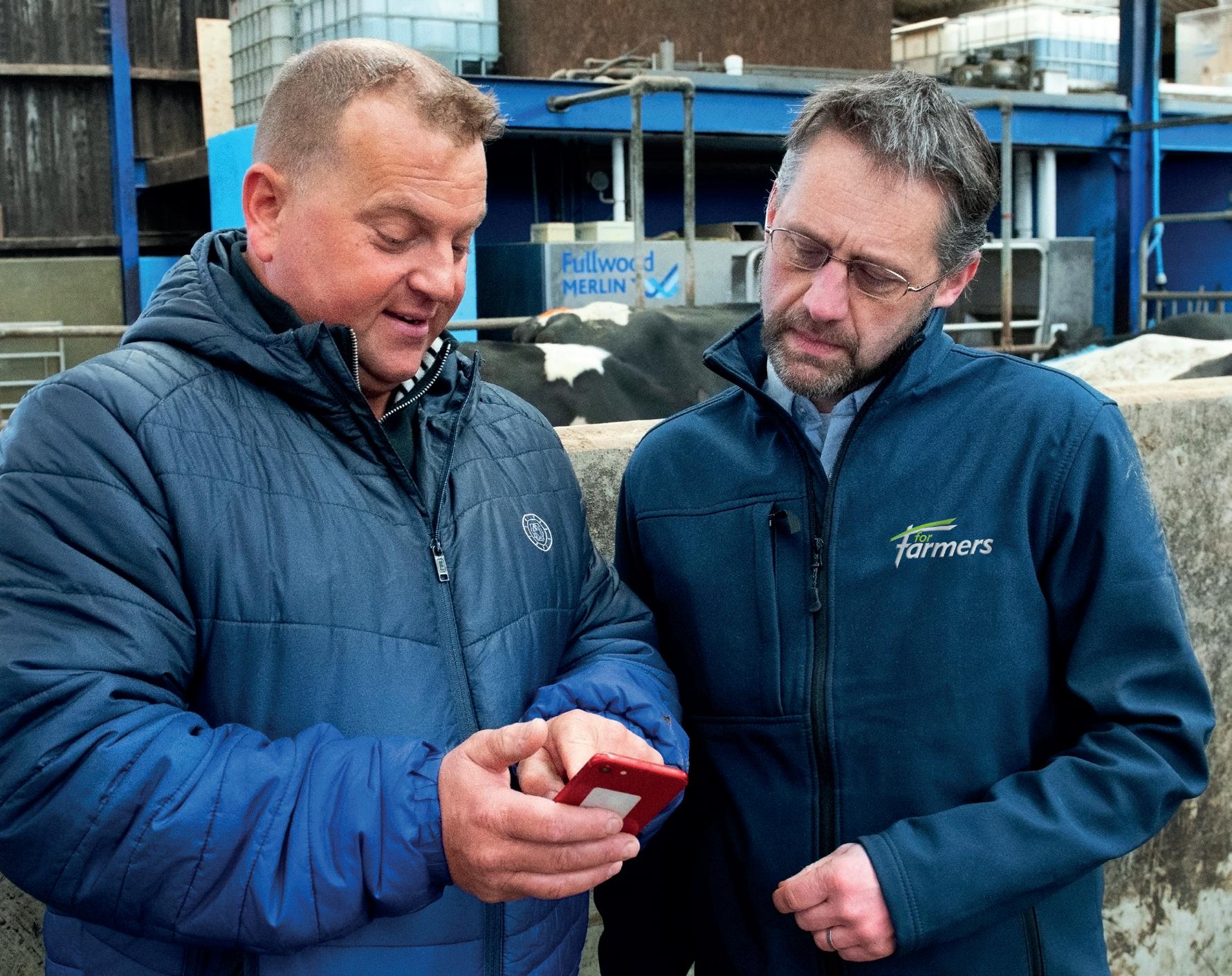
Do you make maximum use of your robot data?
Using ForFarmers OptiRobot our Dairy and Robot Specialists are able to assess whether the interaction between robot settings, nutrition and health is optimal. It often turns out that small changes can make a big difference; Our Robot Specialists can help highlight areas where you can improve with the unique ForFarmers OptiRobot which provides:
9 Greater insight
9 More opportunities
9 Increased returns
For more information speak to your local ForFarmers Robotic Specialist or visit >


0330 678 0982 info.uk@forfarmers.eu www.forfarmers.co.uk
@ForFarmersUK

BREEDING & FERTILITY
Genomic testing, pelvic scoring and genetic gains
Pages 34-44
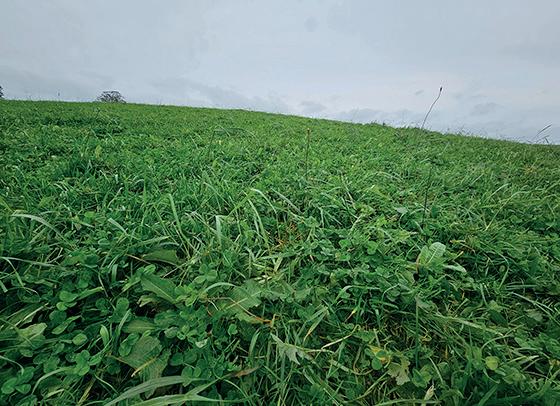
GRASSLAND
Weighing up overseeding and reseeding benefits
Pages 24-33
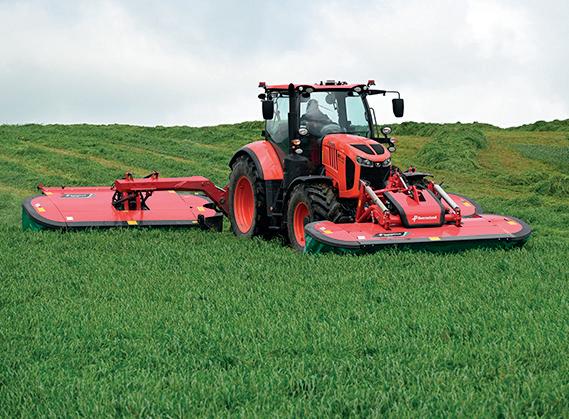
MACHINERY
Highlights from this year’s Welsh Grassland Event
Pages 50-51
MILK PRICES Pages 52-54
TIP OF THE MONTH: Making sense of the new farm support system – p64
20-21 World Dairying Expansion of sheep dairy flock in Greece July 2024 Volume 71 Issue 7
Pages



Explore the wide range of career opportunities beyond farming
Whether you are seeking a new career path or aiming to further develop in your current role Jobs in Agriculture can help.
We are dedicated to connecting the right individuals with the right opportunities. With a diverse range of opportunities available, including on-farm positions, exciting roles in science and technology, engaging marketing and sales positions and more.
Ready to explore beyond farming? It is time to open the gate to your growing career







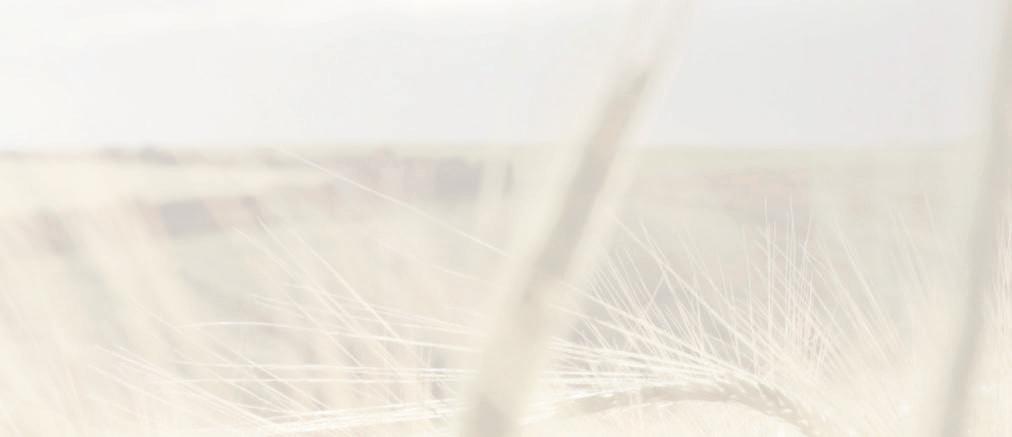
Jobs in Agriculture connects talented individuals with industry leading agricultural roles.
Powered by Farmers Guardian, we highlight agricultural jobs to our extensive network of engaged, jobseeking readers who regularly look to us for quality, trusted, relevant and beneficial content.

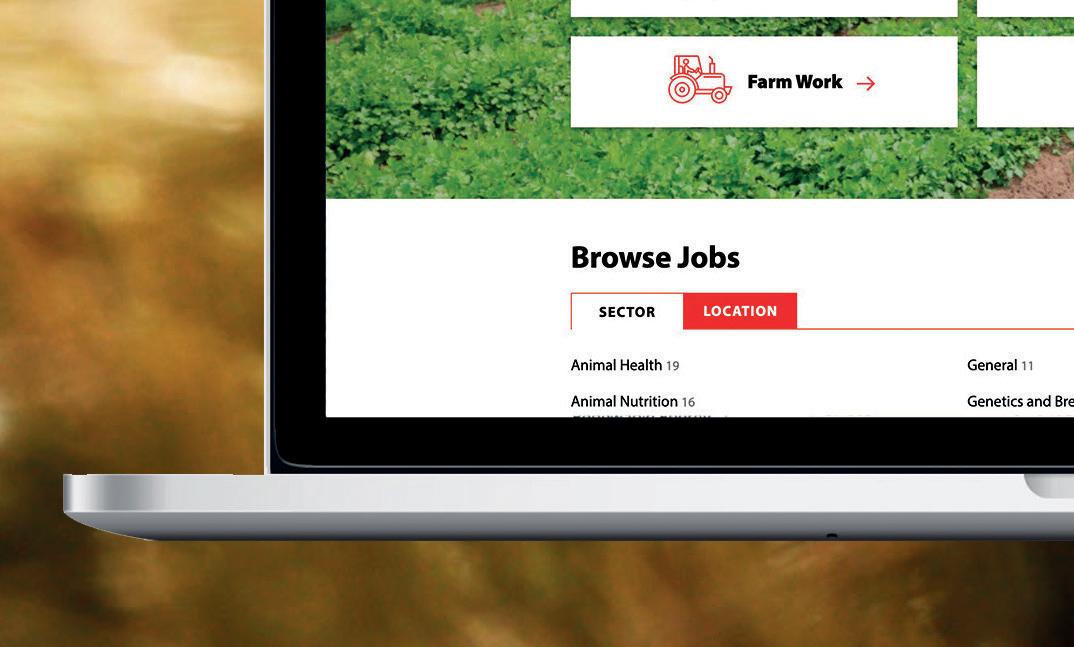


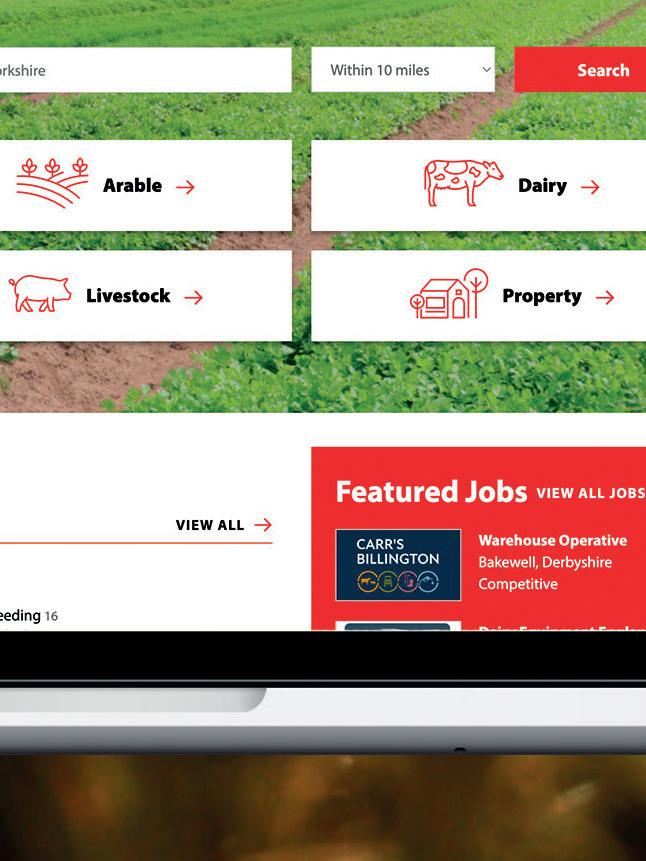





For more information scan the QR code or visit, jobs.farmersguardian.com Check it out! jobsinagriculturefg @JobsInAgriculture @JobsInAgriculture @Jobs_In_Ag
Contacts
Editor Katie Jones 07786 856 439 katie.jones@agriconnect.com
Creative Services
Mike Begley
mike.begley@agriconnect.com
Katie Haydock katie.haydock@agriconnect.com
Picture Editor
Marcello Garbagnoli 07815 003 236 marcello.garbagnoli@agriconnect.com
Sales Gemma Thorpe 01772 799 500 gemma.thorpe@agriconnect.com
Account Manager
Mark Jackson 01322 449 624, mark.jackson@agriconnect.com
Classified Advertisements 01772 799 400 fgclassified@agriconnect.com
Advertising Production
Justine Sumner 01772 799 437 Fax: 01772 796 747 justine.sumner@agriconnect.com
Circulation and subscriptions 0330 333 0056 help@subscribe.farmers-guardian.com
Subscription rates: UK £65 a year Europe: £85 World: £95
ISSN 1475-6994
© Farmers Guardian 2024 All rights reserved. No part of this publication may be reproduced or transmitted in any form or by any means, electronic or mechanical including photocopying, recording, or any information storage or retrieval system without the express prior written consent of the publisher. The contents of Dairy Farmer are subject to reproduction in information storage and retrieval systems.
Dairy Farmer, Unit 4, Fulwood Business Park, Caxton Road, Preston, Lancashire PR2 9NZ
Origination by Farmers Guardian, Unit 4, Fulwood Business Park, Caxton Road, Preston, Lancashire PR2 9NZ. Printed by Precision Colour Printing, Halesfield 1, Stirchley, Telford TF7 4QQ. No responsibility can be accepted by Dairy Farmer for the opinions expressed by contributors.

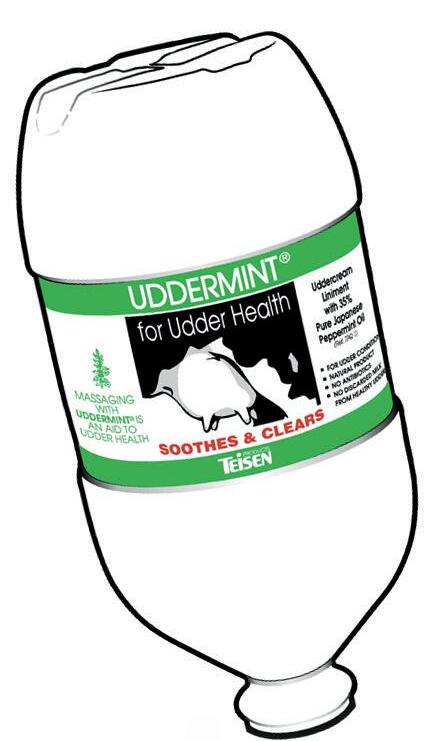


a word from the editor
The General Election is now fast approaching and I, like many people around the country, have spent the past few weeks watching countless TV debates, reading and hearing about the many scandals relating to various MPs vying for re-election, and have tried to make sense of where the priorities of the different parties actually lie.
It is an unse ling time, and who knows what lies ahead a er July 4. But amid all the political mud slinging, farmers will understandably have been wanting to know what it all means for them.
In their manifestos, the main political parties have differing views on how they will support
British farming and, in particular, how a future Government might approach the agricultural budget and bovine TB will undoubtedly strike a chord with dairy farmers.
Number 10
But whoever walks over the threshold of number 10 following the election, we all know that the day-to-day life of farmers will carry on regardless.
In this edition, we take a look at the options for rejuvenating grassland after a wet spring and early summer, and also look at the huge value improving the genetics of your herd can bring in terms of efficiency and sustainability.
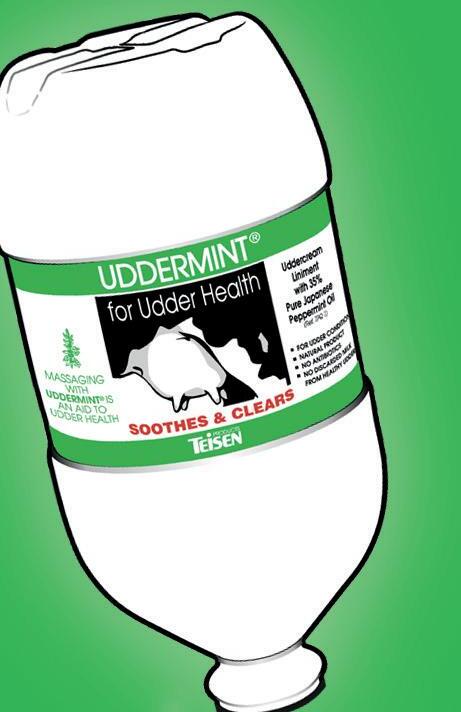


UDDERMINT















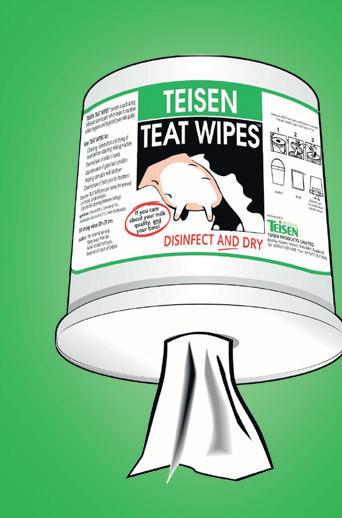

3
® Also available from your favourite merchant... TEISEN TEAT WIPES Improve teat condition Fast milking preparation Milker’s hands cleaned between cows. Rapid cleaning and drying More information at www.uddermint.com JULY 2024
What’s inside?
Food
Genomic
Find out how you can get involved in this year’s 24 Hours in
Highlights from this year’s Welsh Grassland Event 52 MILK PRICES
56 MILK ANALYSIS
Milk volumes from major exporters still down
58 NEW PRODUCTS Round-up of products and updates hitting the market
62 GOOD EVANS ‘He ranked the breed aside the black death –no good to man at all’
BUSINESS CLINIC Untangling the new farm support system
Key

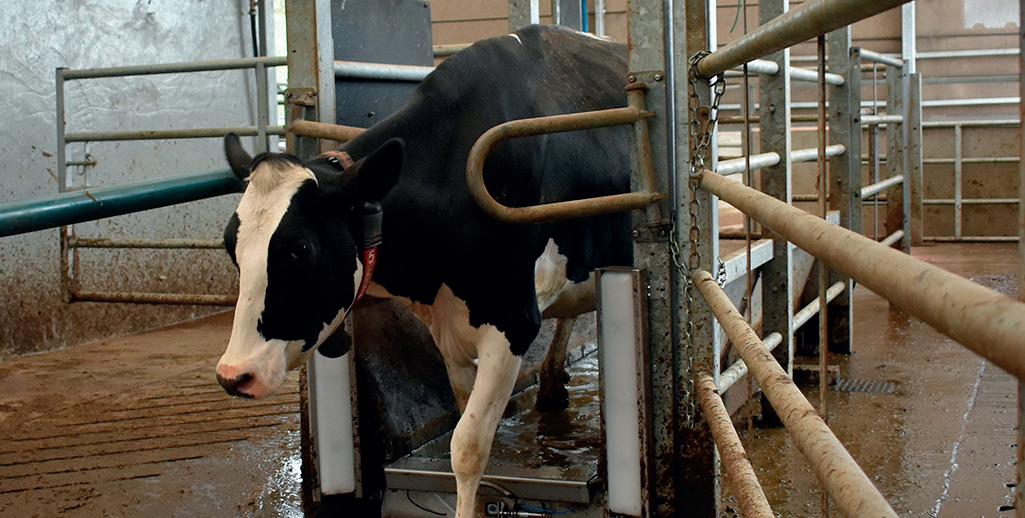
Defra has refuted claims made by the national media that it has issued a raft of new badger cull licences openly flouting guidance from its scientific adviser that further culling could ‘not be justified’.
The Guardian reported 17 new licences had been handed out in June, despite comments from Dr Peter Brotherton, its own adviser on the natural environment and director of science at Natural England, that there was no evidence to support such an action.
The newspaper claimed Dr Brotherton told Defra that while the data backed previous culls, he could find ‘no justification for authorising further supplementary badger culls in 2024 for the purpose of preventing the spread of disease and recommend against doing so’.
However, according to Defra, the issuing and authorisation of badger disease control licences under the existing badger control
Defra dismisses scientific advice Planning reform will sway rural votes
JBritain’s planning system is ‘squandering thousands of pounds’ for rural businesses and will sway how the countryside votes in this General Election.
That was the message from the Country Land and Business Association (CLA), after a new poll found 70% of rural businesses said planning reform would influence their vote on July 4.
The survey, which involved 350 rural business owners, also found nearly three-quarters had been forced to abandon their
The plan has had a beneficial effect, which is why we have extended it
STEVE BARCLAY
policy is carried out by Natural England and Dr Brotherton’s scientific opinion had been commissioned for consideration by its operations team.
Assessment
The department said it had written to Natural England to offer its assessment of the current practical deployment of badger vaccination to help inform the agency’s decision on whether to issue licences.
A Defra spokesperson said: “Bovine TB is one of the most
plans to invest due to planning issues and, of those, nearly half said they had wasted more than £10,000 on projects before giving up.
Manifestos
CLA president Victoria Vyvyan said planning reform ‘cannot afford to slip from party manifestos’.
She said: “The first party which can match our aspirations for a dynamic rural economy will not just secure significant support, they may just win the election.”
NEWS 4
DAIRY TALK Updates from Ifan Roberts and Gemma Smale-Rowland 10 ON FARM Cattle come first at Barncluth Friesians 14 DAIRY MATTERS
8
little
so far, says Jonathan Wilkinson 16 VET’S VIEW Control and prevention of environmental mastitis
FOOT HEALTH 20 WORLD DAIRYING Expansion of sheep dairy flock in Greece 24 GRASSLAND ESTABLISHMENT Weighing up overseeding and reseeding benefits 34 BREEDING
FERTILITY
security has had very
mention
18
&
genetic gains
ANIMAL HEALTH 48 #FARM24
testing, pelvic scoring and
46
50
Farming
MACHINERY
64
66 STAFFING
qualities
JULY 2024 VOLUME 71 ISSUE 7 10-12 On Farm 46-47 Animal Health JULY 2024
for farm employees
claims it ignored in new badger cull row

Speaking at the Future Countryside Conference, Defra Secretary Steve Barclay reiterated the Government’s commitment to its bTB strategy.

di cult and intractable animal health challenges the livestock sector in England faces today, causing considerable trauma for farmers and costing taxpayers more than £100 million every year.
“We have followed a holistic approach with badger vaccination, improved ca le testing, helping farmers improve biosecurity and working towards deployment of a ca le vaccine,
alongside the current badger control policy.”
Speaking at the Future Countryside Conference, Defra Secretary Steve Barclay reiterated the Government’s commitment to its bTB strategy.
He said: “ e plan has had a bene cial e ect, which is why we have extended it within what planning legislation allows.”
However, Peter Hambly,
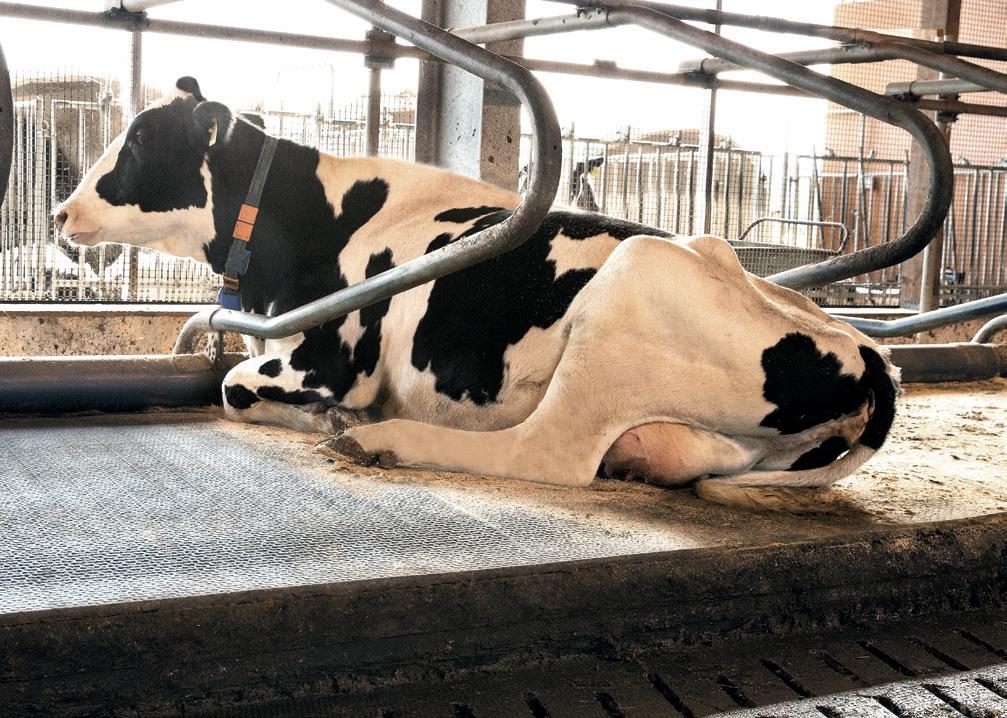
Another jump in adoption of sexed semen
JData collected by AHDB over the 12 months leading up to April 2024 shows that sales of sexed semen increased to 84% of all dairy semen, from the 2023 figure of 76%.
The Holstein breed remains the most popular breed and it averages even higher at 88% of all semen sold as sexed.
Increased use of sexed dairy also enables a higher update of beef semen on the rest of the herd. Sales of beef are for the first time outstripping dairy, with beef now representing 52% of all semen sold to dairy farms.
Calf registrations
executive director of Badger Trust, described the issuing of the licences as ‘shocking’ and damaging to nature.
Immediate stop
He said: “Natural England must follow the scienti c advice and call for an immediate stop to the badger cull. Every day it delays means the slaughter of more badgers and their cubs.”
JGB registrations of calves born to dairy dams totalled 406,000 in the first quarter of 2024. This is up 0.7% on the previous year and the highest recorded figure for Q1.
Despite increased registrations indicating a productive milking herd, GB milk deliveries have been down year on year.
This supports commentary that cow yields are lower, having been negatively impacted by the prolonged wet weather witnessed since October last year.






MADE IN GERMANY
NEWS 5
JULY 2024


In May, Mona Dairy revealed it had been unable to source sufficient short-term funding from its key stakeholders to ‘keep functioning in its current form’.
Mona closure and Muller buyout fuel farmer fears
UK dairy farmers are facing more signi cant upheaval following news that Anglesey-based Mona Dairy has gone into administration and family-run business Yew Tree Dairy is to be acquired by Muller.
In May, Mona Dairy revealed it had been unable to source sufcient short-term funding from its key stakeholders to ‘keep functioning in its current form’.
At that time, the company said it remained hopeful it could secure a new outcome.
But on June 7, the company said Anthony Collier and Phil
Reynolds, of FRP Advisory, had been appointed as joint administrators of Mona Island Dairy – a move which has been described as a ‘bi er blow’ by the Farmers’ Union of Wales, with more than 31 farmers impacted.
Sta ordshire farmer Andy Greaves has set up a group to support farmers a ected by the collapse of Mona Dairy. e group said Mona Dairy had failed to pay farmers money owed, but they had o ered reassurances before the news broke.
Farmers were told they would be paid by interim milk buyer Meadow for any milk supplied, but they were
then told at a meeting on May 30 that as a ‘goodwill gesture’, Meadow would pay farmers the spot price for milk collected if they signed a contract, otherwise payment would be made to Mona Dairy.
No option
It meant some farmers felt there was no option but to sign.
In West Lancashire, 120-yearold Yew Tree Dairy revealed it had agreed to a proposed acquisition by Muller.
NFU Dairy Board chair Paul Tompkins said both had o ered assurances of their commitment to the dairy farmers who supply
them during the ongoing negotiations.
Mr Tompkins said: “We cannot knock the fact that Muller wants to invest in the UK and we also have to recognise that the family behind Yew Tree wanted to take their next step.”
But he also said he had raised the issue with Muller regarding how the company saw the future of the Skelmersdale dairy.
He said: “We need to know how Muller will view its relationship with its suppliers and we need it to be as transparent as possible so farmers know what will be required of them.”
Avian influenza hits more than 67 US dairy herds
J e US Department of Agriculture (USDA) said it is working ‘swi ly and diligently’ to contain the spread of H5N1 avian in uenza virus, which has spread to more than 67 dairy herds across nine states, and so far killed in excess of 92 million chickens, turkeys and other birds.
In March 2024, it was con rmed the disease had spread to ca le as the USDA revealed milk from cows which had fallen ill in the states of Kansas and Texas had tested posi-
tive for H151. Two farm workers have now also been con rmed to have the disease.
e Centers for Disease Control and Prevention insisted the risk to members of the public remains low.
Urgency
A statement from USDA said the US Government was ‘addressing this situation with urgency and through a whole-of-government approach’ and working with
multiple health and farming agencies to ensure the safety of dairy products and human health.
A USDA spokesperson said: “ e USDA has listened to feedback from state partners and industry stakeholders and is building on the Federal Order addressing pre-movement testing by further equipping producers with tools they can use to keep their herds and workers healthy and reduce risk of the virus spreading to additional herds.”
e USDA plans to provide disaster assistance for dairy farmers for the loss of milk production, as well as costs associated with additional testing – a move which has been ‘welcomed’ by the industry. It will also pay farmers to develop biosecurity plans on their farms, provide PPE for workers and to safely dispose of contaminated milk over the next 120 days, with a maximum value of $28,000 (£22,000) per farm.
NEWS 6
JULY 2024
DAIRYTalk
Ifan Roberts is herd manager at Houghton Lodge, Leicestershire, which is one of the farms managed by Evolution Farming. This farm runs more than 1,000 cows on a spring-calving system. Ifan Roberts
“ With much graft and determination we carved out a result
Calving got under way without incident this year at Houghton Lodge and, by the end of February, we had successfully delivered over 60% of our calvings.
But as we made our way into March and watched as the rain continued to fall, we found ourselves asking whether we were in for another washout spring. Another personal concern of mine was that I was also about to embark on the beginning of my Nuffield journey, with the contemporary scholar’s conference in Brazil, and I was worried poor weather conditions could tip the balance for the team I was leaving behind.
Luckily, on our side was increased capacity in our winter cow housing, a ‘revamped’ calf rearing unit, which was capable of comfortably rearing 750 calves on milk with less labour, and a team bolstered with some fresh legs, including vet students. This was bolstered by a capable manager, who is set to succeed me in my role while I take on my Nuffield study and embark on the next chapter in my career. They took the challenge in their stride, leaving me well and truly redundant.
During what felt like a whirlwind three weeks spent in Brazil, I learned a great deal about a country I previously knew nothing about. We saw everything from a small organic farming business farming 21 hectares (52 acres) and selling its produce through a farm shop to a company farming more than 600,000ha (1.48 million acres).
And as scholars from around the globe engaged with the Brazilians, we found ourselves talking about very similar challenges, including succession, climate and weather, labour shortages and commodity prices. We are all very much in the same boat.
Eagerness
Another standout for me in Brazil was the farmers’ eagerness, especially in cropping to make full use of new technologies to drive efficiency and reduce their carbon footprint. It was apparent to me that businesses which were making the best use of the technology available had a real competitive advantage on driving efficiency.
As I returned to the farm in late March, I found it more or less how I left it. Conditions were wet and miserable, but the team was defiant and had continued to deliver calving according to plan. We were trying our very best to introduce grazed grass into the diet, as we normally would at this time, but found ourselves dealing with muddy teats,
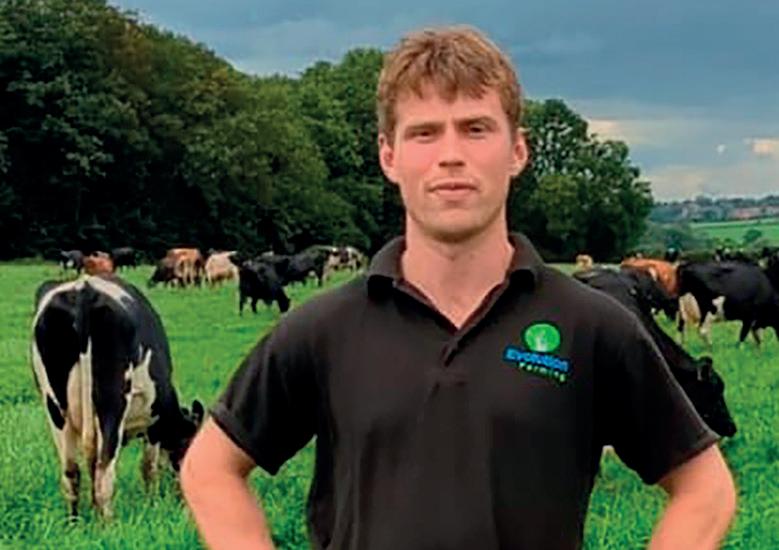
poached gateways and wet tracks, causing some mobility issues which needed correcting swiftly.
During April, fatigue became a real problem for us, especially for the younger team members, who had not faced these kinds of conditions before. Keeping a positive mindset was paramount and with much graft and determination we carved out a result.
This year I began the search for my own farming opportunity. I have spent seven years working at Evolution Farming and, during this time, I have developed my skills as a manager and have been given the opportunity of growing my own herd of cows alongside my day job. It has been a dream of mine to have a farming business of my own. For years now I have naively assumed that if I built up my own herd of 300 cows, an opportunity would just come up – this has not been the case.
I have put business plans together for a number of opportunities and unfortunately, even with sufficient support and resources so far, none have come to bear fruit.
This, I believe, is for a number of factors, including competition from very well-run established farmers with great track records, landowners’ objectives, changes in Government schemes, such as the phasing out of the Basic Payment Scheme and the introduction of the Sustainable Farming Incentive, impacting rents and my lack of track record as an established farmer.
I have recently stepped up my efforts by networking as much as possible, advertising and scrolling the internet looking for openings.
This for me also begs the question of how many other young individuals like me are out there struggling to find their own footholds in farming, and whether there is more which could be done to encourage more opportunities to come available?
8
JULY 2024
Gemma Smale-Rowland
Fourth-generation farmer Gemma Smale-Rowland farms with her parents at North Petherwin Farm, near Launceston, north Cornwall, where they milk 120 pedigree Holsteins under the Glebewin prefix. She established the Cornish Moo brand in 2018 and was one of the first farmers in the country to install an on-farm milk vending machine.
“ A small barbed wire cut led to a trip to A&E and resulted in sepsis
It has been a late season here in Cornwall, with the rain and cold weather delaying the progress of everything. We were three weeks later than normal cutting silage and the abundance of grass we had through winter suddenly slowed up as ground temperatures were just so cold.
With being a smaller family farm, we always find it hard to get the contractor to do drilling when conditions are right. This year, with everyone seeming to be behind too, we decided to go and buy a small air drill to use ourselves.
I appreciate this is a cost and we still have to put labour and tractor to it, but it has allowed us to catch the spells of good weather and get seed in the ground. There is no maize for us this year as we just didn’t have the correct fields to rotate. Instead we have opted for a beans and barley wholecrop. I will keep you posted on how this works out.
As you all know, my husband has an obsession with buying store lambs well past the deadline I give him. The aim is to get them turned around before losing our grass keep. But that conversation always seems to go in one ear and out of the other, something I am sure many wives of farmers can relate to.
Turnout
However, this year wasn’t like normal, as cows were turned out late. This meant my husband got very excited and bought too many lambs too late, which led to an awkward situation where we had lots of hoggs left and no keep. So we took the decision to shed feed them on hoppers. It has definitely been an eye-opening experience and has led to a number of challenges.
This is definitely not a game you want to play if you are slightly nervous, as you definitely have to hold your nerve with cake going in and nothing coming out very quickly.
Having now cleared the backlog and worked out the margins, it was 100% the correct decision to make, as we have seen some of the best graded lambs we have ever sold and there was still profit out the other end, for this year at least.
I think last time I wrote we were heading to the final qualifiers for my son to be selected to represent GB at the Europeans and world championships in universal trench shooting.
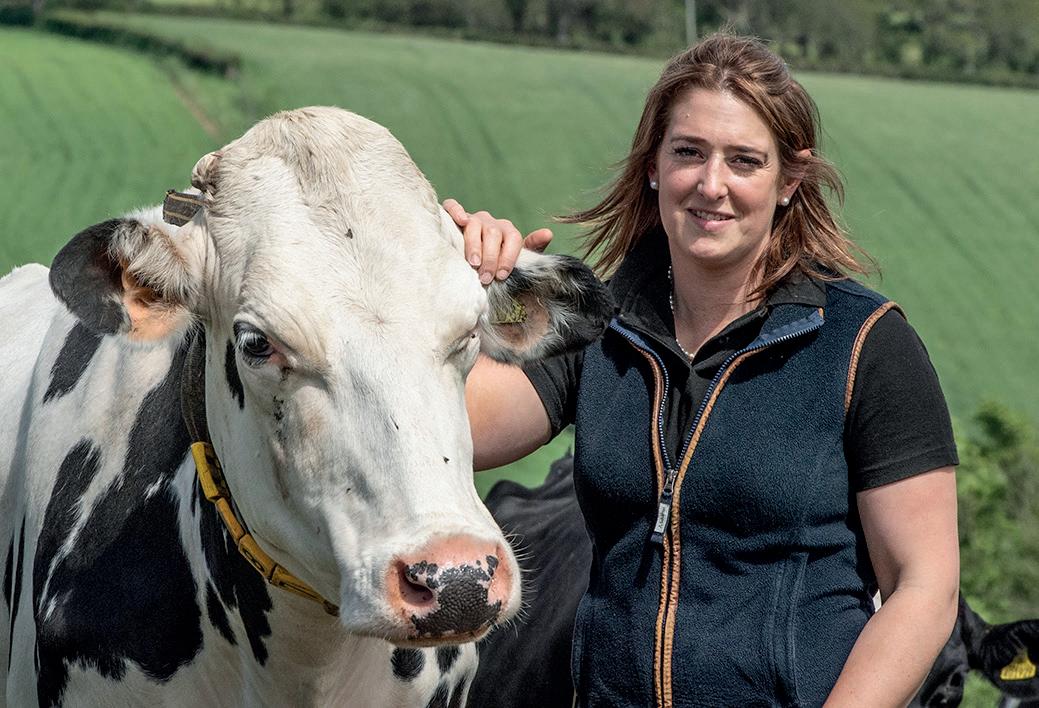
I am incredibly proud to say that despite missing the first three birds out of the trap on the last 25, not only did he qualify, but he also won the Junior English open that weekend as well.
It gives us all great pride watching our children succeed in whatever their chosen discipline is. When we live busy lives as farmers it is sometimes the small things which give us the biggest fulfilment.
One for us all to consider and keep in the back of our minds when working long and hard hours with the farmers’ mentality to ‘just keep going’ is sepsis.
This is something I had heard about, but never really thought much about or ever knew the symptoms of until three weeks ago.
A small barbed wire cut for my husband Craig led to a trip to A&E and resulted in sepsis. Two weeks later he is still in hospital and only just turning the corner.
I have just realised how close he really did get to the end and all from the smallest cut, which we gave little consideration to in the beginning.
I know this is an extreme circumstance and will only affect a very small number, but as farmers we should be mindful of the danger our jobs bring.
By looking out for the symptoms of sepsis, which can be found on the UK Sepsis Trust website, we might be able to help prevent a serious illness of one of our loved ones or friends.
For now let’s hope for some sun and heat, and when I write next time I hope we are having a lovely late dry autumn. Fingers crossed.
rFor more details about sepsis, visit sepsistrust.org
9 DAIRY TALK
JULY 2024
Cattle come first at Barncluth Friesians
The Barncluth herd has recently been named as British Friesian Herd of the Year by Holstein UK. Lynsey Clark visited the herd to find out more.
The countryside surrounding Cromlet Farm has changed dramatically in the 125 years since the Dunbar family rst began milking there. But like the generations that farmed before her, Roberta Dunbar keeps the cows at the heart of the dairy business, which she runs alongside her partner Gordon Smith on the outskirts of a built-up area near Glenboig, North Lanarkshire.
e couple, along with their son James (13), currently milk 90 cows through an 8:16 herringbone parlour. But this is due to change in a few months when they are set to install a robotic milker to help ease the workload, which has increased since opening an on-farm milk vending
machine, and to compensate for the di culty in nding reliable sta .
Farming was not the original plan for Roberta, but when her dad, Jim Dunbar, took ill in 1987, she returned home from college to help.
At 19 years old, she threw herself into the task, and by the time her dad sadly passed away in 1995, she was well equipped to take on the running of the business.
Pedigree
She gradually upped the numbers and graded the herd up to pedigree, choosing the Barncluth name as a pre x a er Barncluth Estate, which the farm was once part of before Roberta’s grandfather bought it in 1960.
She says: “I did have other plans

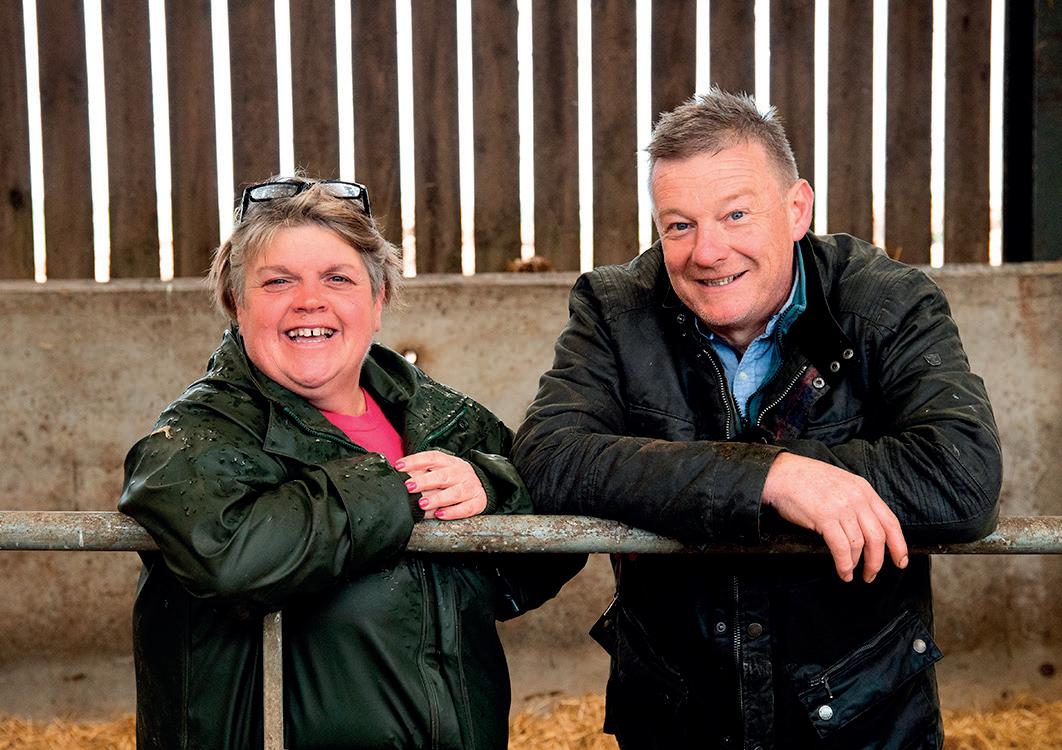
for my career, but I do not regret my decision to come back home. I just put my head down and ploughed my furrow and that is the way I have continued to work.
“My dad always said: ‘It does not ma er how fancy the sheds are, it is what comes out of them that is most important’. e ca le always came rst and they still do.”
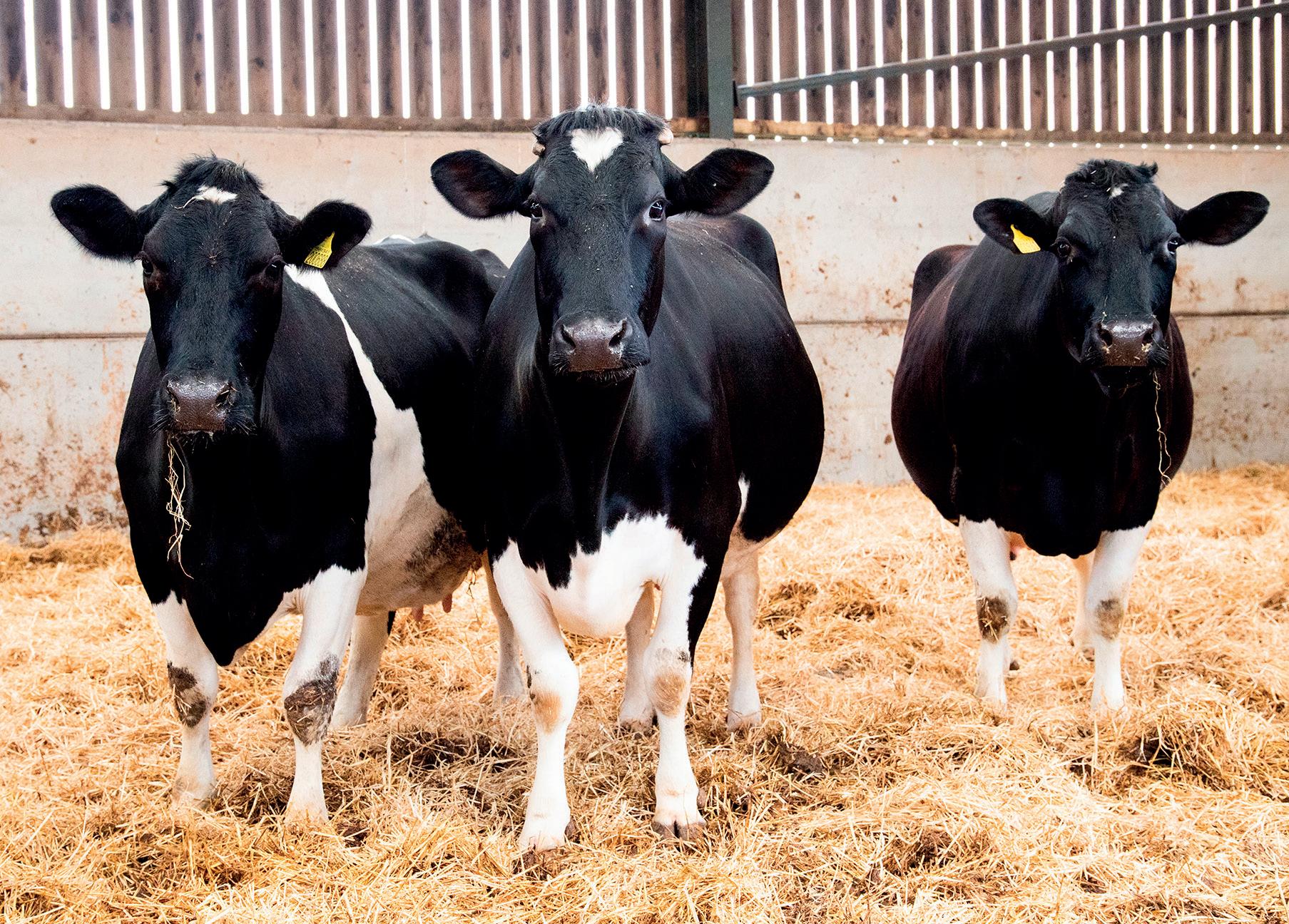



Friesians really suit our land; they are less labour-intensive than other breeds, plus are easily managed and easy to get back in-calf, says Roberta Dunbar.

While other dairy breeds may produce higher yields, Roberta says there was never any temptation to sway away from Friesians.
She says: “Cromlet is a great grass-growing farm, but it is cold and wet so we need hardy, long-lasting cows. Friesians really suit our land; they are less labour-intensive than other breeds, plus are easily man-
Farm facts
rCalves are reared on whole milk until they are 10 weeks old, when they then move onto a calf mix and haylage
rFriesian bull calves not being kept for breeding–they are either sold privately to regular buyers in batches, kept for a bit longer and sold as breeding bulls, or kept and sold later as bullocks
rThere is good demand for the beef-bred heifers, which are sold from the farm, and the beef cross bulls are also sold privately
rDry cows are fed haylage and dry cow cake in a separate transition shed
JULY 2024 10 ON FARM
Roberta Dunbar and Gordon Smith

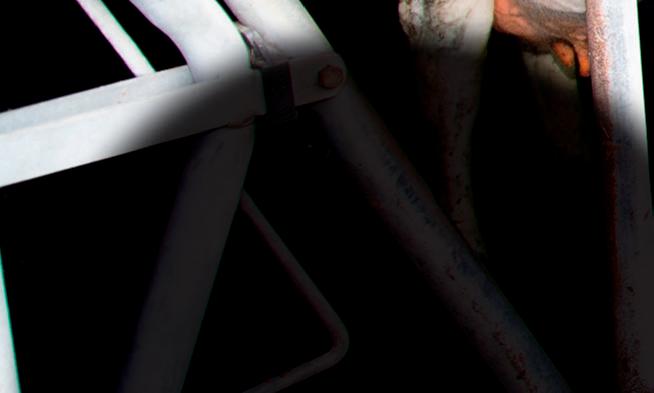


aged and easy to get back in-calf.
Longevity and good feet and legs are priorities for us, and the Friesians de nitely have those. ey suit the place and they suit me.”
Currently, the herd has an average yield of 7,800kg, although that is down from 8,200kg a er a
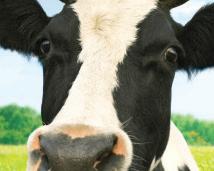


di cult year where the rst cut of 40 hectares (100 acres) of silage was too dry and the second cut of 28ha (70 acres) was too wet.
“ at really a ected the cows and the yields are down as a result,” says Roberta.
“It is so important to get the silage right, but it is not easy with our weather.”
Nutrition
For the past 29 years, she has taken nutrition advice from John Rodgers, of Davidsons, with the cows currently

fed an 18% protein dairy compound.
Roberta says: “We never go above 18% protein, as we have found it is not good for their feet.”
Everything is arti cially inseminated, with a Hereford bull used as a sweeper. ey aim to calve at two years and three months, as they have


























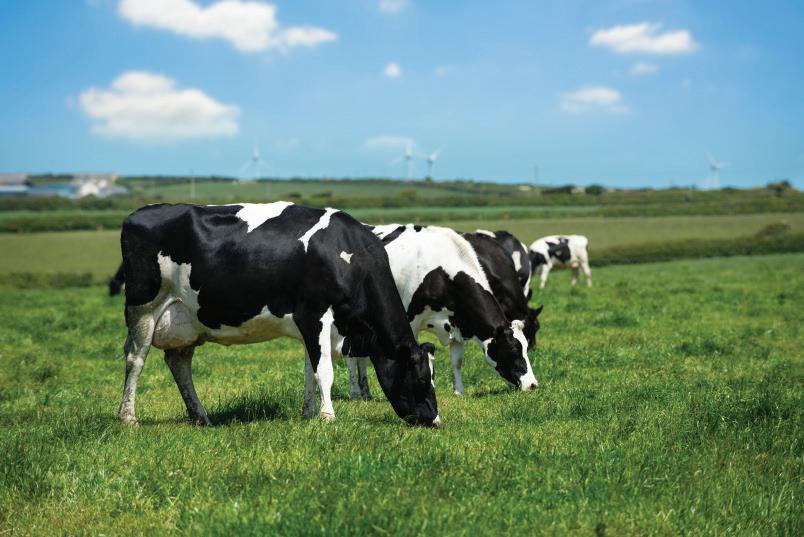




















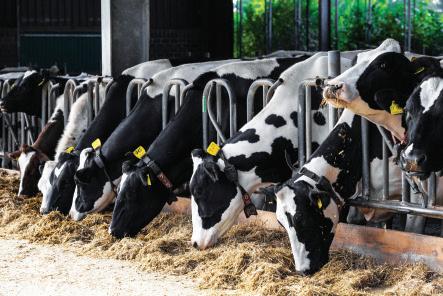








































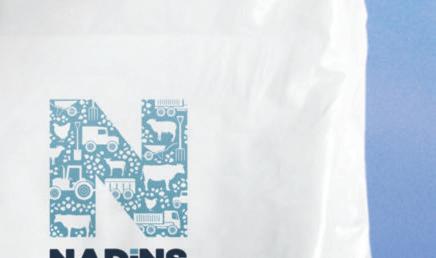





































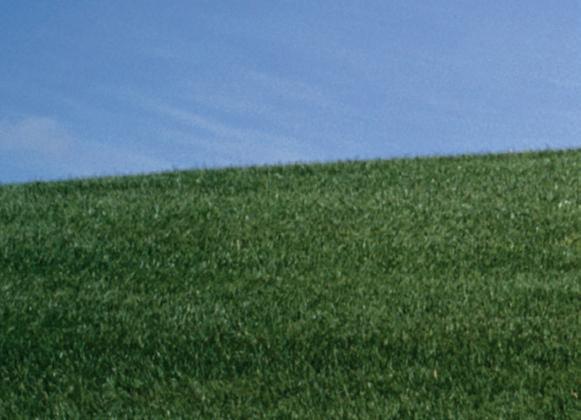






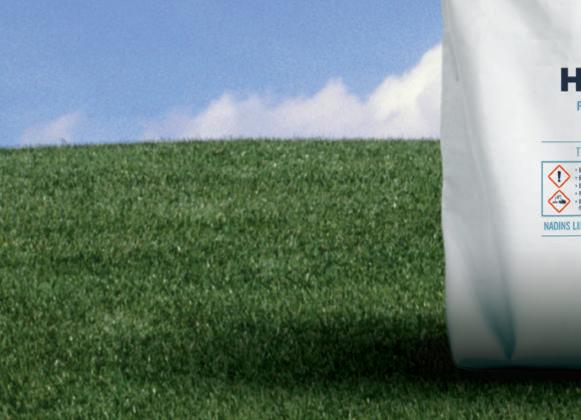










JULY 2024 11
The cows are fed a silage-based diet, with two cuts of silage taken yearly.
ON FARM
I just put my head down and ploughed my furrow and that is the way I have continued to work
ROBERTA DUNBAR
found from experience that the cows last longer if they are not pushed to calve too early.
Cows are out from the end of April until October, and strip grazed using electric fencing. When the robot arrives in September, Gordon says they plan to keep grazing the ca le using paddocks.
He says: “We are currently adapting the steading to suit the robot system, including extending one of the current sheds.”
In preparation for the robot, the plan is to sell this year’s crop of August-calving heifers from home, which will bring the milking numbers down to a manageable amount for one robot.
Roberta says: “We see the robot as a way forward for us and the farm. It is not a huge farm – we own 100 acres and rent a further 80 – and pasteurising and selling our own milk through the vending machine is another way for us to make the most of the size of farm we have.
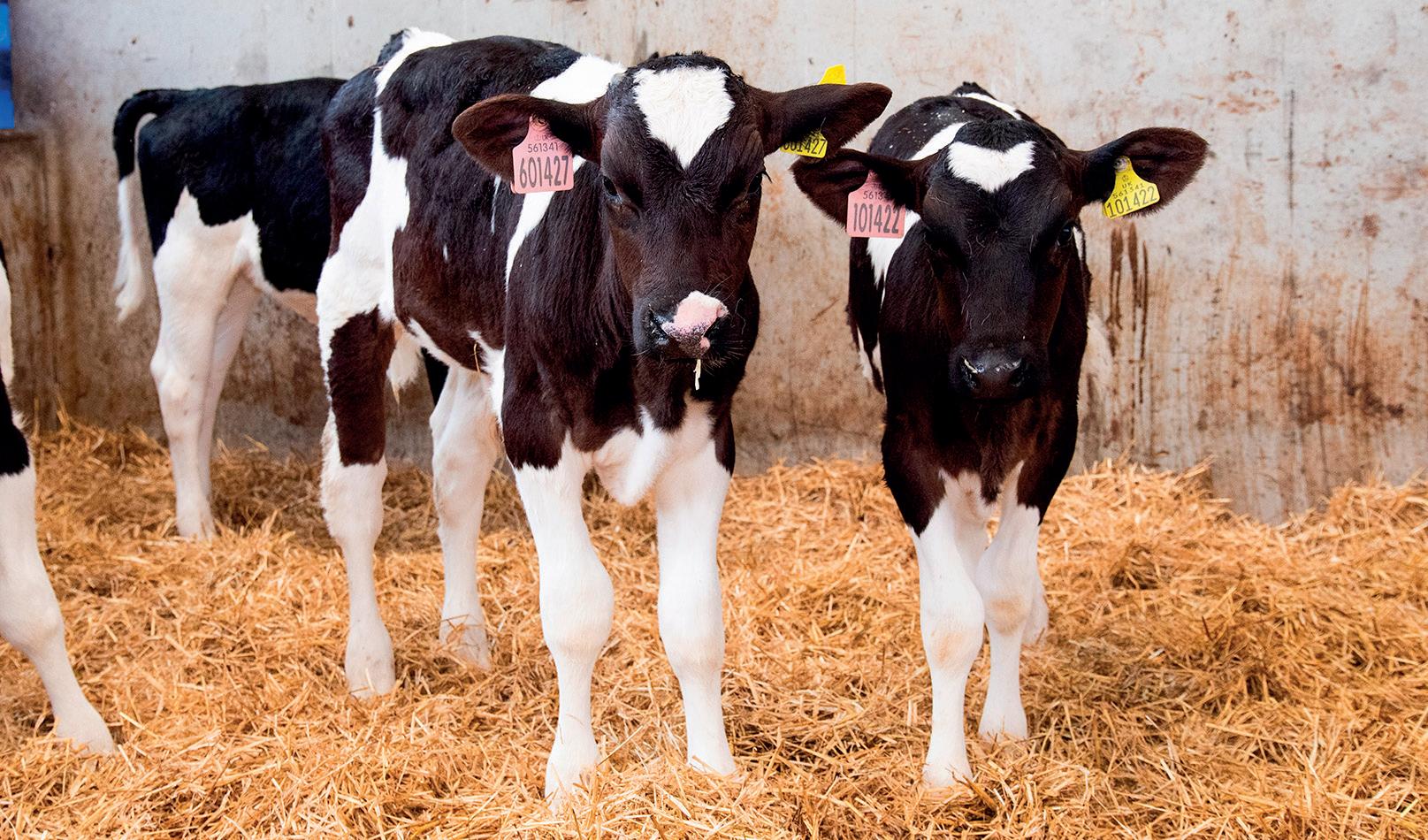
Artificial insemination is used for breeding, with a Hereford bull as a sweeper.

“If James decides to come home to work, we will hopefully have created a system that is manageable without relying on unreliable sta .”
Milkshakes
e farm’s close proximity to the local towns has proved bene cial when it comes to selling their own milk. ey have built up a busy, regular customer base for the milk and milkshakes – branded as ‘Dunbar’s Daisies’ – while branching out into other locally produced foods, including beef and cakes, has increased the appeal.
Roberta says: “We have go en to know a lot of the customers and they love coming in and being able to see the cows and the calves.
“It has been hard work to get it going and it does require a lot of our
time, dealing with customers and maintenance, but we are lucky that it has been so well supported. Hopefully the robot will help balance the workload.”
Conscious of herd health, Roberta and Gordon run a closed herd and do not show the ca le, for health reasons and a lack of spare time.
e herd stems back to three main families – all daughters of a bull that Roberta’s Dad used named Terling Prophet. Another in the early days that le his stamp was the home-bred Barncluth Arrival, which was used at home before being sold.
“We were so pleased with his heifers that we ended up buying him back, and took a lot of semen o him too,” says Roberta.
When it comes to choosing bulls
The on-farm shop sells milk and milkshakes through a vending machine, plus other locally produced foods including beef and cakes.
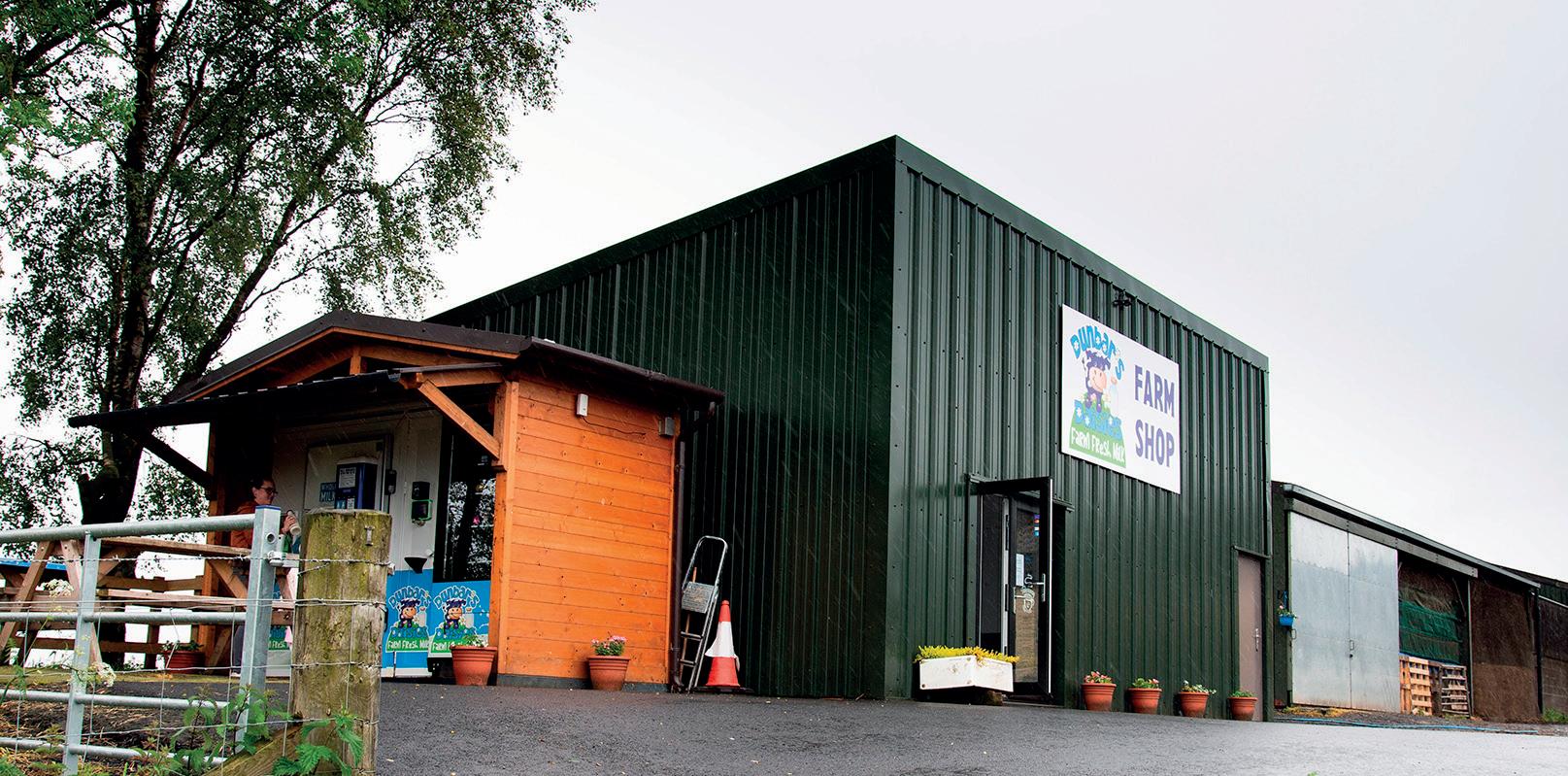
for arti cial insemination, Roberta says: “I never put all my eggs in one basket. We use four or ve bulls each year, as you never know how they are going to breed.
“I think it is far be er to spread the risk and then go back and use ones that have been successful.
“I tend to follow my own beat –then I have only got myself to blame if it goes wrong.
“ e cows have gradually changed over the years; they are more upstanding now, but the basics have always been the same – the ability to milk and good feet and legs.
Classification
“We classify all the heifers every year – the good and the not so good – to give us a clear indication of how the bulls have bred.”
ey certainly impressed enough to be awarded the title of British Friesian Herd of the Year by Holstein UK recently: a decision based on a combination of classi cation and production. e Barncluth Arrival cows have all classi ed particularly well, with some of those in their sixth to eighth lactations.
Roberta says: “We just keep our heads down and work away, so we never expected this. It is a really special award to win though, especially as it is not a competition that you enter; it is based solely on the performance of the cows. e girls have done this themselves.”
JULY 2024 12
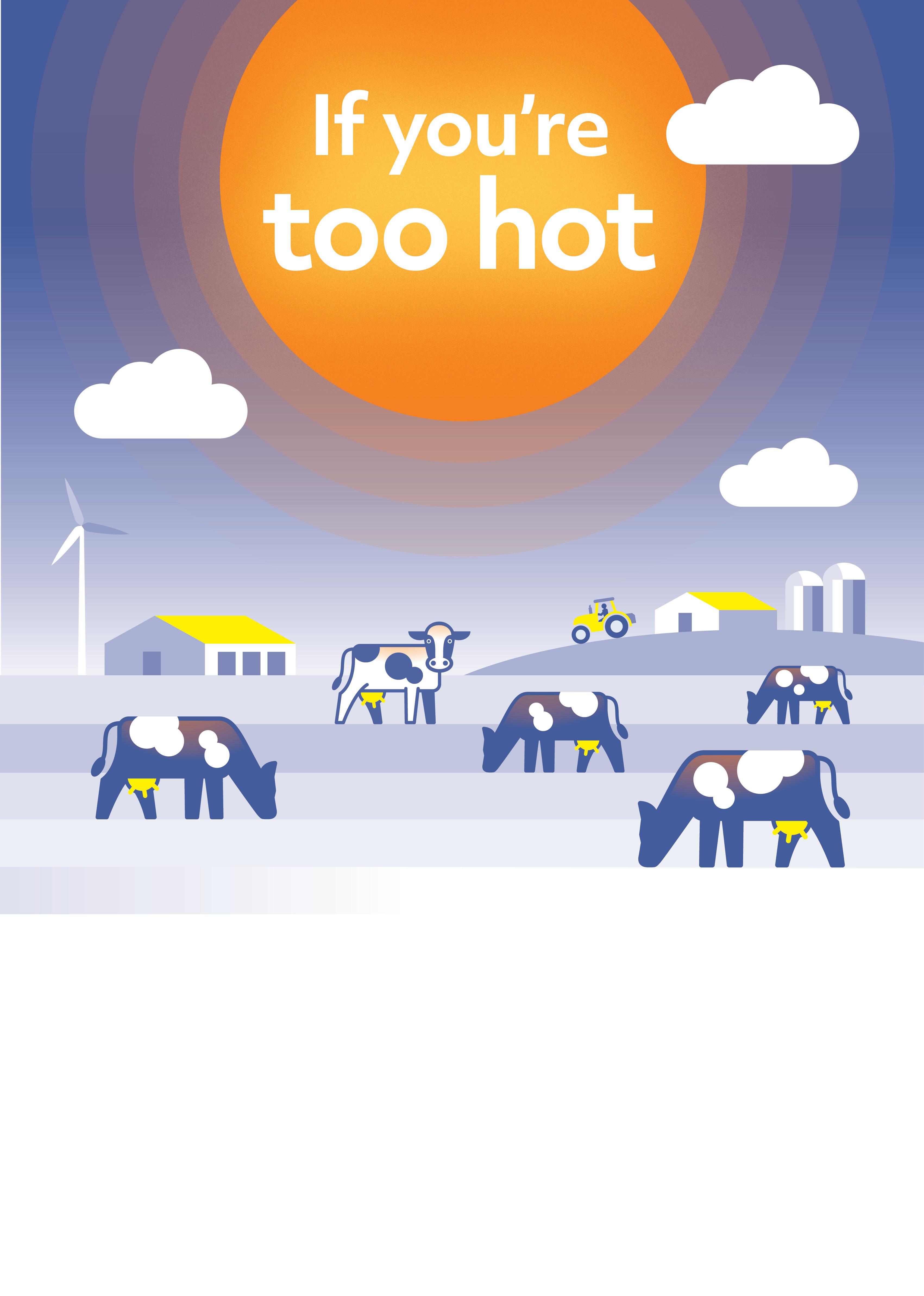
Dry matter intake is reduced in periods of heat stress, so it’s important to maintain your cow’s nutrient intake.
Our range of buffers improves intakes, mineral balance and hydration to support performance during hot weather.
KW’s range of liquid & moist feeds such as Molasses, CHTraffordGold, or Brewers Grains will help ration palatability, drive intakes and reduce sorting.
Get expert advice by visiting kwfeeds.co.uk ®
cool
call us on 01977 686262 Cows begin to show heat stress behaviours Milk yield, milk fat and milk protein affected Cows conception adversely affected Oestrus behaviour begins to be affected *Parameters stated are affected at 60% humidity 24°c 22°c 20°c 14°c Why manage heat stress
Keep
with KW,
DAIRYMatters
‘Food security has had very little mention so far’
Jonathan Wilkinson, a dairy farmer from Meifod, Powys, is the NFU Cymru Dairy Board chair.
Farm walks always provide an opportunity to learn something (even if it is how not to do things) and a recent visit to a farm in Herefordshire was no exception.
This was a farming family that had embraced change and taken every opportunity that presented itself, and they were happy to admit to mistakes that had been made along the way (I am always suspicious of people who do not admit to the occasional cock-up).
The cows here were robotically milked –something I have seen on a smaller scale, but never on a farm milking over 500 cows – and fed by a nutritionist employing algorithms to refine rations as the dry matter, energy and protein levels changed.
Silage was moved up by a robotic brush, and slurry hoovered up by a pair of robotic muck collectors. All of this made me wonder about the impact emerging technologies, particularly artificial intelligence, will have on our industry, and what it will do to the labour requirement on-farm.
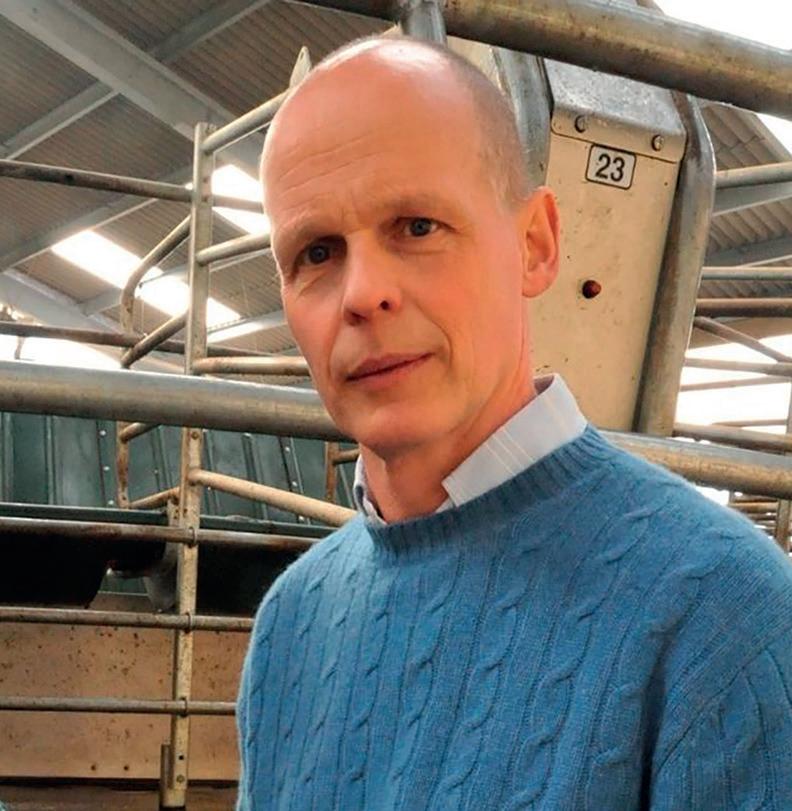 Jonathan Wilkinson
Jonathan Wilkinson
What was clear from the visit was that the requirement for excellent stockmanship had not gone away, and in fact was probably more important than ever as the human contact with cows at milking time was removed.
The oversight of a highly skilled herd manager to interpret the huge amount of data available was invaluable and should be attractive to the next generation as we look to recruit. It would have been impossible to get through a farm walk this year without enduring heavy rain at some point but it gave us an opportunity to retreat to the barn to finish off the evening with delicious Herefordshire beef burgers and sausages, all washed down with local cider – a perfect end to the evening.
Bovine TB
This farm had suffered from the ravages of bovine TB for many years before the introduction of the government’s bTB eradication scheme and had lost many cows to the disease.
It was said that the culling of badgers had transformed the bTB status of the herd and this, combined with the removal of infected animals from the herd, had led to them at last going clear of the disease.
How frustrating for farmers on my side of the border now witnessing the start of the second phase of the badger cull just a few miles away in Shropshire, with politics here currently getting in the way of a more holistic approach to bTB eradication.
The social media soundbites from Chris Packham and fellow celebrities fail to take into account the terrible toll bTB continues to take on farmers’ businesses and health, and his recent tirade against the NFU has done little to help a more sensible discussion about the part wildlife plays in the spread of this terrible disease.
Agricultural policy making is a devolved responsibility of Welsh Government, and so
14 JULY 2024
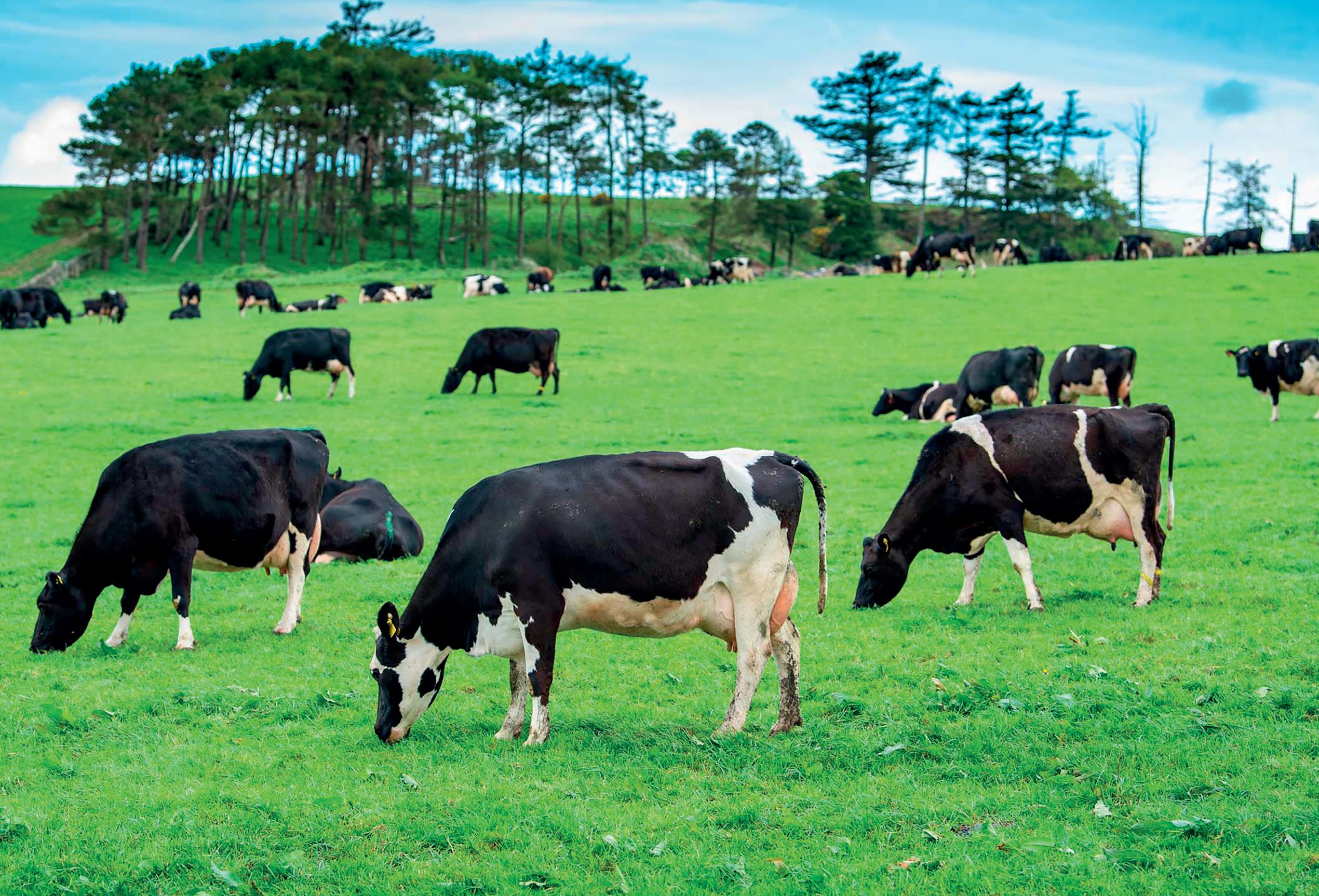
“ All of this made me wonder about the impact emerging technologies [...] will have on our industry
bTB is just one of many policy di erences that our NFU Cymru team in Builth Wells have to deal with.
Consultation
We now have an all-Wales nitrate vulnerable zone and a Sustainable Farming Scheme which is currently going through the consultation phase.
Both these policies have the potential to have a massive impact on farming businesses in Wales, and the resulting concern and worry among the farming community was clearly demonstrated on the steps of the Senedd in February.
e striking image of the pairs of wellies

representing jobs potentially lost from Welsh agriculture was clearly not lost on the Government, which is now pausing the introduction of the scheme for another year.
As our politicians start to slug it out on national television in the lead-up to the General Election, farming and food security has had very li le mention so far.
D-Day
I am writing this on the 80th anniversary of the D-Day landings. Let us hope that among all the political mudslinging that will inevitably take place over the next few weeks, the futility of war and the importance of our nation’s ability to feed itself will not be forgo en.
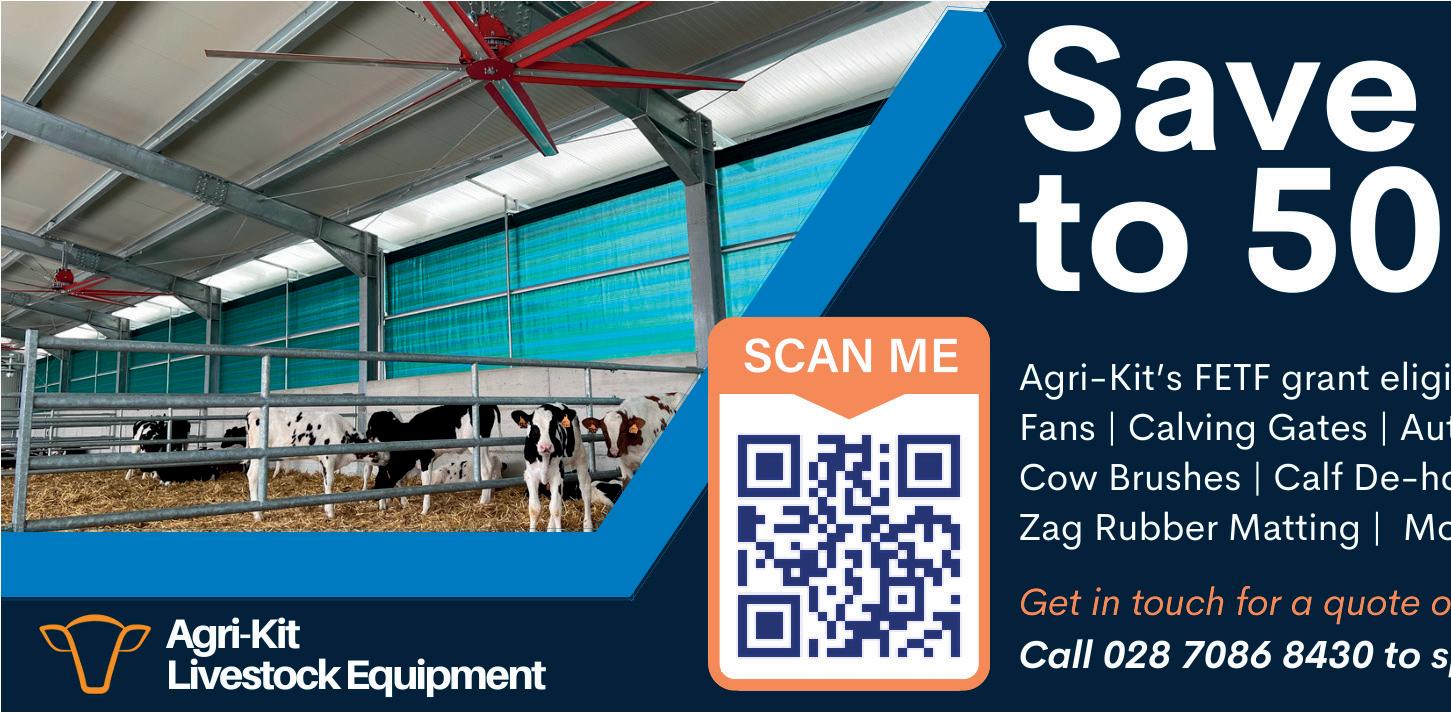
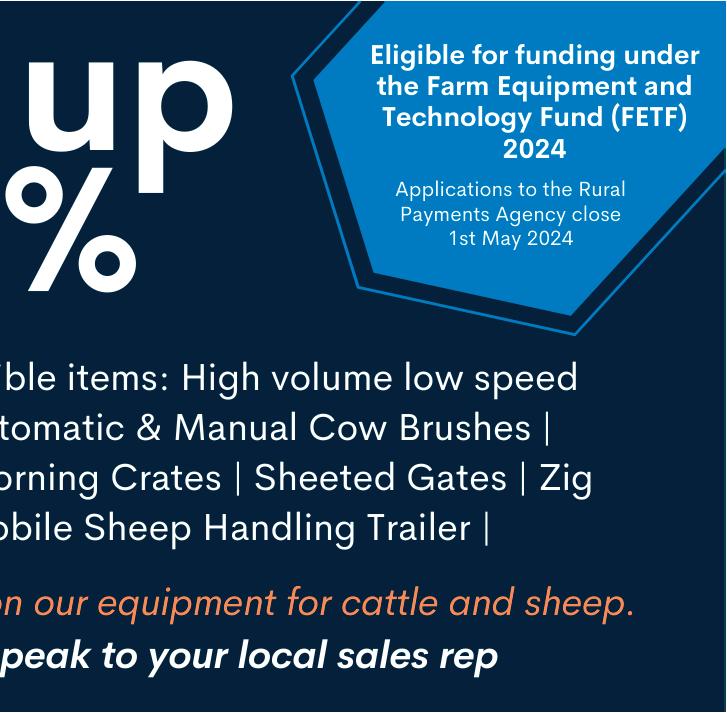
15 JULY 2024
Social media soundbites from Chris Packham and fellow celebrities fail to take into account the terrible toll bTB continues to take on farmers’ businesses and health, says Jonathan Wilkinson.
Management of bedding and grazing paddocks is crucial to controlling environmental mastitis infections during lactation and in the dry period. Katie Fallon reports.
Environmental mastitis: Control and prevention
Although the control of contagious mastitis infections among the UK’s dairy herds has improved over recent years, cases of environmental mastitis are still seen within most herds, as a result of opportunistic infections.
James Breen, associate professor in ca le health and production at the University of No ingham and veterinary consultant at Map of Ag, says these opportunistic infections are usually caused by environmental strains of streptococcus infections, such as streptococcus uberis and/or coliform bacteria present in faeces –a classic example being E.coli.
Dr Breen says environmental infections can be found both in housed and grazed dairy systems, with the number and severity of cases dependent on herd management. He explains the source of infection is generally where cows are lying down, therefore in bedding materials in a housed system or a
popular spot in a grazing eld. He says: “In a grazing system, cows could all be lying under the same tree in 35degC heat, and because there is a lot of them in a very small space you will get a build up of these infections.”
Bedding
Organic bedding materials such as sawdust, paper and straw are likely to deteriorate faster in terms of bacterial growth and survival, says Dr Breen. However, research conducted by Dr Ginny Sherwin, clinical associate professor at the University of No ingham, has shown streptococcus uberis can also be recovered from sand bedding.
erefore, Dr Breen says the management of bedding materials is crucial to controlling bacterial growth in housed systems, with organic bedding materials generally being harder to manage and requiring more frequent bedding.
e amount of space which cows have in a housed system can also
impact the risk of environmental infection, says Dr Breen.
He says: “It is really important to think about stocking density in buildings and how much living space the cows have. at includes passageways, outside areas and access to collecting yards. Anywhere that you can let the cows spread out will reduce environmental mastitis infection pressure.”
A large part of controlling environmental mastitis in a housed environment is ventilation and humidity, says Dr Breen, as bacterial survival will increase in warm, humid conditions.
“You want the shed to be really well-ventilated to prevent a heat build-up, because that will make it much harder for bacteria to multiply,” he says.
For grazing herds, Dr Breen advises farmers to think about how their cows will present to the parlour during the summer months.
He says: “Even though the cows might look clean, they could be
presenting to the parlour with a very high environmental challenge from areas where they have been lying, such as around water troughs, gateways or tracks.”
As well as focusing on the milking herd, Dr Breen says farmers should not forget about the dry cow in environmental mastitis control, particularly during the summer months. He explains dry cow paddocks which are not rested during summer will create a build up of infection. erefore, he advises farmers to follow the ‘graze two, rest four’ method.
He says: “You can signi cantly reduce the risk of new infection in your dry cows if they spend no longer than two weeks in any one area, and that area is then rested for four weeks.”
E.coli




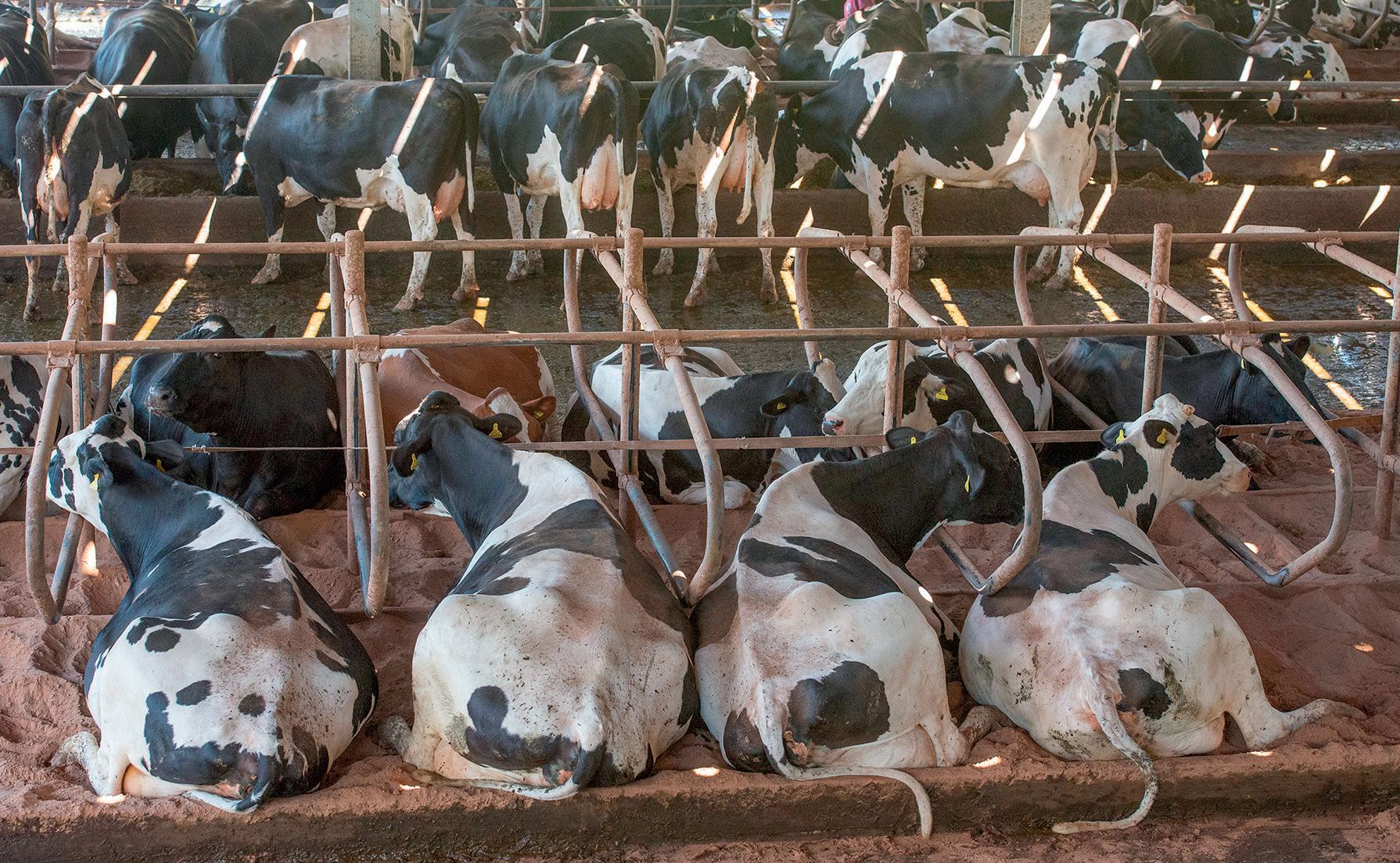
While environmental mastitis infections encompass several di erent types of bacteria which survive in the cow’s environment, E.coli is particularly prevalent among dairy herds due to the bacteria being present in the digestive tract of mammals.
Dr Breen says wherever there is dung, E.coli bacteria will be present, and infections can cause anything from a dead cow to a high cell count. He explains a cow’s susceptibility to an E.coli infection is generally in uenced by two factors: productivity and dry cow therapy.
“High-yielding cows will generally be more susceptible to E.coli infections as they are suddenly producing a lot of milk, of which there is an energy cost to doing so,” says Dr Breen.
As a consequence, Dr Breen says higher yielding cows are likely to be
JULY 2024 16 VET’S VIEW
PICTURE : John Eveson
Management of bedding materials is crucial to controlling bacterial growth in housed systems, says Dr Breen.
VET’S VIEW

in a negative energy balance in early lactation, due to the high energy requirement for white blood cell function to ght infections in the body.
Dr Breen says blanket antibiotic dry cow therapy is another factor which can make cows more susceptible to E.coli infections.
He says: “Antibiotic dry cow therapy put into a low cell count cow at drying o increases her susceptibility to opportunistic infection in the next lactation.
“ ink of it like your gut; the udder has bacteria in it that is supposed to be there and is not really causing any problems. But if you keep pu ing a load of penicillin in that udder every time you dry a cow o , you are disturbing what is a stable population of bacteria, and that cow will be open to any opportunistic infection in the next lactation.”
For mastitis infections with clinical signs, Dr Breen advises treatment with antibiotic tubes and anti-in ammatories for pain relief, particularly in a cow’s rst case of mastitis.
He says: “When cows are showing clinical signs of infection, even mild signs, there is an argument to treat with antibiotics because your chance of cure will be higher.
“Some people tend to leave these cows and think it is only a few clots and they hope it will go away. e clots might go away but that does not mean the infection has gone.”
Once a cow has had three or four cases of clinical mastitis, Dr Breen says the role of the antibiotic is then more di cult to support.
You can reduce the risk of infection in dry cows if they spend no longer than two weeks in any one area
JAMES BREEN
Whereas cows which have a high white blood cell count with no clinical signs should not be treated with antibiotics at the time of infection, says Dr Breen. Instead, he advises treating these cows with antibiotics at drying o . “Generally speaking, the chance of curing infections with antibiotic dry cow therapy is really high and you will get rid of most infections during the dry period,” he says.
Prevention
e rst step in any prevention or control plan for environmental mastitis is to understand the source of infection, says Dr Breen.
He adds: “You need to work out if you have more of a problem with environmental mastitis infections during the dry period, which is causing cows to calve in with clinical mastitis and high cell counts, or if there is more of a problem with infections turning up during lactation.”
Dr Breen says cases of clinical mastitis within the rst 30 days of lactation are very likely to have been picked up during the dry period. He advises that herds which are milk recording and reporting clinical cases of mastitis can use this data to understand if dry period environmental mastitis infections are in uential.
He adds: “All herds are di erent, so it is about understanding the predominant infection pa ern as we head into the summer. ink about how last summer went: is environmental mastitis a seasonal problem in your herd for milking cows or dry cows in the summer months?”

AFFORDABLE MANAGEMENT TECHNOLOGY FOR THE MASSES SPONSORED CONTENT
With profits under constant pressure, dairy farmers are continuously on the lookout for new technologies and ways of working which will reduce labour requirements, improve productivity and offset the effects of rising costs.
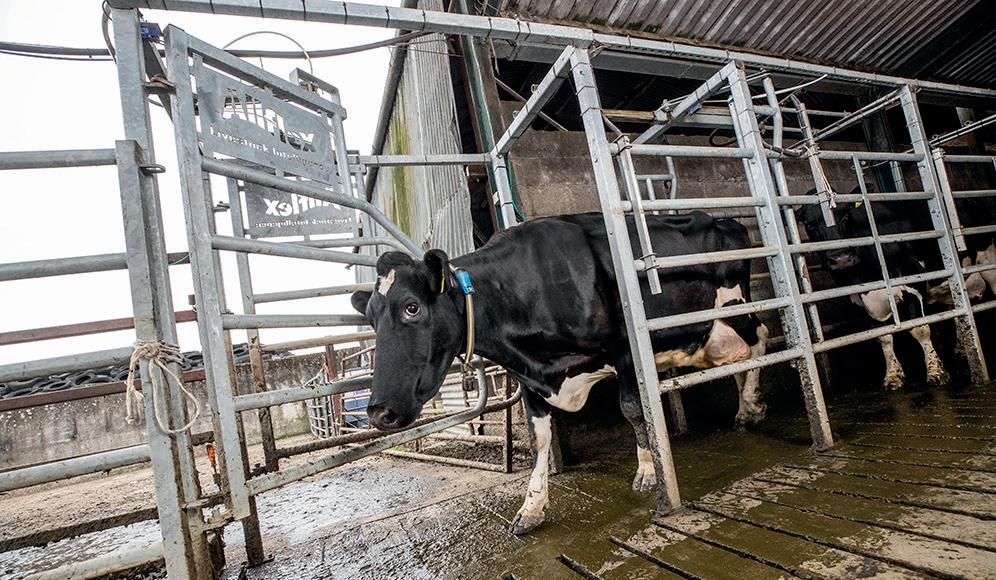
Herd monitoring systems, such as SenseHub ® from MSD Animal Health, can help to keep production costs under control by highlighting potential fertility or health-related problems before they escalate. But not every herd manager wants, needs or is ready to invest in a full reproduction and health monitoring system.
For this reason, MSD Animal Health has introduced an entry-level option to its suite of SenseHub application plans.
MILK MONITORING
The new ‘SenseHub Essential’ plan gives users access to up-to-date milk quality information as each cow is being milked via the use of two in-line milk analysers: the SenseHub Dairy In-Line MilkPlus Sensor measures yield, fat, protein, lactose, blood and conductivity, while the SenseHub Dairy In-Line Somatic Cell Count (SCC) Sensor provides individual SCC results within two minutes of the start of milking.
Both sensors are compatible with any type or make of milking parlour and use Allflex’s electronic identification (EID) tags to identify each cow as she enters the parlour.
For parlours equipped with SenseHub Dairy Parlour Entrance ID, data from each of the in-line milk analysers is displayed in the SenseHub app as easy-to-understand graphs and reports which enable herd managers to instantly assess milking trends and spot any underlying milk quality issues which might be developing.
SEGREGATION CONTROL
The same eartags can also be used to operate an MSD Animal Health sorting gate to automatically draft animals for artificial insemination, veterinary treatment or inspection.
This not only reduces labour and stress for milking staff, but also provides a stressfree, welfare friendly and safe means of segregating individual cows from the herd. Automatic segregation also eliminates the scope for human error to ensure every animal is treated as soon as a potential problem has been identified.
BETTER MANAGEMENT
SenseHub Essential is compatible with more than 35 herd management programmes which means it is easy to import information such as breeding and calving events from other databases.
This makes it easier, quicker and more accurate to manage animals on an individual, group or whole herd basis.

JULY 2024 17
PICTURE : Tim Scrivener
To find out more about the SenseHub Essential plan, please call the SenseHub team on 01207 265 840, or email us at sensehubGB@msd.com For more information, visit www.msd-animalhealth-hub.co.uk/farmers/livestock-monitoring SenseHub is not intended to diagnose, treat, cure or prevent any disease in animals. For the diagnosis, treatment, cure or prevention of disease in animals, you should consult your veterinarian. The accuracy of the data collected and presented through this product is not intended to match that of medical devices or scientific measurement devices.
FOOT HEALTH
Clearer delegation of responsibilities and an increased focus on preventative strategies will help many farms to lower the levels of compromised foot health, according to the recently announced findings of a Stride Mobility survey. Dairy Farmer reports.
A new mobility survey highlights importance of prevention strategies
Over 350 dairy farmers completed the Stride Mobility survey this spring, with the results providing a detailed picture of foot health.
Stride is a not-for-pro t industry initiative commi ed to helping dairy farmers reduce the consequences of compromised mobility in their herds and improve productivity and reduce losses. It is led by industry partners Ceva, HerdVision, IVC Farm Vets, Neogen and Zinpro.
Announcing the results at an industry brie ng, dairy vet Ma Dobbs, chair of the Stride technical board, said that mobility issues have remained stubbornly high for many years, re ecting the complex and multi-factorial nature of compromised mobility.
“Compromised foot health is not a simple problem. It is in uenced by genetics, nutrition, management protocols and cow comfort and environment.
is means a holistic and longterm approach is required.
“ e survey showed that the principal causes of poor mobility are still present across all systems and are no more prevalent in any particular farm size or system, so the opportunity remains to make improvements on any farm.
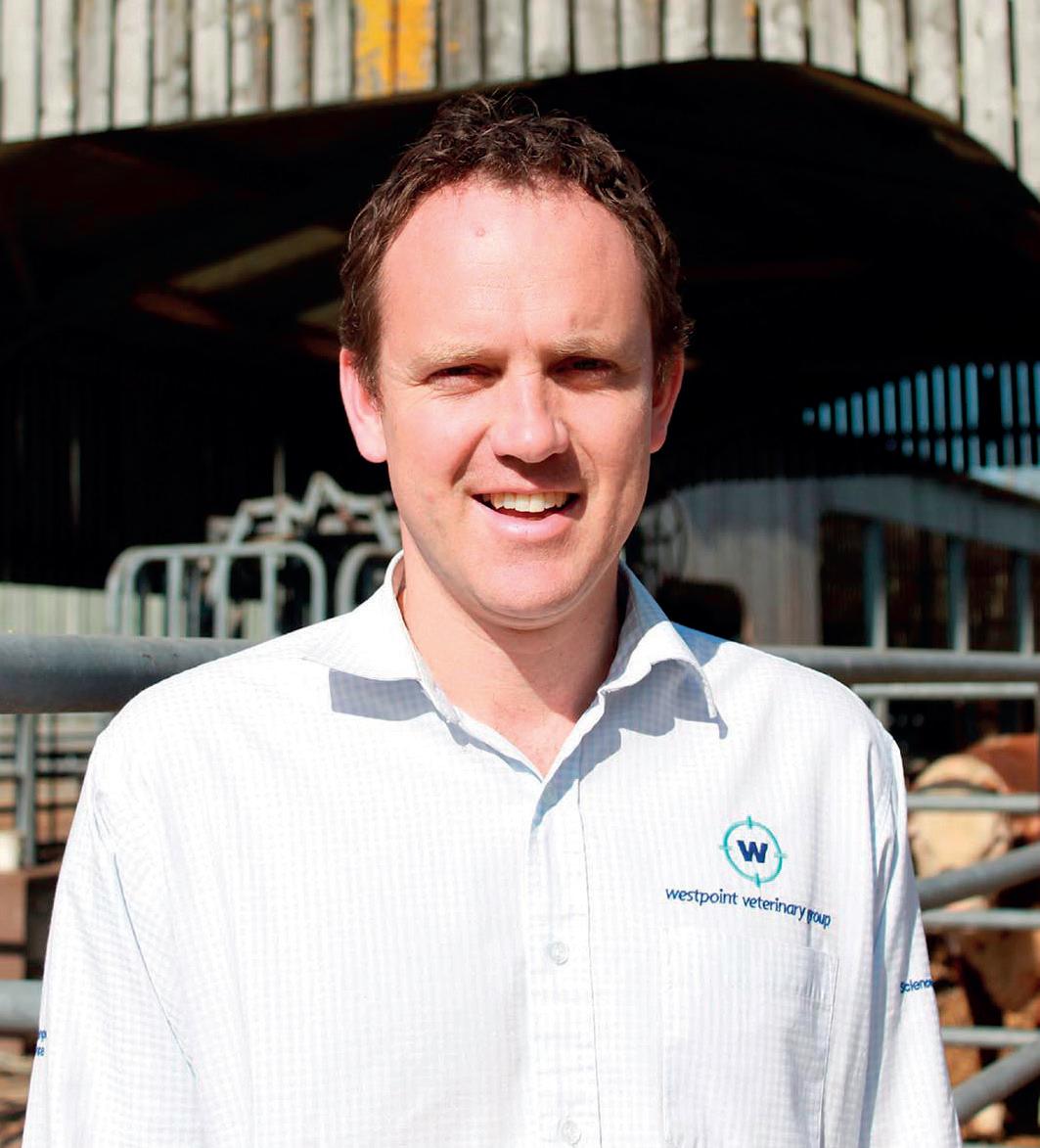

“It may also be necessary to challenge what we see as ‘normal’ or ‘acceptable’ levels. As an industry are we too accepting of higher levels of poor foot health?
e industry now has a lower tolerance for mastitis levels than we did 30 years ago and perhaps should take a similar a itude to mobility issues?”
e survey highlighted a variable uptake of many of the key preventative measures available on farm, irrespective of farm size and type. Mr Dobbs
suggested a closer focus and stricter protocols could be central to improvement plans.
Foot trimming is widely adopted with only 1% of respondents not trimming, but Mr Dobbs said 60% only trim ‘when necessary’ and said there was an opportunity for a more structured approach.
A total of 78% of respondents were footbathing milking cows more frequently than weekly, but 11% said they did not footbath the milking herd. Concerningly
some respondents said they only footbath when they have a problem suggesting it is seen as reactive rather than preventative. e uptake of footbathing is lower in dry cows and heifers.
Foot health a key issue
Foot health is still seen as a key issue when breeding cows with 65% saying they consider mobility traits, and the use of genomics is increasing.
Mobility scoring is gaining traction as a way to assess the herd, but Mr Dobbs said there was still a need for education in the approach.
“To be most e ective cows need to be mobility scored frequently to aid early identi cation of problems. Yet 51% of respondents only mobility score quarterly or less frequently, probably in response to processor requirements, and 24% of farmers do not mobility score at all, although many of these say they see the cows every day and pick up mobility issues during the course of the day.”
Diet is recognised as a key preventative measure, especially the use of biotin and zinc and many farmers commented that they will be investing in cow comfort to help reduce leg and foot issues.
Mr Dobbs said: “It is encouraging that the main
JULY 2024 18
For the latest in lameness detection technology, see p46.
Matt Dobbs
preventative measures are being used and that farmers are seeing external input from specialists such as the vet, foot trimmer, mobility scorer and nutritionist, as this will be helping reduce incidence and cost. e survey also showed continued investment in new technologies. But there is still more that can be done.
“We know that about 80% of foot health problems can be a ributed to previous lameness in the herd, so a closer focus on prevention has to be the foundation to improving mobility. e starting point for this will be the development of clear protocols and the allocation of responsibilities.”
He added that one of the concerning ndings was that there appears to be a lack of clear delegation of responsibility for foot health.
He said: “When respondents were asked who is responsible
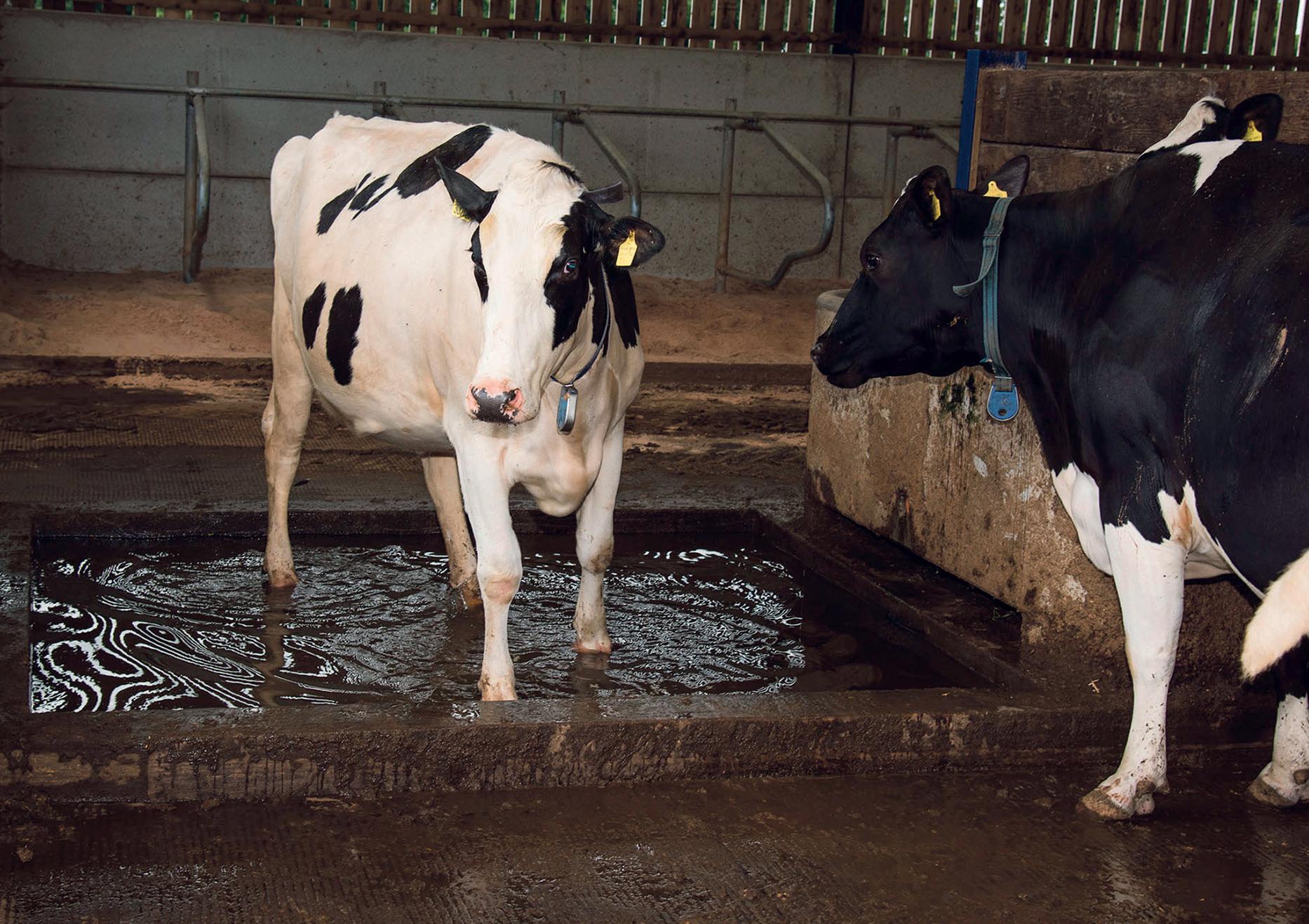
Some
of the responses suggest footbathing is being used as a reactive measure, rather than a preventative one.

for managing foot health, the survey exposed a wide range of answers including external advisers as well as members of dairy management teams. It was not unusual for more than one person to be ‘in charge’.
“To improve progress, it is worth considering whether



Concerningly some respondents said they only footbath when they have a problem


there is clearly allocated responsibility for foot health and has it been allocated to the best person. en consider what the main motivators are for them to improve foot health. It may not be reducing costs but more practical things like less time ge ing
SPONSORED CONTENT

MATT DOBBS
After the wet summer and autumn of 2023, many farmers were not able to complete their reseeding as planned, so are looking towards the end of this summer to catch up.
Autumn reseed benefits
Reseeding at the end of the season offers several advantages over a spring reseed, according to John Spence, forage crops product manager with Limagrain UK.
He says: “Yield and quality analysis results from first cut silage can inform reseeding decisions, identifying those fields which are not performing as well.
“Reseeding in autumn has become more popular across all parts of the country, possibly in response to the drier springs we have experienced some years.
ground out of production. Furthermore, lack of soil moisture is less likely to be an issue later in the year.
“It is important not to leave reseeding too late. In the lowlands, when reseeding ryegrass swards with no clover, mid-August up until mid-September is optimal. For swards containing white clover, seed should be drilled by mid to late August.
“For mixtures including red clover, the end of July or at the latest, early August should be the aim. In the uplands and further north, these dates should be brought forward by about two weeks.
temperatures to germinate successfully. An earlier seeding date will enable good establishment before winter to reduce the risk of frost damage and to allow for the control of problem weeds before fields become too wet.”
Deficiency
Mr Spence advises having soil tested so any nutrient deficiency or pH issues can be resolved prior to drilling a new ley.
cows in for milking or treating problem cows.”
Mr Dobbs said the Stride survey had given a great deal of insight to the issues on farm, but it was now for the industry to ‘learn from this and to work with producers to help improve the situation’.


“The seed should be drilled to a maximum depth of 6mm and rolling afterwards is strongly recommended.
“Choosing the right mixture which offers the desired balance between longevity and production is important.

Limagrain mixtures are all formulated with forage quality in mind so will deliver excellent yields with high feed value.”
“There is generally less pressure on grass in late summer, so it is easier to take Find
“This is because clovers need warmer
He says: “A reseed following full cultivation is likely to give the best results, but any method giving good soil to seed contact will work well.

JULY 2024 19
out
scan the QR code
more at farmersguardian.com/bettersilage, or
Good breeding and feeding are the key areas of focus for a young couple who are keen to expand their sheep dairy flock. Chris McCullough reports.
Expansion of sheep dairy flock
Ayoung couple milking 350 sheep in Greece have future plans to not only expand the ock but also improve genetics through precision breeding.
Avdanas Farm is situated at the foot of Mount Olympus, close to the town of Elassona, and is run by Michalis Avdanas and his partner Catherina Kalliga.
Founded in 2012 by Michalis’ late father Ioannis, the farm is home to 350 milking Chios ewes, a breed originating on the Greek island of Chios and noted for good productivity.
e farm started with only 40 ewes and Michalis took over in 2016
a er his father passed away. Since then, he and Catherina – both vets –have bred a nucleus ock with high genetic merit and production traits.
Michalis says: “One of the a ributes of the Chios breed is that it can milk for six good productive seasons. Our milk is sold to a processor that makes feta cheese, therefore it needs to be good quality. We receive €1.57/kg for the milk.
“As long as they produce over 2.5kg of milk per day, the sheep are milked three times every 24 hours. Below this rate, we milk them twice per day until drying o .
“We can milk about 180 animals per hour through our DeLaval highline parlour. e parlour has 24 places and milks 12 at a time. Later,


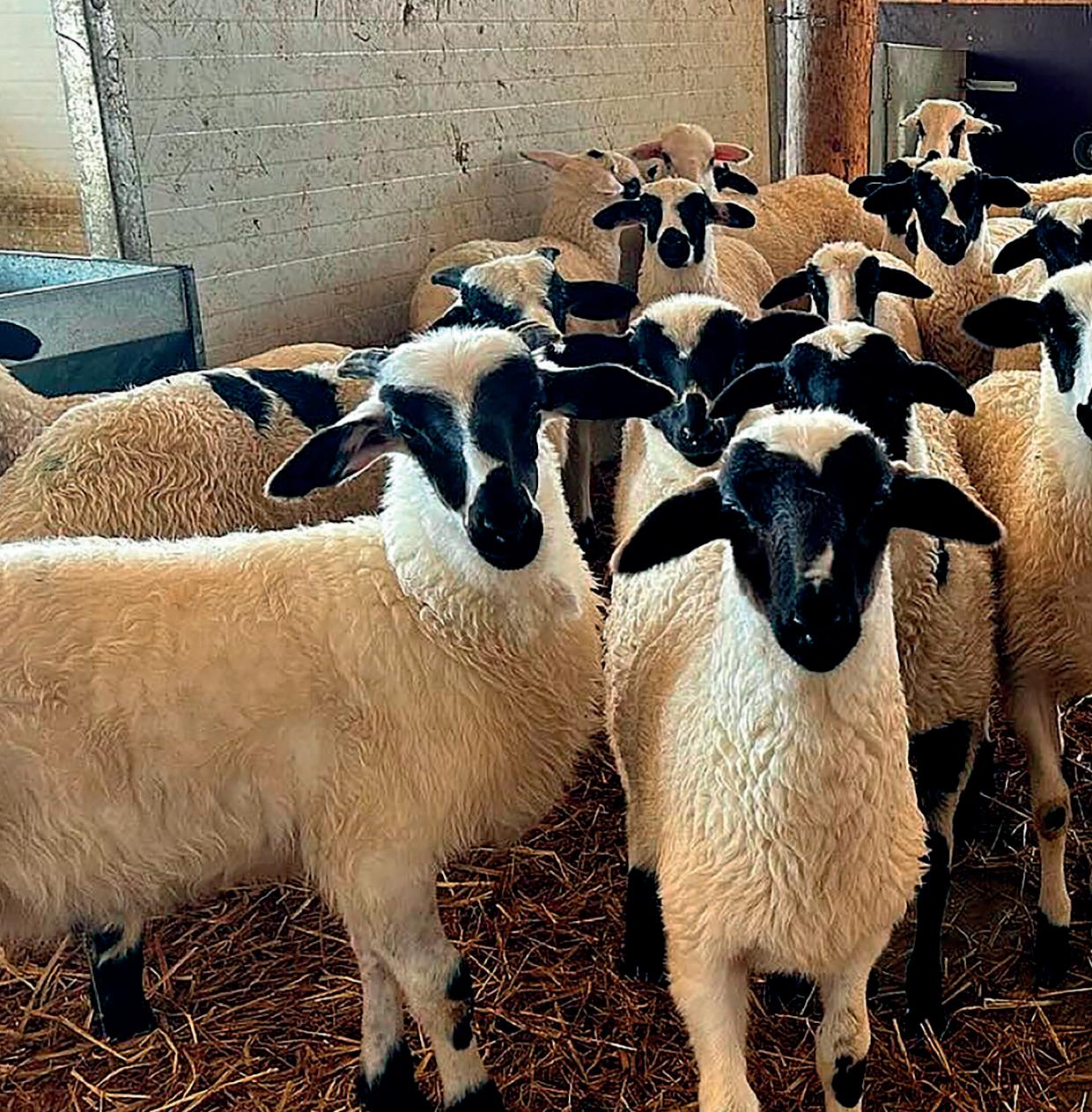

I want to extend it to milk 24 animals at once in a 48-unit parlour.”
During 2023, Avdanas Farm produced a total of 76 tonnes of milk with an average production of 460 litres per ewe per year. at year the farm generated €178,000 income and expenses of €101,000.
Around 81% of the income is derived from milk sales, 8% from subsidies, 6% from meat sales and 5% from selling live animals.
Costs
Feed costs racked up most of the expense costs at 57%, says Michalis, whereas 16% was salary for the family and two full-time workers, 11% was construction and investment, and the remaining percentage was miscellaneous operating expenses.
In typical Greek style, Avdanas Farm is quite small, extending to only one hectare (2.47 acres).
Michalis rents another 7ha (17 acres) for extra grazing and a further 11ha (27 acres) for growing forage.
He says: “It is possible to buy more land around my farm but I prefer to invest money into the farm’s infrastructure and technology.”
Michalis says he plans to extend the ock to 500 sheep, which he says is a realistic target to reach. In recent years, the ock’s birth rate has been about 1.79 to 1.84 lambs per ewe per year, although the breed has a 2.2 average birth rate.
Michalis says: “Using selected rams I have brought our birth rate down a bit so that our ewes can have a be er quality of life.
“Our replacement rate hovers around 30% because I want to reach our target of 500 sheep in a short time. e Chios breed, due to its longevity, normally has a replacement of about 15%.
“We have 10 rams of high generic merit, which we continuously renew. Any males born that do not have high genetic merit go for slaughter; the rest are sold for breeding.
“We do not currently use arti cial insemination, but it is something we would like to do in the future.”
Being a vet, Michalis is welleducated on the various options for breeding. Currently, they use intravaginal sponges on some sheep for planned matings, with the aim of avoiding inbreeding and optimising yields.
Lambs
He says: “We scan the sheep later in the pregnancy and separate them into groups according to numbers of lambs and expected lambing dates.
“Lambs stay on their mothers for two days and then move to milk feeders. We run three groups of lambs, including the very young ones that we need to help feed.
“Nutrition plays a vital role in successful breeding for our ock. We require sheep that can produce high quantities of milk to enable us to
JULY 2024 20
DAIRYING
WORLD
GREECE
The Chios breed originated on the Greek island of Chios and is noted for good productivity.
Catherina Kalliga and Michalis Avdanas.
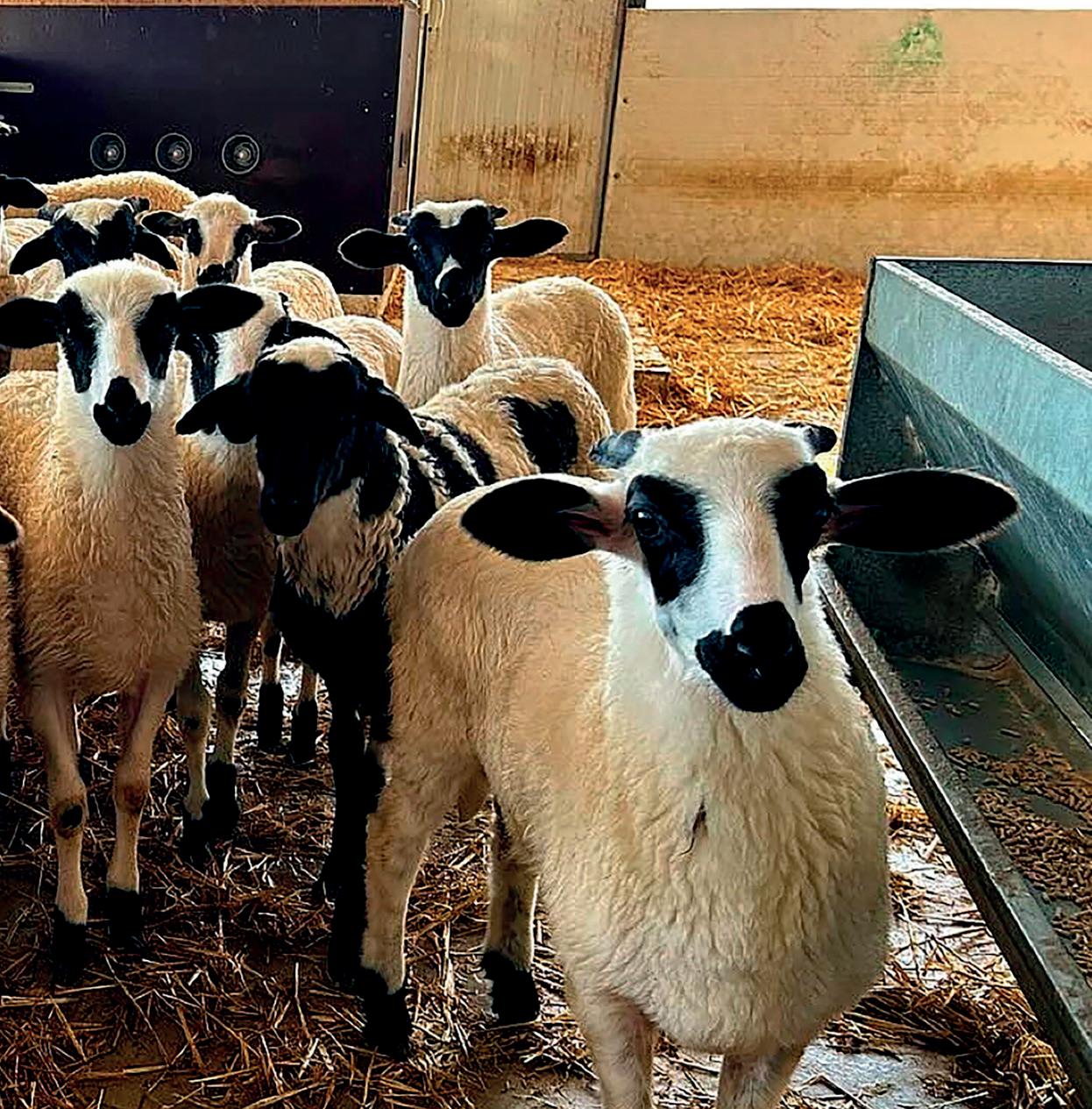
make a pro t. I plan the rations in collaboration with a nutritionist. We work with a total of four di erent rations based on the stage of development and reproduction.”
Michalis says the main challenges faced by the business are the weather, labour shortages and the price of milk.
He says: “In addition to that, perhaps the way in which European Union aid is distributed by the State to us should be changed; I think it would be more bene cial if it was the production levels that are subsidised, rather than the actual numbers of livestock.”
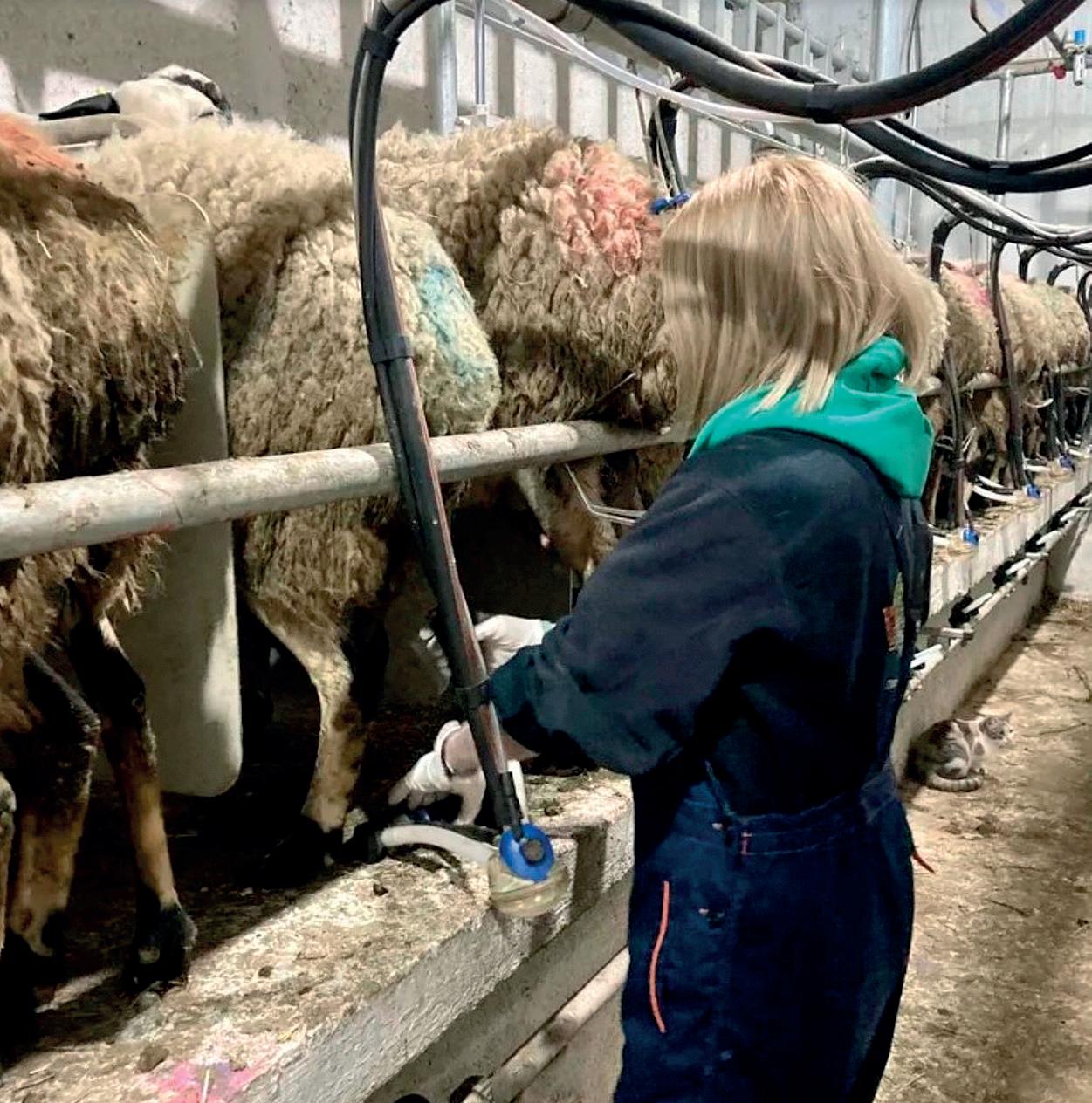

Farm facts
rSheep are fed a total mixed ration comprising grass silage and concentrated fodder
rThe 11 hectares (27 acres) rented for growing fodder crops comprises 8ha
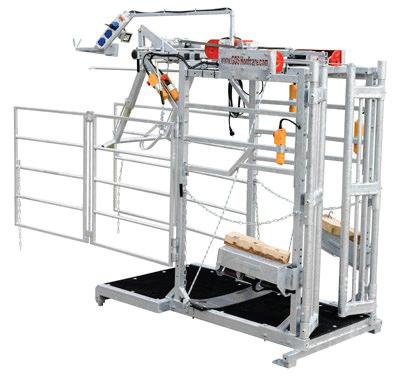

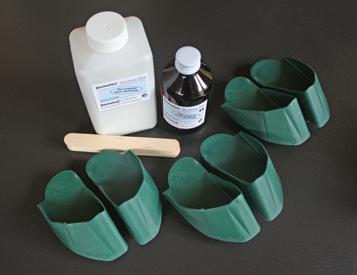
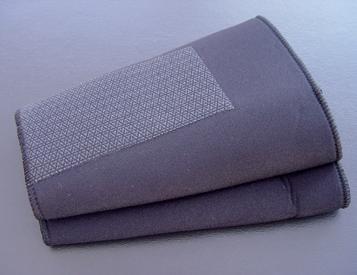


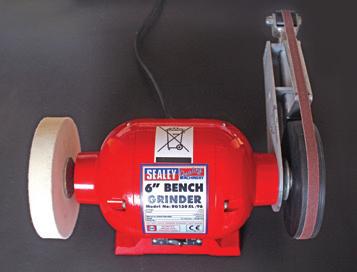
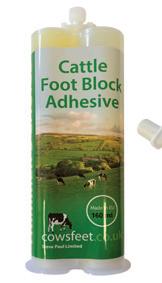
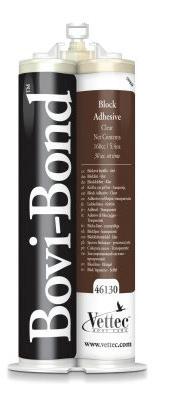

(19 acres) of alfalfa and 3ha (seven acres) of ryegrass
rThe flock is housed for most of the year, but has some access to grazing, mainly for exercise

From farmer cattle crushes to wooden blocks, we have everything you need to keep your cows' feet healthy!


JULY 2024 21 Prefer to speak to a human? Give us a call on 01963 824448 "Thank you to Steve and
team for an excellent and very quick service and very competitive prices every time, thanks!”
his
MILLER, LANCASHIRE LAMENESS WORKSHOPS October 22 £125 per person Steve Paul Limited The UK's leading cattle foot care company TRIMMING • TRAINING • SUPPLIES
you spend £100 online excluding VAT
more information!
JOHNNY
Free next working day UK mainland & Ireland delivery ORDER BY 3PM when
Make your life easier with our Electric Farmer Crush Do ring us if you’d like
Cowsfeet advert Farmers Guardian 200x130mm March 2020.indd 1 14/02/2020 09:40
About 180 sheep can be milked per hour in the DeLaval parlour on Avdanas Farm.

INVESTING IN YOUNGSTOCK T TARGET GROWTH WILL PAY DIVIDENDS
YOUNGSTOCK IN FOCUS
ENSURING QUALITY IN HEALTH, GENETICS & NUTRITION
Achieving the highest possible outcomes for your livestock starts with the care and attention which goes into youngstock. In this feature, Neogen, Trouw Nutrition and Virbac have teamed up to explain best practice when it comes to health, hygiene, genetics and nutrition.
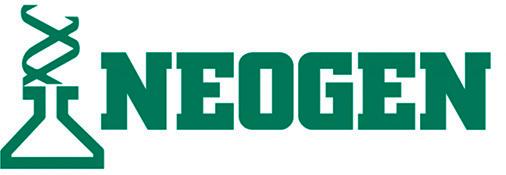


Rearing dairy replacements is the second biggest cost after feed for any dairy farmer, so ensuring calves are given the best chance possible to reach their potential is essential.
Healthy calves are the future of any dairy herd, so they deserve the best management, informed by the latest research and advice.
Where farmers make the best management decisions and implement these effectively, their investment will be repaid when heifers go on to thrive in the milking herd.
Central to producing healthy, productive and long-lived animals are genetics, nutrition, health and hygiene, and each element can have a significant impact on animal welfare and the bottom line.
Role of genetics
It all starts with genetics which strongly influence almost every aspect of the performance of a dairy cow from fertility to feed efficiency and from conformation to longevity.
Choosing the right genetics for the next generation of dairy replacements is one of the most important decisions, and
advancements in genomics have made this possible.
Using this technology, very reliable and informed choices can be made about a range of relevant traits.
Rob Horn, Neogen’s technical sales specialist, says genomic profiling offers substantial benefits to the farm business because of the detailed information it provides.
He says: “Genomics relies on scientific analysis of the DNA sequence provided by a tissue sample taken from a calf as young as two days old.”
Genomics provide information about the potential of each animal in terms of a range of different traits.
Mr Horn says: “Each farm is different and genomics can be used to target the traits which are most relevant to the herd, whether it is milk yield, fertility, longevity, milk components or many more.
“Those females which score the highest for the desired traits can be chosen as replacements and served with sexed semen, whereas poorer scoring animals can either be served to beef or could be sold off-farm.”
Ensuring replacements are healthy and free of endemic diseases such as BVD is vital.
Neogen offers a BVD test in combination with the genomic testing and Mr Horn points to
PROMOTING CALF HEALTH
1 Check calves at least twice a day – are calves healthy?
2 It is a legal requirement to feed calves under 28 days of age at least two liquid feeds a day
the cost savings which can arise from identifying any persistently infected (PI) animals at a very young age.
He says: “The results of the BVD test are available within a couple of days, before further testing, so infected samples can be removed thus avoiding unnecessary expenditure on genomic testing.
“It costs about £1,800 to rear a calf, so an early positive BVD result can lead to a considerable saving.”
Hygiene protocols
Preventing disease in dairy calves is critical if they are to reach their potential as many commonly occurring infections in calves can have implications for the long-term well-being of these animals.
Scours is the most common disease in young calves, responsible for almost 50% of calf deaths in the UK.
There are a number of different infectious organisms which can cause scours, including cryptosporidiosis, rotavirus, coccidiosis, coronavirus and E. coli and they can all compromise growth rates and long-term health.
The implementation of simple hygiene protocols is effective in reducing the occurrence of scours, according to Kate Ingram, a vet with Virbac.
She says: “Over-stocking is a risk factor for scouring and, ideally,
7 Treat if necessary in accordance with advice from your vet
6 Record and monitor early signs of disease – discharge from eyes or nose, cough, dirty hindquarters and scour
3 Provide fresh, clean water at all times 4 Identify common problems early 5 Make preventative or corrective measures
8 Do not leave it too late – remember, loss of appetite and not drinking milk is often a late sign of disease
JULY 2024 22 SPONSORED CONTENT
SPONSORED BY
For more on this article, scan this QR code
SPONSORED
O ACHIEVE DIVIDENDS
calves should be housed in small, similar-aged groups.
“Calves should be kept in well-ventilated buildings which are free from draughts and they should have plenty of clean, dry, bedding, with soiled material removed from pens.
“An ‘all in, all out’ system between batches of calves is preferable. Calf equipment should be cleaned using hot water, disinfected and allowed to dry between each use.
“Isolating any calf which is scouring or shows other signs of ill health is imperative.”
Colostrum
Alongside these measures, vaccinating cows any time from 12 weeks and up to three weeks before calving is a very effective way of protecting the cow’s calf from rotavirus, coronavirus and E. coli.
Ms Ingram says: “Research has shown the colostrum of vaccinated cows contains high concentrations of specific antibodies to combat infectious scour in their calves in the critical first few months of life.
“Vaccination works via the transfer of passive immunity. Calves receive protection by consuming the vaccinated cow’s colostrum.
“To ensure maximum efficacy, farmers must pay attention to detail when managing and feeding colostrum, calves should receive 10-12% of their body weight in good quality, clean colostrum ideally within two hours, and definitely within six hours of birth.”
Optimum nutritional intake both up to and after weaning is paramount if calves are to achieve desired growth rates and herd production targets.
Adequate levels of trace
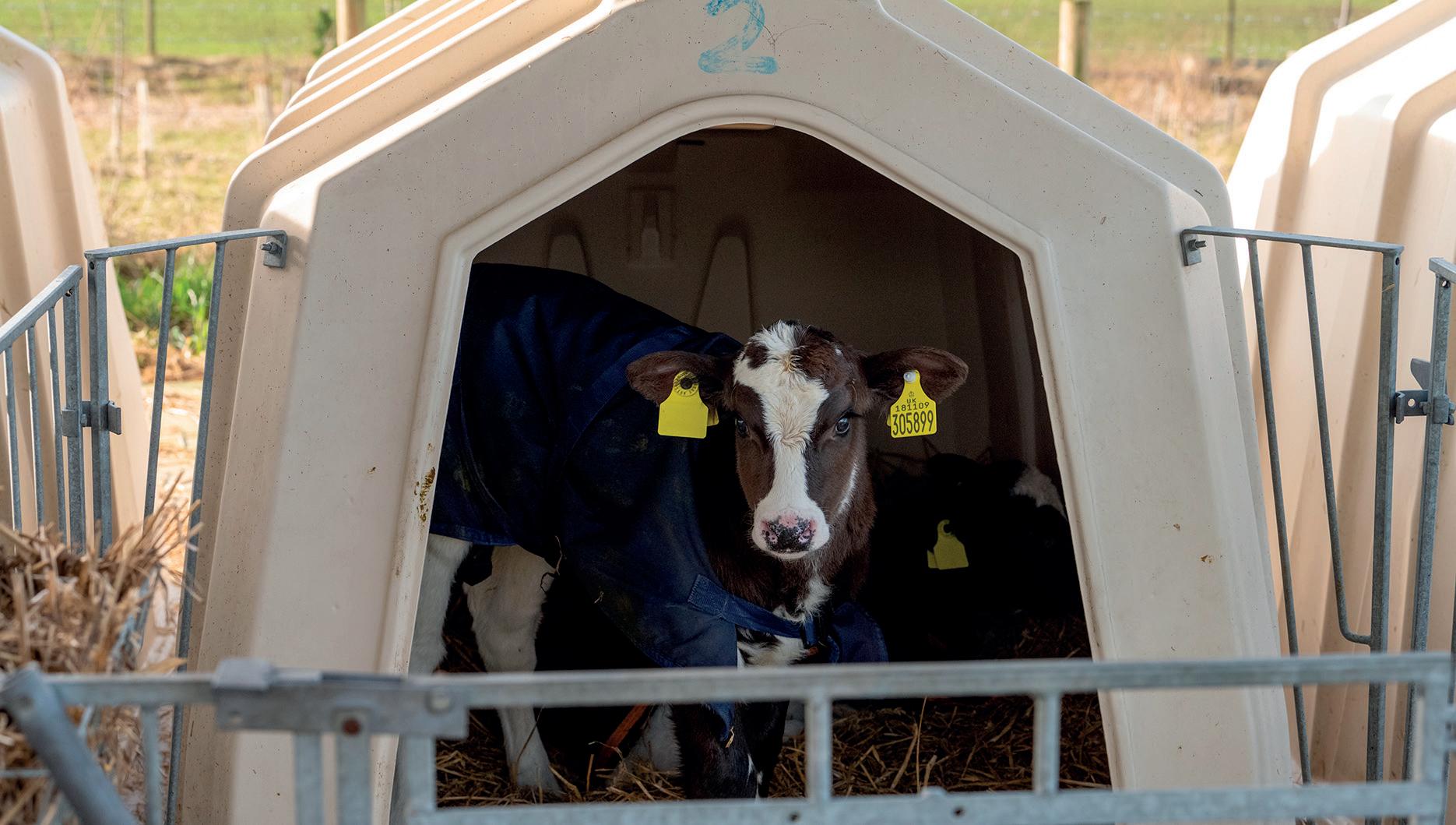
elements not only boost the animal’s immune system, but are important for on all aspects of growth and development.
Ms Ingram advises that trace elements should be part of a high-quality feeding regime and this should always include four of the most important minerals: zinc, copper, manganese and selenium.
Milk replacer
Up until the age of between four and five weeks, calves are monogastric and are only able to properly digest milk.
The quality and quantity of the milk replacer fed to calves will have a significant impact on the development of the gastrointestinal tract, Trouw Nutrition’s Dr Aaron Brown says.
“The neonatal calf’s system is designed to efficiently digest and absorb nutrients in milk. Calves can consume large amounts
which, through optimising nutrient intake, accelerates development of the entire digestive tract.
“Feeding calves milk replacer as close to appetite as possible increases the calf’s ability to consume and digest solid feed in the later stages of life. It has also been shown to aid the development of the key organs in calves, including the liver, kidneys, heart and mammary tissue.
“This initial eight-week period is a limited window of opportunity for organ development and it is also the time when feed conversion is most efficient.
“Calves will typically put more than half the energy from the feed they consume to growth during this time.
“While feed costs fall after weaning, so does feed conversion efficiency so feeding to appetite during the first few weeks of a calf’s life is most cost effective
VALUABLE INSIGHT
when considering whole lifecycle impact.”
There is a common misconception that feeding less milk replacer during the first few weeks of life will encourage intakes of starter ration, but this is not the case, Dr Brown confirms as calves will not generally take it at this age.
Promoting higher milk intakes pre-weaning boosts immunity, enabling calves to better fight off the infections which cause scours, the most common cause of mortality in calves under one month old.
“Investing in a high intake, high quality nutritional programme in early life will improve calf health, increase daily lifetime yield through earlier entry in the milking herd, increased productivity in lactation and cow longevity.”
l The combined expertise of Neogen, Trouw Nutrition and Virbac provides valuable insight into best practices for health, genetics and nutrition. By implementing these strategies, farmers can improve the quality and performance of their herds while promoting better animal welfare. Investing in youngstock through preventative care, genetic evaluation and high-quality nutrition is a key factor in achieving successful livestock production.
JULY 2024 23
CONTENT
GRASSLAND ESTABLISHMENT


For farmers weighing up the value of rejuvenating fields with a full reseed this summer, or instead opting to overseed after one of the most persistently wet periods on record, there is a lot to consider. Debbie James reports.

If a sward is past its best, with less than 60% of sown species remaining, a full reseed will be the best option for productivity and economic return, says agronomist Rhys Owen.
But overseeding can o er a lower cost alternative in elds with thinning swards, introducing new varieties or species into a tired ley. For both, ge ing the timing right is key to ge ing the best result as are following establishment and management protocols, says Mr Owen, of ProCam and Field Options.
“Ge ing swards back into the rotation comes down to planning and management,” he says.
“ e emphasis for success for a full reseed or overseeding is on ge ing the structure and nutrition of soils right.”
Mr Owen advises growers to think about several di erent areas.
Overseeding or reseeding to rejuvenate fields
Reseeding

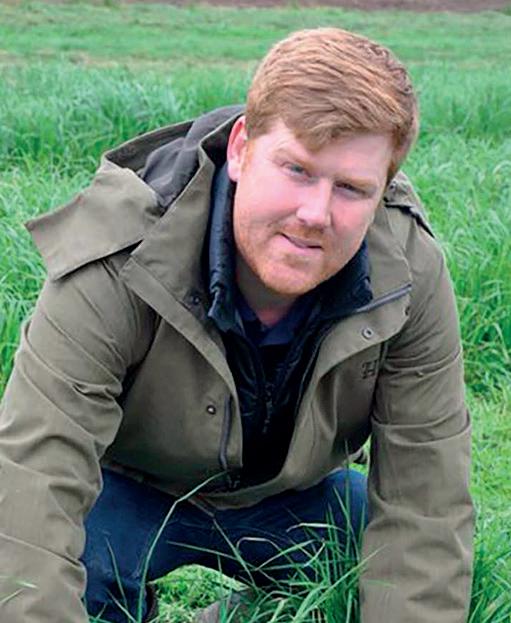
Prepare the seedbed
JIncluding a break crop improves seedbed cleanliness and soil structure.
“Where possible, always precede a complete reseed with a forage brassica or cereal crop,” Mr Owen recommends.
“These ensure a good entry for grass reseeds by controlling weeds and breaking the lifecycle of leatherjackets and other pests.”
If a break crop can not be included, combat perennial weeds with alternative weed
control measures before reseeding.
“Applying glyphosate will control grass weeds and ensure a clean start,” says Mr Owen.
Grass and clover seedbeds need to be ‘uniform, fine, firm and well-consolidated’, he adds, to allow good seed-to-soil contact and to retain moisture.
“Too often, seedbeds are ‘fluffy’ because they have been over-cultivated or have not been consolidated enough with rollers.”
reseeds, weed control
reducing nitrogen fertiliser usage. 28 FERTILISER TRIALS Reductions improve farm sustainability 32 WEED CONTROL Managing threats for reseed success 24 JULY 2024
Advice on
and a look at trials into
Rhys Owen
GRASSLAND ESTABLISHMENT
Analyse soils
JAnalyse soils for pH, phosphate and potash well in advance of reseeding.
Where needed, apply lime
to acidic soils to reach a 6.5 pH target.
Aim for a phosphate index of 2 and, for potash, 2-.
Getting the timing right
JIn recent years, dry conditions have compromised spring reseeds, with fat hen and redshank often out-competing young seedlings.
Mr Owen suggests weed pressure is usually lower in August, or into early September, although chickweed can present problems, if the land is highly fertile or has
Sowing depth
JSowing depth is fundamentally important, especially for herbal ley mixes with different seed sizes.
For most species, a seeding depth of 10-15mm is adequate.
Mr Owen says broadcasting
Grazing
JGrasses and clovers can be grazed once they pass the ‘pull test’ – tugged without uprooting. Light grazing promotes tillering, encourages
a high phosphate index. Timing is important for red and white clovers as these must be well established before conditions get colder. By reseeding early enough, the sward can be lightly grazed to promote tillering and to help control or reduce the competitiveness of annual weeds.
seed, instead of drilling, gives a more even establishment and overall ground cover.
The importance of adequate rolling pre- and post-seeding ‘cannot be over-stated”, he adds. “If in doubt, roll again.”
grass growth and cleans up some annual weeds. It will also enable more light to reach the young clover seedlings lying below the grass canopy.
Chemical weed control
JWeed species must not become too strong before treatment – ideally seedling docks should have no more than two ‘true’ leaves. For a new grass or clover ley, the first application is the most important herbicide treatment.
Aim to apply this between four and six weeks after emergence.
“Control of perennial weed
seedlings and annual weeds can be achieved with a well-timed application of a red and white clover-safe tribenuron methyl herbicide, or an amidosulfuron, which is safe to use on white clover,” says Mr Owen.
At application, clovers must have at least one trifoliate leaf. It is key to adhere to intervals specified on product labels.
Continues over the page...





SINCLAIR MCGILL








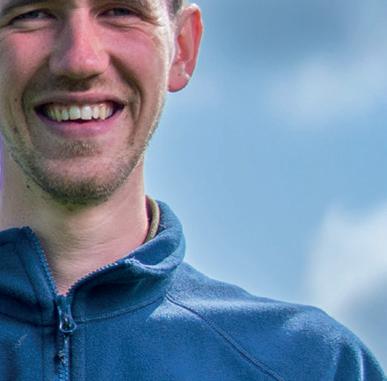

We’ve noticed a definite difference in daily liveweight gains in the cattle.
Tom Diplock, Beef Farmer, Sussex

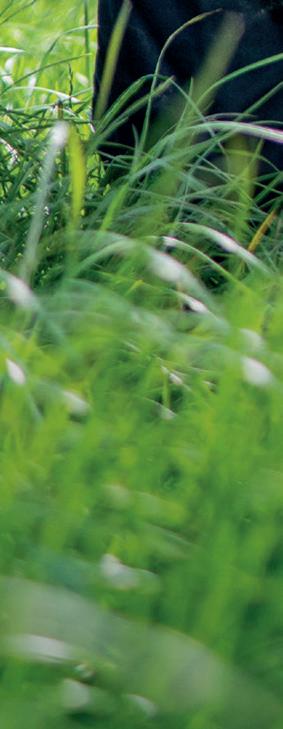
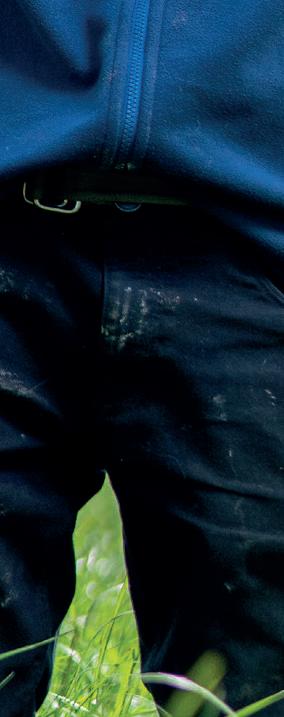








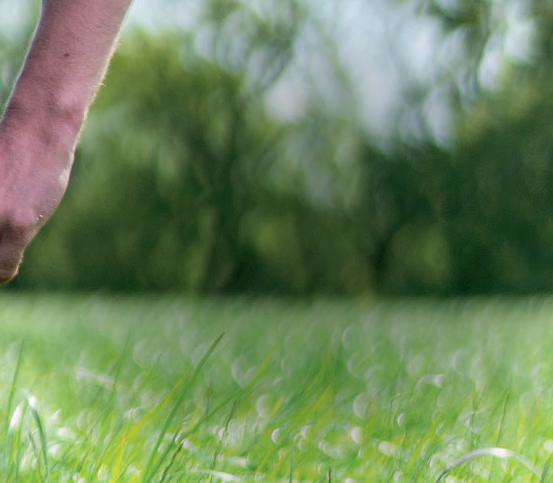












STRONG ROOTS IN GRASS

High quality, reliable grass mixtures fit for the future SCAN to hear Tom’s story




JULY 2024 25
lgseeds.co.uk/sinclair-mcgill
GRASSLAND ESTABLISHMENT
Soil status
JAnalyse and correct soil pH, P and K.
Soil damage
JSoil compaction should be corrected with an aerator or grassland sub-soiler before overseeding, usually when conditions allow in late summer or early autumn.
Seed type
JTetraploids, with their larger seed and vigorous early growth habit, are well suited to overseeding. But the ground cover benefits of diploid perennial ryegrasses should not be ruled out.
Seed rates
JFor overseeding with grass, Mr Owen advises aiming for 20-25kg/ha, for white clover 4kg/ha, red clover 6kg/ha and herbal leys 2kg/ha, although seed rates for species such as burnet or sheep’s parsley will be much lower.
Herbal leys
JMany farmers have opted to grow diverse mixes in return for payments under the Sustainable Farming Incentive in England and the Growing For The Environment Scheme in Wales.
Mr Owen says herbal leys, red clover, or red clover and ryegrass mixtures dominate in these options, and lucerne features to a lesser degree.
Chemical weed controls can not be applied to herbal leys, with the exception of glyphosate
Overseeding
Control grassland weeds
JDocks and thistles are abundant on UK farms after mild winter conditions.
Docks, which are particularly evident in fields compacted from waterlogging and flooding in recent years, must be properly controlled before overseeding.
There are limited options for effective clover-safe herbicides that eradicate docks and thistles in established grassland, therefore Mr Owen recommends using a nonclover safe option, and then reintroducing clover at a later date.
To broadcast or direct drill?
JIn Mr Owen’s opinion, direct drilling has the advantage, especially when a close-spacing drill is used.
Tined seeders can stimulate weed seeds close to the surface and are entirely dependent on moisture being present after seeding.
Maintain drill depth at
10mm, especially when there are legumes and herbs in the mix.
Always roll after seeding to maintain soil moisture and maximise seed-to-soil contact.
Rolling at a slight angle to the direction of seeding will help to close the drill slots, says Mr Owen.
Post-overseeding management
JMr Owen says it is important to avoid applying nitrogen until the seedlings are established, as it encourages the existing sward to grow and out-compete the smaller seedlings.
And he says fields should not be shut-off for silage. Instead
he advises managing the overseeded sward by grazing for short periods with high numbers of stock, but take into account that sheep are selective grazers and will seek out the young seedlings.
Using electric fencing to
Timing
JOverseed in July after grazing or silage harvesting, when grass growth naturally drops, or alternatively in early spring. It is important to note timing restrictions on herbicides previously used in the grass sward, Mr Owen warns.
“Doxstar Pro, for example, has a label restriction which prevents grass mixtures containing clover from being sown by direct drilling or minimum cultivation techniques within six weeks of application,” he explains. It can also be much longer.
“If Forefront-T has been used for weed control on grazing fields, four months must pass before clover can be drilled,” Mr Owen adds.
manage grazing will help the sward recover.
Where herbs feature in the sward, allow a longer rest period after grazing so that root systems can fully develop; they will also require rest periods over the winter.
with a weed-wiper, therefore annual weeds must be controlled by topping or with carefully managed grazing says Mr Owen.
Species such as chicory and plantain should have at least six leaves before grazing to allow time for the root system to develop and to aid sward persistence.
Mr Owen recommends planting these in August as establishment success, for red clover in particular, drops very quickly afterwards.

He adds the same timing applies to most herbal leys –they need to be in the ground in

Herbal leys need to be in the ground mid-August.
mid-August to ensure successful establishment of all grass species, legumes and herbs.
JULY 2024 26

Improving the sustainability of farming operations is moving higher up the agenda for many farmers, and being more efficient when choosing and applying fertiliser can play a large part in achieving this goal. Dairy Farmer reports.





Two-year nitrogen reduction to improve farm sustainability


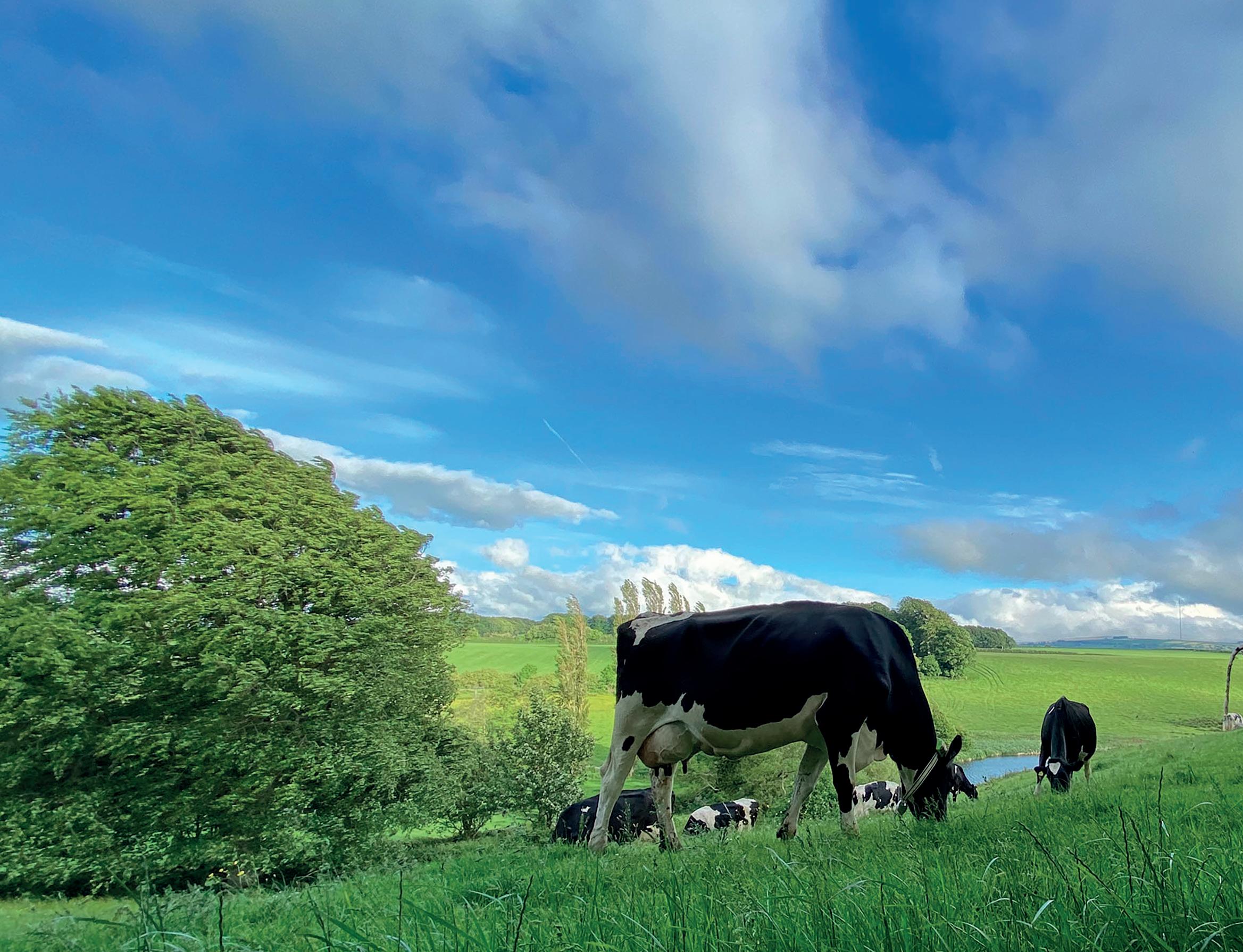
Nitrogen fertiliser use is an area that remains under increasing scrutiny when looking to improve farm sustainability.
It is undoubtedly an essential part of nutrition programmes for farmers to maintain and increase yields, but assessing how it is used o ers the opportunity to purchase and apply it more e ciently.

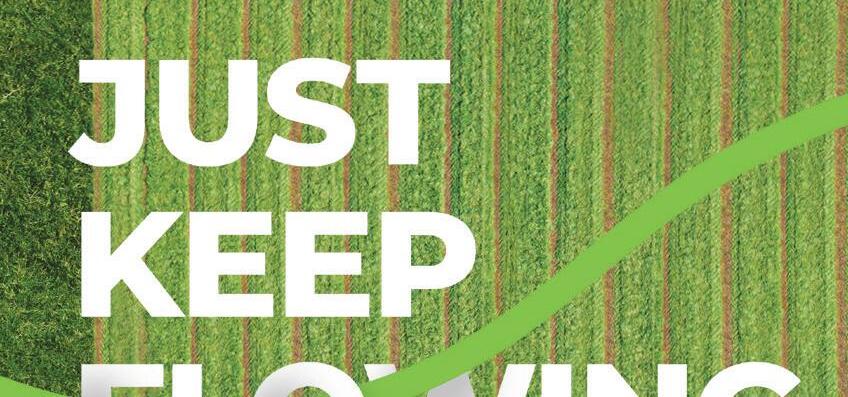


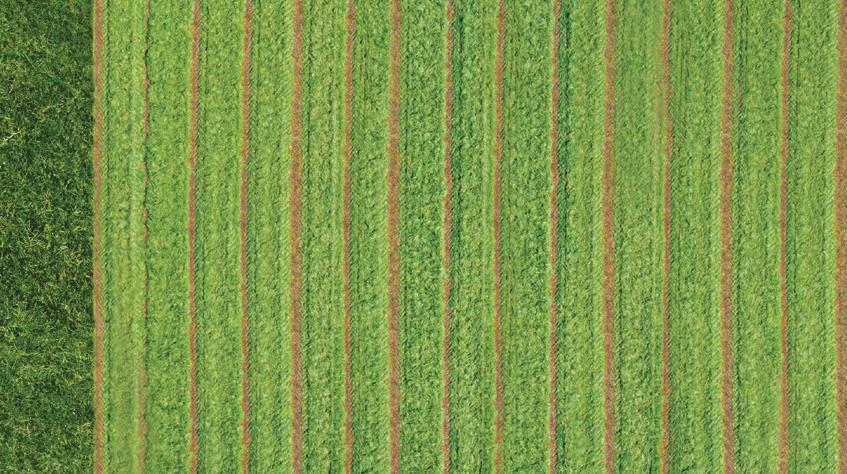
Guillaume Franklin, nutrition agronomist from Origin Fertilisers, says: “Improving fertiliser sustainability at farm level is about successfully ge ing four factors working together – applying the right fertiliser, in the right place, at the right rate, and at the right time.
applications through prescription nutrition.
Over application of certain nutrients is not only bad for the environment, but also has a nancial implication for farmers as well, says Mr Franklin.
“Making every granule count is of utmost importance to farmers.



“Using this simple guidance, supported by on-farm data such as soil analysis, allows a strategic approach to how and what nutrition we are applying.
Investment




“No longer can we just rely on an extra bag of nitrogen to achieve the additional yield and quality we want.”
“Ensuring the fertiliser is used by the crop not only makes the most from the investment, but also prevents potentially damaging environmental losses.




Applying the right fertiliser requires a clear understanding of what the crop and soil need to successfully match
“Fertile, healthy soils are the foundation for sustainable farming and we can not underestimate the importance of maintaining them.”
JULY 2024 28 GRASSLAND ESTABLISHMENT Multiflo o is the new liquid NPKS fertiliser for grassland. Talk to us on 01526 396000 Visit www.omex.com

Applying the right fertiliser, in the right place, at the right rate and at the right time is crucial, says agronomist Guillaume Franklin.

Lower total nitrogen trial
JMatching soil nutrient deficiencies with prescription nutrition has an essential role in farming sustainably, but further changes are possible when assessing the role of the primary nutrient, nitrogen.
A two-year trial in Ireland explored if reducing total nitrogen inputs by 15% could maintain grass quality over consecutive growing seasons.
The trial took place on grazing land, with results measured in terms of using grass as a feed.
Mr Franklin says: “Part of the reason for the trial was to highlight the difference between
nitrogen and nutrition and that nitrogen alone cannot grow healthy and nutritious grass.
“By replacing the nitrogen with nutrition, farmers will make the most of their home-grown feed stock.”
The trial started in 2022 and compared a calcium ammonium nitrate (CAN) application at 304kg/ha to an Origin Fertilisers’ Sweetgrass fertiliser, applied at 259kg/ha.
A crucial point was the total nitrogen application was cut by 14.8% on the Sweetgrass area as it contained a nutrient
Continues over the page...
AXIS PRECISION Fertiliser spreaders


AXIS mounted fertiliser spreaders, available in working widths from 12m to 50m and capacities from 1,000L to 4,200L.
Contact your KUHN Dealer or visit our website to see the full range: www.kuhn.co.uk
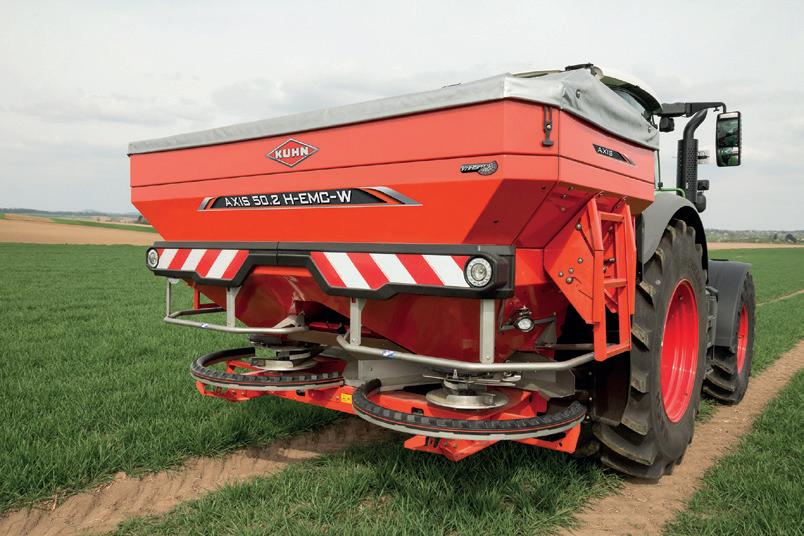
Scan the QR Code to visit the ‘Fertiliser Spreader Range’ website page

JULY 2024 29 GRASSLAND ESTABLISHMENT UNRIVALLED SPREADING PRECISION
GRASSLAND ESTABLISHMENT
Lower total nitrogen trial (continued)
make-up of 23 nitrogen, 5 sulphur (SO3), 5 sodium (Na2O), and magnesium, whereas the CAN product contained just 27 nitrogen.
Mr Franklin says: “The trial’s aim was to assess if the two areas could deliver equal performance in relation to DM yield, nitrogen use efficiency, protein, digestibility and energy – metrics considered essential by farmers to improve herd performance and assess how successful nutrition has been.”
By using less nitrogen and achieving the same, or better results, farmers are contributing to lowering greenhouse gases.
Significant
However, a more significant factor at farm level is that the fertiliser applied is more efficient so that the crop can access more of it.
Results from the first year showed that the Sweetgrass area delivered increases in DM yield of 10.7% and improvements in protein, energy and nitrogen use efficiency were all registered when the grass was analysed.
From a sustainability perspective, greenhouse gas emissions associated with the production of fertiliser were reduced by 14.8%.
The second year of the trial also returned some positive data for the prescription area. DM yield increased by 9.9%,
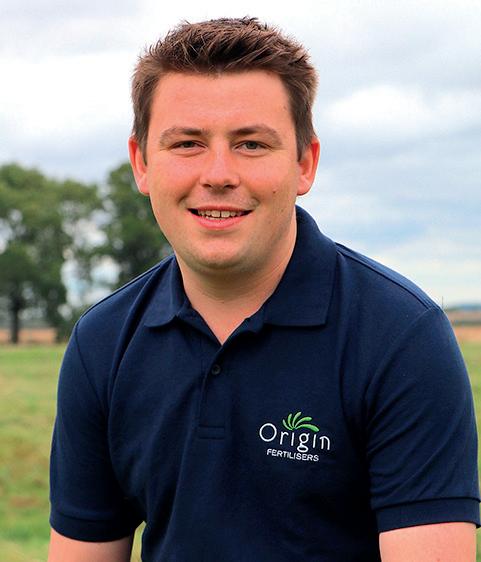

More efficient nitrogen application can improve profit and protect the environment.

there was an almost 2% increase in crude protein to 21.3%, as well as a 1% increase in digestibility to 70.8%.
Mr Franklin says: “The results from the second year prove that prescription nutrition is not a oneoff experiment.
“Soil and crops need regular additions of nutrients, such as sulphur and sodium.
“There is no question that the addition of sulphur will have supported nitrogen uptake and increased its use efficiency.”
Using polysulphate, rather than ammonium sulphate as the sulphur source, would offer both immediate and sustained release of sulphur for up to 55 days, so the application of nitrogen in the Sweetgrass will have been supported consistently by the polysulphate.
Carbon
Polysulphate is mined in the UK, so has a significantly lower carbon footprint when it reaches the farm gate than imported ammonium sulphate.
Sodium’s presence increases the sugar content in grass thus improving palatability.
This promotes cows to eat more grass, which increases DM intake per day and, ultimately, milk yields. Mr Franklin says that the trial not only shows
how nitrogen spend can be consistently reduced, but also the value of additional nutrition to support it, is essential.
He says: “The trial has highlighted that it is possible to reduce nitrogen content in grassland crops by 15% in consecutive years, with additional nutrition to support the reduction.
“The grass was able to access more nitrogen, from less product applied, and this is down to the presence of additional nutrients supporting uptake.”
Although agricultural salt and refined salt will both increase palatability and digestibility, the latter is more accessible due to the greater amount of landing
Nitrogen or nutrition?
JThis has been a key decision for farmers in recent years, with high prices prompting growers to rein in spend on essential primary and secondary nutrients in favour of maintaining nitrogen inputs.
However, the role that nutrition plays alongside nitrogen should not be misjudged, and gaps in applications will only lower nutrient reserves.
Mr Franklin says:
sites, and the plant can access it from more areas.
“The refined salt and size matched granules offer five times more landing sites compared to analysis made with agricultural salt.
“This translates to a Sweetgrass application of 250kg/ha providing an estimated 172 landing sites, whereas the same grade made with traditional salt only offers an estimated 34 sites.
“This is another reason why prescription nutrition and understanding the nuances of specific nutrients, is so important to maximising fertiliser effectiveness.”
“Maintaining and improving performance from less nitrogen inputs requires farmers to target additional nutrition. Reducing nitrogen may seem like a quick win based on these results, but we should not forget that the nutrition applied via the prescriptive product in this trial has proved essential in raising nitrogen use efficiency.
“These results would not be achieved by simply reducing nitrogen alone.”
JULY 2024 30
Guillaume Franklin
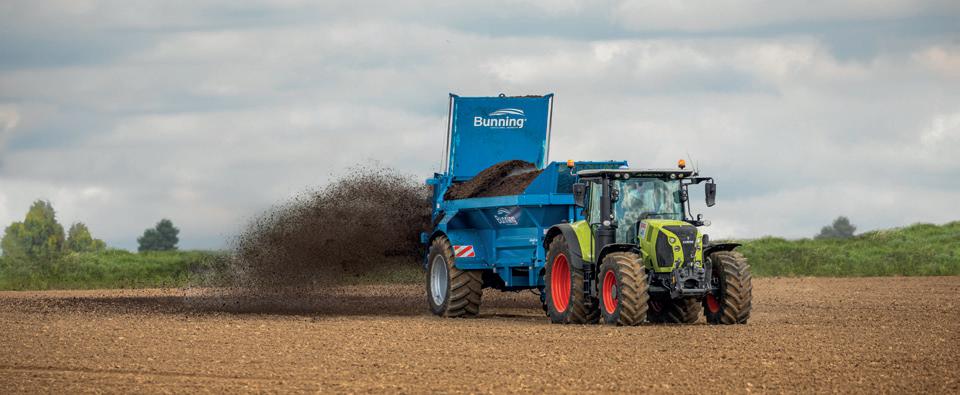



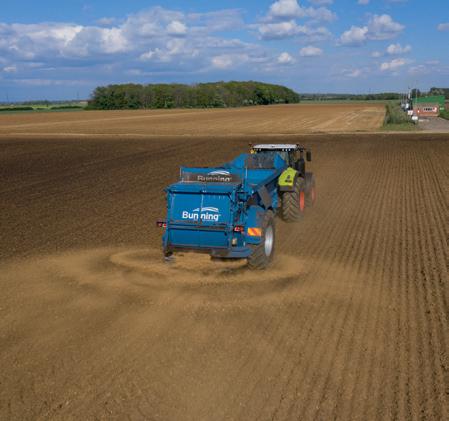



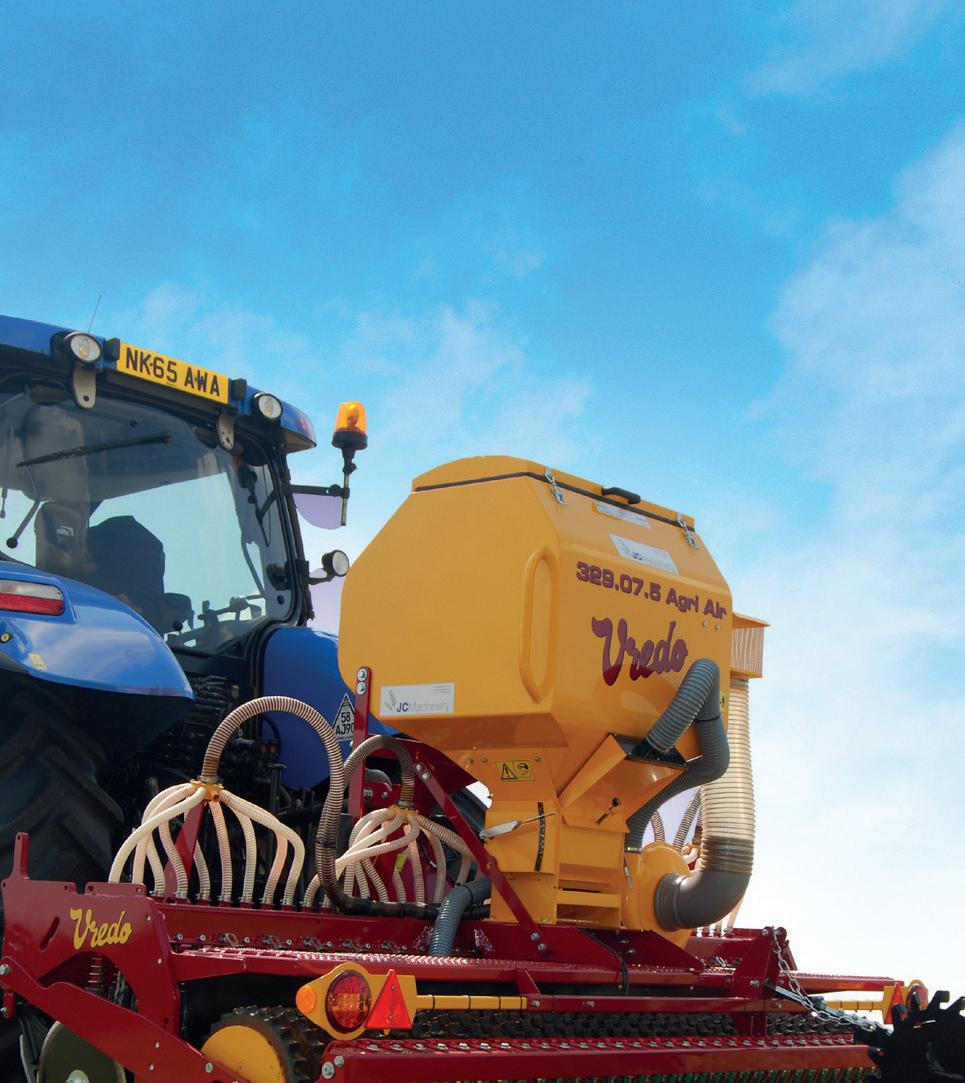
















31 JULY 2024 Lowlander ® Manure Spreaders Twin Vertical Auger TVA | 6 – 40 tonnes Horizontal Beater & Spinning Disc HBD | 8 – 40 tonnes bunning spreaders www.gtbunning.co.uk Tel: + 44 (0) 1362 860352 3 Year Warranty | Details available upon request Proven Precision Achieve germination rates of up to 96% the highest germination rate in comparison to other systems AGRICULTURE The
range
overseeders
quick, precise operation, saving you up to 80% in time and fuel compared to renovation
ploughing, cultivating, levelling, sowing and rolling.
01260 224 568
visit www.campeyagriculture.com Key Features: Flying insects stay away Birds stay out Energy efficient Reduces ground moisture High Volume Low Speed 100ft by 100ft effective working area HVLS - Fans Fora no obligationquote or moreinformation Cowcare SYSTEMS Innovators in Dairy Farming Wales/Midlands/S. England Fred - 07762800149 N.Ireland/ R.O.I John - 07732348225 Scotland/N. England 07591833853 Andrew - 07803124235 info@cowcaresystems.com
Vredo
of
offer a
through
Call
or
Carrying out reseeds is a central part of keeping grass productive to provide enough volume and quality of nutrition for livestock with home-grown forage at the centre of many successful systems.
High prices for fuel, labour, seed and fertiliser make reseeding a big investment, so it is important your weed control strategy is in place to gain optimum productivity from newly sown leys.
When establishing a new ley, controlling the weeds reduces competition for nutrients, light, water and space, and allows grass to reach its full potential as a valuable source of low-cost feed.
Older and more established weeds with larger root systems are harder and more expensive to kill, says Dave Gurney, Corteva’s eld technical manager for grassland crop protection.
He says: “It is vital to control the major problem weeds, such as chick-
Farmers are urged to make sure weed control is on their minds when reseeding leys and when herbicides are most effective. Dairy Farmer reports.
Manage weed threat for reseed success
weed, docks, thistles, bu ercups and ne les, as they can quickly dominate a new grass ley, reducing its ability to establish successfully and become productive. Even at low populations, weeds pose a threat to grassland productivity.
Full effect
“Ensuring grazed grass and winter forage are used to their full e ect is one way of keeping costs down on-farm. A good weed control programme in the establishment phase of newly sown leys is vital for optimal bene t.
“Controlling weeds when they
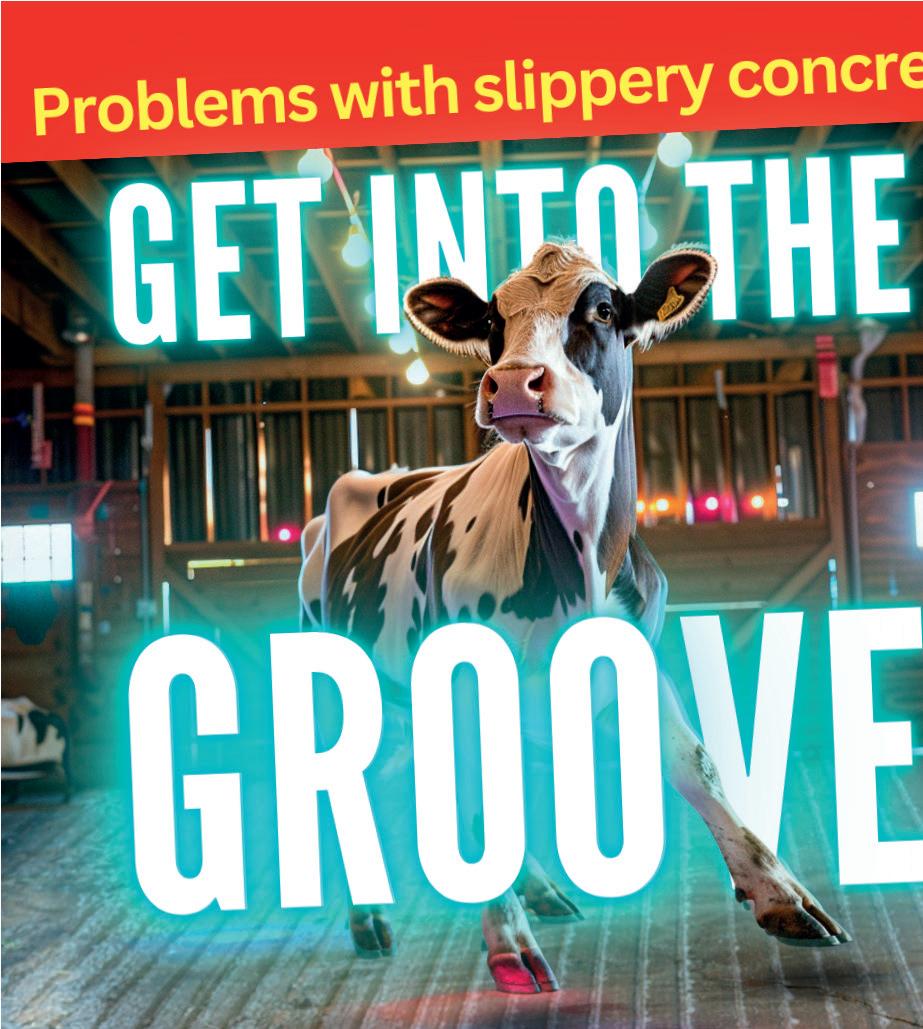


are young is more e ective and requires less herbicide than managing more established weeds. It also encourages the new grass species to dominate, restricting the potential for further weeds to ingress.”
In newly sown multi-species leys, where valued species other than grass are present, such as white and red clover, chicory, vetch, bird’s-foot trefoil, sainfoin or lucerne, weed control is more challenging.
Currently, the main approach is to use powerful broad-spectrum
Even at low populations, weeds pose a threat to grassland productivity
DAVE GURNEY
herbicides in the preceding crop to help minimise the weed burden in the newly sown multi-species ley. Mr Gurney says: “Make applications as e cient as possible. Use a properly calibrated sprayer and apply the water volume as stipulated on the label to ensure good coverage, increasing on-target spraying by minimising dri with dri -reducing nozzles.
“Choose a herbicide speci c to the job. Corteva has two selective herbicides for use in newly sown
New grass varieties on Re
JTo help improve grassland productivity, the 2024/2025 Recommended Grass and Clover Lists (RGCL) for England and Wales have welcomed 11 new varieties, including two Italian ryegrasses, six perennial ryegrasses, two lucernes and one festulolium variety.
The RGCL can help farmers understand the performance attributes of different varieties, and each new variety undergoes six years of independent testing across UK trial sites, assessing various parameters, including
total annual yields, seasonal growth, metabolisable energy yield, winter hardiness and disease resistance.
Only varieties demonstrating clear improvements over existing ones make provisional status.
Reassessment, after an additional five years of trials, determines whether a provisional variety is recommended for widespread adoption.
Ellie Sweetman, forage crop specialist at NIAB and RGCL trial co-ordinator, says: “To get on to the RGCL, varieties must
JULY 2024 32 GRASSLAND ESTABLISHMENT
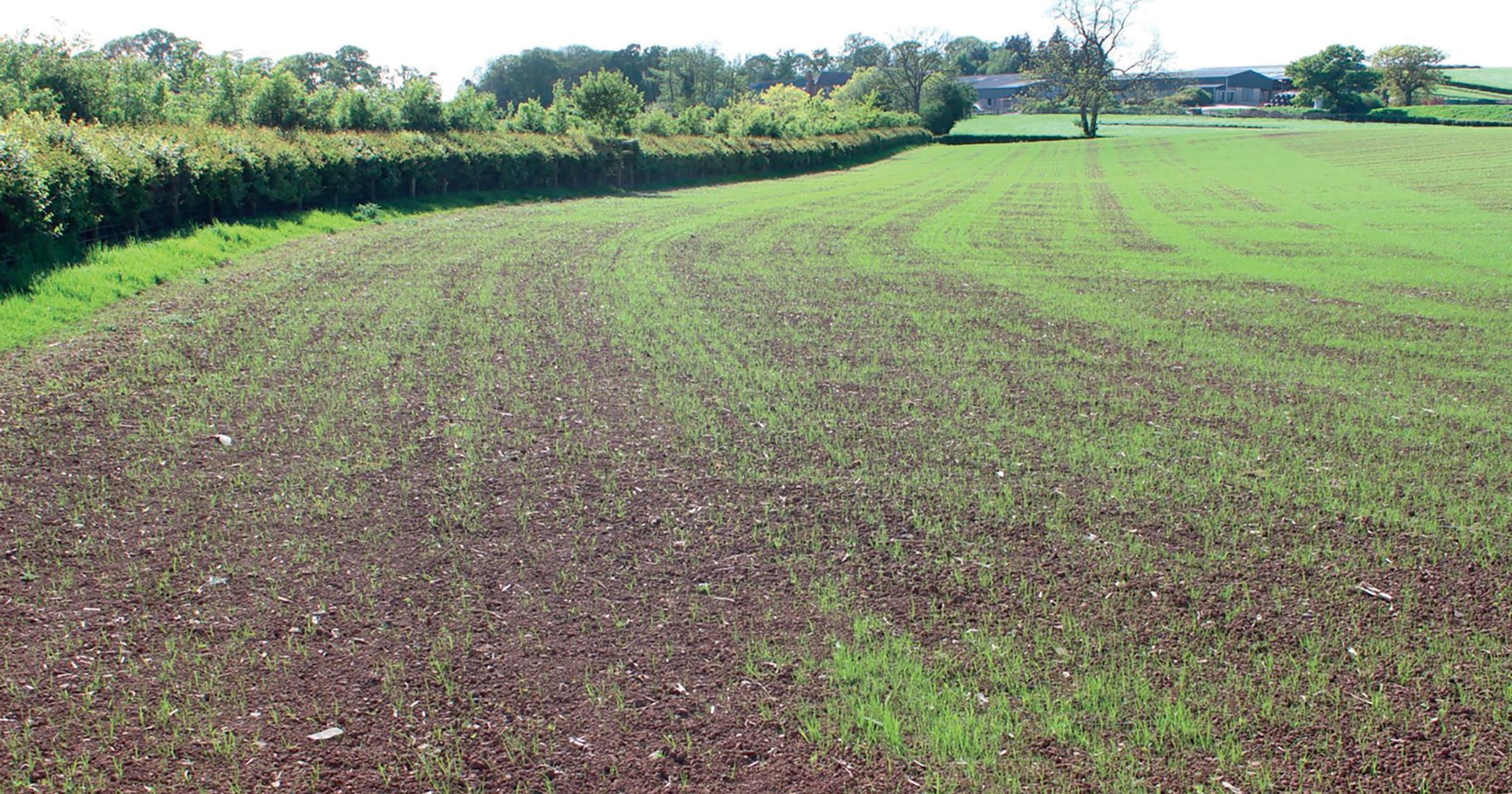
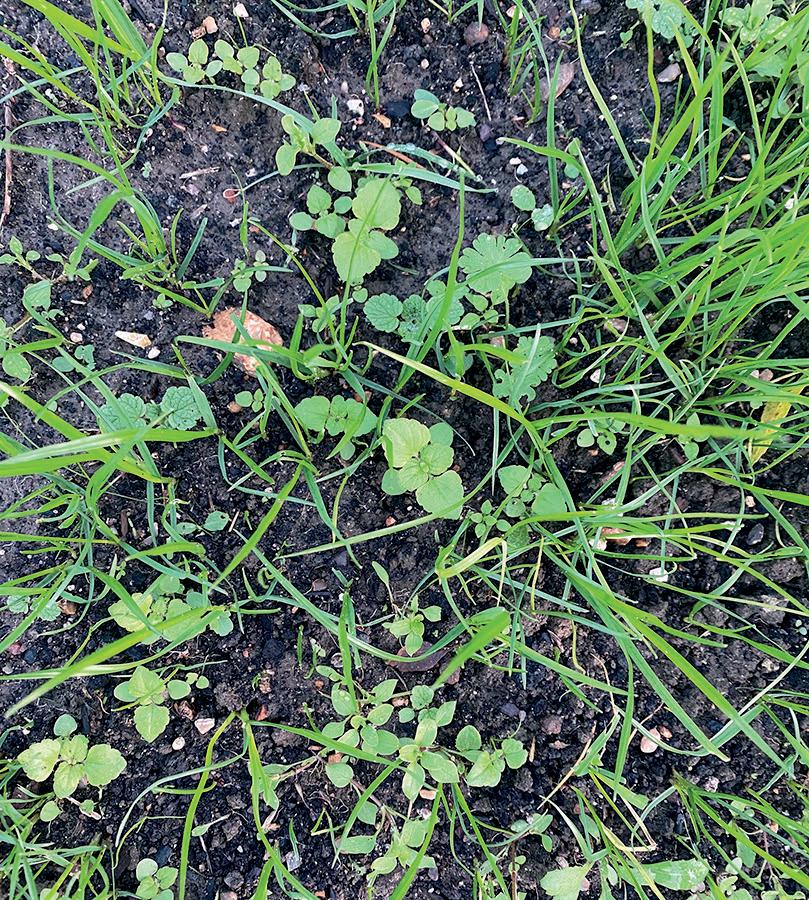
Weeds taking hold of a reseed.

leys. Select Envy and Leystar to kill weeds down to the roots and apply when weeds are small and actively growing.
“ is normally occurs at around six to eight weeks a er reseeding. It is important the grasses present are beyond the three-leaf stage before products are applied.”
commended List
offer a clear improvement to the existing list. This pushes the standard continually upward with increasing yield, nutrient use efficiency and metabolisable energy yield per hectare, therefore increasing production efficiency and sustainability.
Performance
“Reseeding with RGCL varieties will increase sward performance and give a good return on investment.
“By providing growers with accurate, independent data, the RGCL facilitates informed decision-making in selecting varieties and mixtures tailored to specific farming conditions and animal requirements.”
It


JULY 2024 33 QUALITY. SEE IT. SMELL IT. ECOSYL IT. Trust Ecosyl 100 additive to help conserve your silage. With its 1 million beneficial ‘MTD/1’ bacteria applied per gram of forage treated and 30-year track record, it’s been independently proven to boost ‘milk from silage’. www.ecosyl.com Volac International Limited, Volac House, Orwell, Royston, Hertfordshire, SG8 5QX. Copyright © 2024 Volac International Ltd. All rights reserved. 02187 Ecosyl Advert See It Dairy Farmer 170x121mm Portrait April 2024.pdf 1 11/03/2024 10:57
is key for a weed control strategy to be in place to gain optimum productivity
newly sown leys.
from
BREEDING & FERTILITY
Focusing on the vital role genetics play not only in producing sustainable milking cows, but also in achieving efficient results when it comes to beef from the dairy herd.
The genomic testing of dairy heifers is having a profound e ect on the genetic merit of the national dairy herd, with the gulf between the best and worst herds noticeably increasing. is pa ern has been revealed by the latest analysis from AHDB, which has identi ed a £193 difference in the average Pro table Lifetime Index (£PLI) between the most- and least-engaged herds.
Producers who are using genotyping services for 75-100% of their dairy heifers had an average PLI across their 2023 calf crop of £430 (see graph 1). is compares with a £237 PLI for those herds which test 0-25% of their heifer calves.
Marco Winters, AHDB head of animal genetics, says this represents a massive di erence in pro t potential between the best and worst herds.
Producers have been able to genotype heifer calves since 2012 and increasing numbers are doing so. A gap in genetic merit is opening up between the herds which test and those which do not. Ann Hardy reports.
Genomic testing widening gap between best and worst herds
He says: “Improving genetics is probably the cheapest and most sustainable way of making long-term
Better fertility, higher milk yield, healthier cows, CLARIFIDE® Plus tells you it all


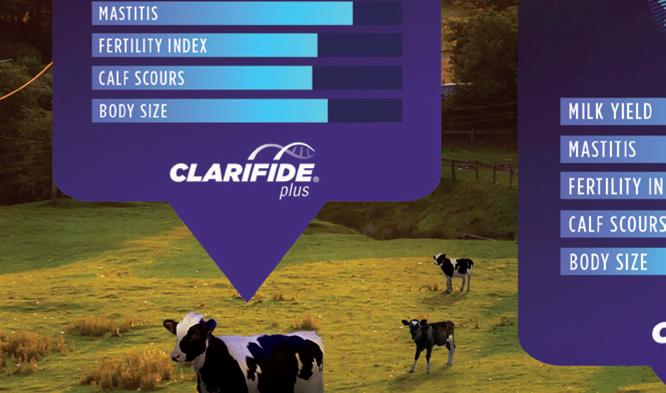
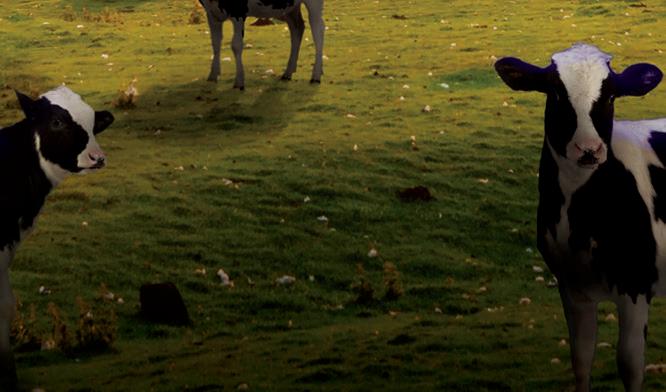



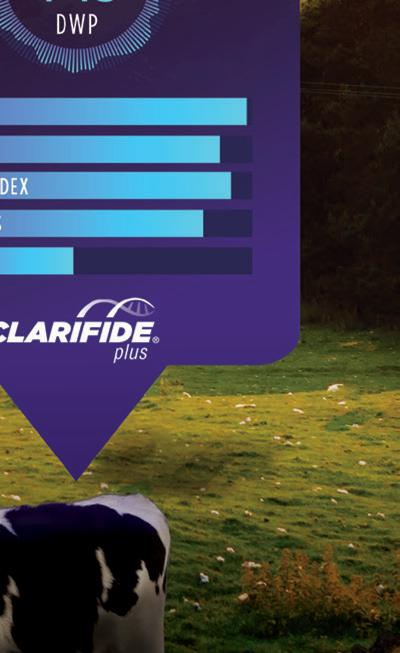


improvements to any herd, and when you are using a genetic index which has been developed specifically to increase pro tability, this feeds straight through to a farm’s bo om line.”
e theoretical value of this di erence is said to be around £19,300 for a typical 175-head herd. However,

There has been a sharp increase in the number of herds engaged in genomic testing their females.
analysis of actual margins from farm business accounts has revealed the advantage of a genetic di erence of this magnitude to be more than £50,000 (see panel on p36). Alongside this improvement has been a sharp increase in the number of herds engaged in genomic testing their females.
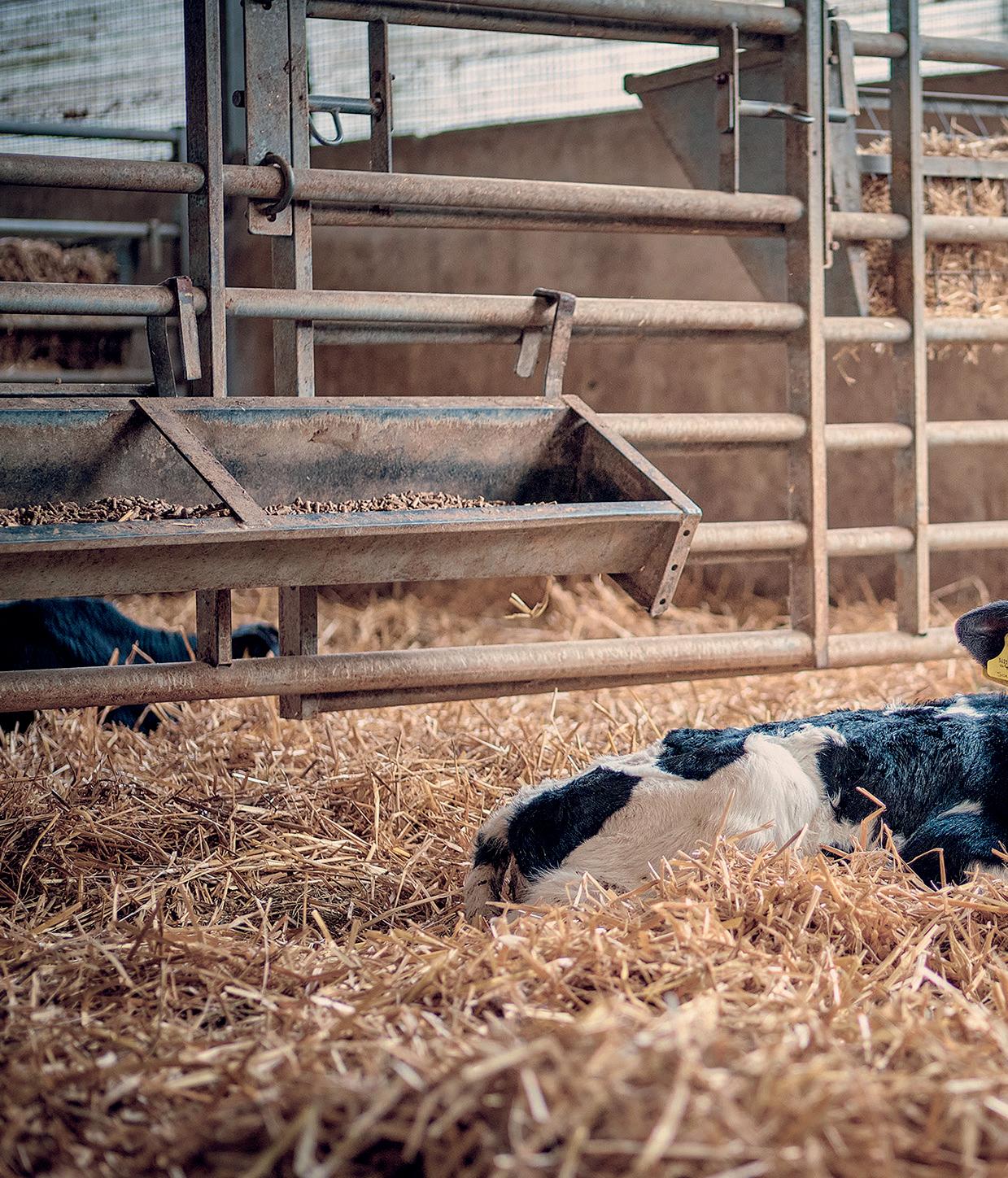
JULY 2024 34
PELVIC SCORING Information to avoid calving problems 40 EFFICIENT PRODUCTION Power of genetics
BEEF FROM DAIRY Importance of benchmarking
38
42
Further information can be obtained from Zoetis UK Ltd, Birchwood Building, Springfield Drive, Leatherhead, Surrey, KT22 7LP www.zoetis.co.uk • 0345 300 8034 • CustomerSupportUK@zoetis.com Produced May 2024 • MM-32561
Graph 1: Improvement in £PLI in herds by their enagagement in genomic testing (by year of birth)




is has now risen to 100,000 head per year, or roughly 20% of the dairy heifer calves born in the recorded herd (see graph 2).
This is projected to increase by about 15% in 2024, and represents uptake across the Holstein, Friesian, Ayrshire, Jersey and Guernsey breeds.
Mr Winters says: “All of this tells us that genomic testing of females is no longer considered to be for the elite, as it may have been in the early days of the technology.”
Drilling down into why it is making so much di erence, he says one of the rst advantages may be unexpected.
He says: “It is surprising how
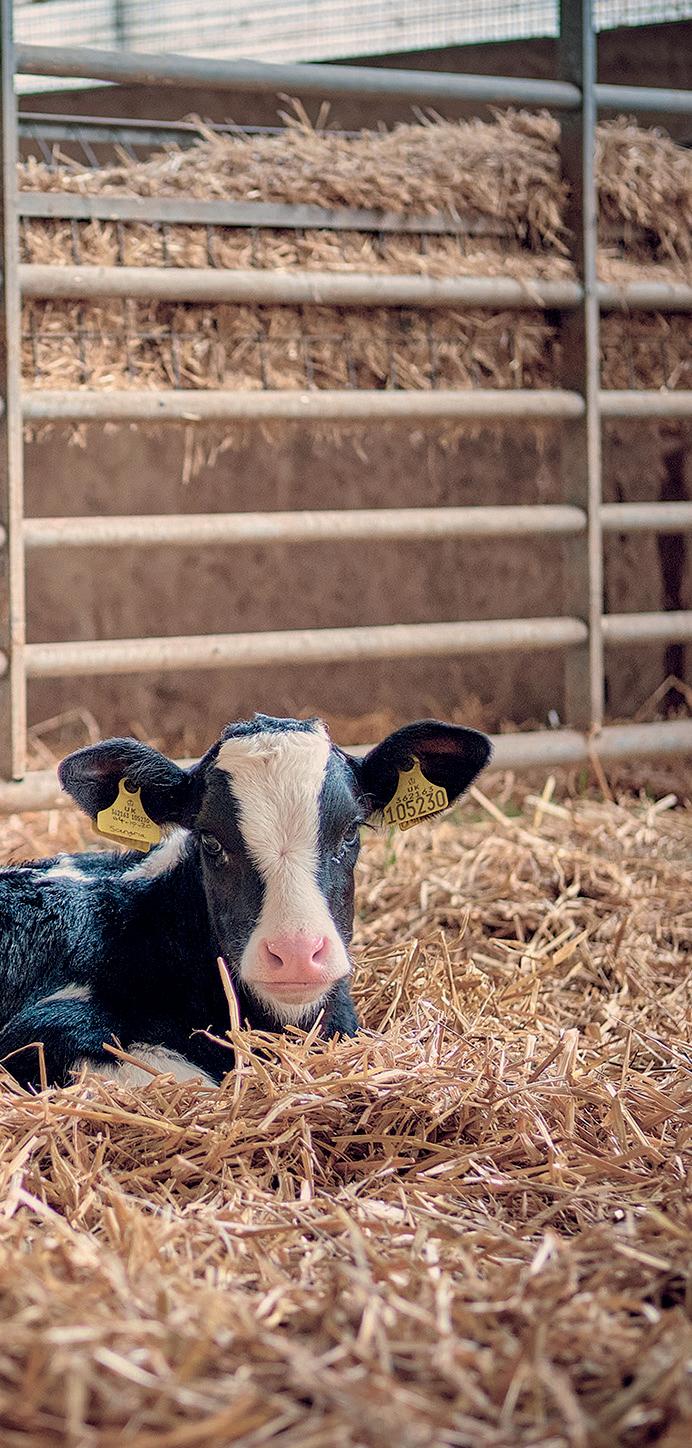
many animals have been misidentied, o en assigned the wrong sire, and sometimes even the wrong dam.”
In fact, about 17% of calves have their sires updated when the genotypes are analysed. is is either
Genomic testing
JGenomic testing provides a prediction of an animal’s genetic merit from its own DNA, and can be calculated at any age.
This contrasts with a Pedigree Index, which is based on a parent average, and is not such a reliable genetic prediction.
Genomic tests are offered by a cross-section of providers and produce a genotype for each animal – in other words a measure of its genetic make-up.
However, this information is of no value to farmers until it has been turned into a Predicted Transmitting Ability. In the UK, this process is carried out by AHDB, irrespective of which company or organisation undertakes the test.
AHDB works with most companies offering genomic services, but farmers are advised to choose one which offers UK £PLI values to maximise return on investment.
Continues over the page...

•
Do you recognise these signs? Have you heard of Q Fever? 59% 73% 73% 79% 79% 8% 0,2% 71% 67% 67% 65% 61% 38% 70% The values per country indicate the percentage of herds that tested positive to Q fever. Herd prevalence was determined by ELISA or PCR on bulk tank milk3 C.burnetii is able to travel up to 11 m carried by the wind and infect other herds in the process5 DID YOU KNOW ? Via inhalation Faeces Milk Via blood (ticks) Via ingestion Birth and abortion products C.burnetii is highly resistant in the environment6 Dust 4 months Soil 5 months Milk ambient T° 6 months Faeces 11 to 18 days Tick faeces 586 days Meat at 4°C >1 month A potential threat to your farms Coxiella burnetii: Born to create trouble Cattle are mainly infected by breathing in air particles contaminated with the bacteria. Infected cows, even if asymptomatic, shed C. burnetii mainly through birth or abortion products, but also in vaginal mucus, faeces and milk4 With more than one out of two herds testing positive for Q Fever (in some areas of the UK), farmers can no longer afford to ignore this disease1,2 1 / 2 Speak to your vet about diagnosis and vaccination if you are concerned about Q fever. A disease that has the potential to have significant impact on livestock health and production. Ceva Animal Health Ltd, Explorer House, Mercury Park, Wooburn Green, Buckinghamshire, HP10 0HH Tel 01628 334056 COX07AD www.qfever.co.uk If you are seeing these signs in your herd without an obvious cause ask your vet about Q fever and diagnostics Stillbirth Weak newborns Abortion Infertility Premature calving Retained placenta Metritis This information was provided by Ceva Animal Health Ltd, makers of Coxevac® DID YOU KNOW? • Q Fever is endemic in GB dairy herds1 • It causes reproduction and fertility issues to cattle, sheep and goats2 • It is also a zoonosis, risking the health of those working with livestock • It is caused by the bacterium Coxiella burnetti
BREEDING & FERTILITY
inhalation
also via faeces, milk and vaginal mucous
Infection is generally via
but
on the wind3,4,5
References 1. Velasova M. et al. 2017. Herd-level prevalence of selected endemic infectious diseases of dairy cows in Great Britain. J. Dairy Sci. 100:9215–9233 2. López-Gatius F., Almeria S., Garcia-Ispierto I. (2012) Serological screening for Coxiella burnetii infection and related reproductive performance in high producing dairy cows. Research in Veterinary Science Aug. 93 (1) 67-73. 3. Hawker JI. et al. 1998. A large outbreak of Q fever in the West Midlands: windborne spread into a metropolitan area? Commun Dis Public Health. 1998; 1:180–7. 2. Tissot-Dupont H, Amadei MA, Nezri M, Raoult D. Wind in November, Q fever in December. Emerg Infect Dis. 2004 Jul;10(7):1264-9. doi: 10.3201/eid1007.030724. PMID: 15324547; PMCID: PMC3323349. 4. Nusinovici. 5. Clark et al, 2018. Airborne geographical dispersal of Q fever from livestock holdings to human communities: a systematic review and critical appraisal of evidence. 6. Welsh et al., 1959. Q fever studies. XXI. The recovery of Coxiella burnetii from the soil and surface water of premises harboring infected sheep. Am. J. Hyg. 70 : 14–20.
• Coxiella b. can be carried
• Coxiella b. is persistent, surviving up to 5 months in soil6
SOURCE : AHDB
2005 2007 2009 2011 2013 2015 2017 2019 2021 2023
£400 £300 £200 £100 £0 -£100 -£200 -£300 -£400 Q4 (<25%) Q3 (25-50%) Q2 (50-75%) Q1 (>75%)
£500
BREEDING & FERTILITY
because the wrong sire was recorded (7% of cases) or the sire was not recorded at all (10%). Dam misidentification runs at a lower proportion, but is still an issue.
He says: “This means that if farmers think they are breeding from their best heifers, this may not be the case. This has implications, not just for the quality of their replacements, but also for inbreeding, through their choice of subsequent matings.”
Other specific benefits are highlighted when individual traits are tracked across the different groups, not least seen in female Fertility Index (FI).
The average FI for calves in the non-testing herds is three points, compared with 4.7 for the testing group. This means those engaged in testing can expect to have shorter calving intervals and better non-return rates, as well as improvements in other related parameters of fertility.
Mr Winters says: “Genomic testing of females was actually introduced to UK producers in 2012, and it is interesting to plot progress in the run-up to this date.
“For FI in particular, this shows the worst herds today – which are not engaged in genomic testing –were actually the best back in 2005.
“We cannot explain this pattern with complete confidence, but it makes sense that progressive producers who are genetically engaged
have moved their breeding focus from almost exclusively milk production 20 years ago towards the health, management and fertility traits today.
“Conversely, those who are not so engaged in their herds’ genetics may have had lower production –itself related to better fertility –20 years ago.”
Similar benefits are seen in the herds testing 75-100% of heifers when fat percentage is tracked, although there has been steady genetic progress across the board.
He says: “It is clear that virtually every producer is focused on this trait for obvious commercial reasons, but again, those with more information are doing the best job.”
Maintenance costs
Maintenance Index shows a similar progression, with the herds most engaged in genomic testing breeding cows with the lowest maintenance costs.
He says: “This is particularly encouraging as maintenance costs are closely related to cow size and the attitude to this has been slower to shift.
“This is not helped by the difficulties farmers have in finding smaller bulls, after many years in which their size has been on an upward trend.
“However, the last 10 years show some downward movement, particularly in the herds most engaged

in testing. But we do need to make sure we avoid any return to larger, heavier cows which are more expensive to keep.”
On balance, Mr Winters says the trends on display are very encouraging and farmers should be congratulated for the improvements the have made.
He says: “It is important to note that the genetic benefits seen in the top herds are not necessarily only a consequence of heifer genomic testing.
“Genomic testing is just one tool with which these farmers are probably engaged, and they are likely to be generally more switched on to genetics and potentially making better genetic selections.
“The key point to note is the scope for genetic improvement when more accurate information is used. The financial case should be compelling to every producer –there is free money to be had and all you have to do is choose better genetics.”
rFarmers can benchmark their herd’s £PLI using AHDB’s Herd Genetic Report (ahdb.org.uk/herdgenetic-reports) which is available for all producers who are fully milk recording.
How much is the extra improvement worth?
JAHDB analysis of genomic testing in this study has investigated how herds perform for Profitable Lifetime Index (£PLI). This is calculated from Predicted Transmitting Abilities (PTAs) for a cross-section of traits, each of which is weighted for its relative economic importance.
Just over one-third of £PLI is accounted for by milk production, with the remaining two-thirds comprising health, fertility, survival and efficiency traits.
Each PLI point is estimated to be worth £1 over an animal’s lifetime.
This benefit is conferred on the animal’s progeny (because it is a transmitting ability) rather than on the animal itself. The value to the animal itself is actually double that amount (£2).
Theoretically, the £193 advantage in PLI for the herds which are testing (quartile 1) compared with those which are not (quartile 4) is therefore
worth £386 for the animal itself over its lifetime (or around £110 per lactation, assuming an average lifespan of 3.5 lactations).
This is worth £19,300 each year over a 175-head herd.
However, the value of £PLI has been tested by farm consultants Promar, using fully bank-reconciled financial data from milk recorded Holstein herds using the consultant’s farm business accounts.
Actual worth
They found that, in practice, each PLI point was actually worth £1.58 in extra margin per animal per lactation (2022 value).
This means the £193 PLI difference between the herds engaged in genomic testing and those which are not is worth £305 per lactation.
Over a typical 175-head herd, this equates to £53,365 per year – well over twice the theoretical value.
JULY 2024 36
SOURCE : AHDB
females genotyped
year of birth and genomically evaluated by AHDB 2010 2011 2012 2013 2014 2015 2016 2017 2018 2019 2020 2021 2022 20% 18% 16% 14% 12% 10% 8% 6% 4% 2% 0%
Marco Winters
Graph 2: Proportion of
by


































































SUPPORTING GUT HEALTH, PRODUCTIVITY AND PROFITABILITY


Gut health is a crucial factor affecting the health and performance of dairy cows, and is therefore key to farm profitability.
LEAKY GUT AND INFLAMMATION
The gut wall is composed of cells held together by tight junction proteins. In a healthy gut, these junctions allow small metabolites of digestion to pass into the blood stream for use by the animal, yet are tight enough to prevent the passage of larger, toxic substances and harmful pathogens into the blood.
During stress periods, the tight junction proteins retract, and the gut wall becomes more permeable, or ‘leaky’. When the gut wall becomes leaky, undesirable bacteria and toxic substances can pass into the blood stream, initiating an inflammatory response.
Inflammatory responses require energy. As this energy will be taken from the available measure the cow would use for production, we can see negative impacts on productivity, fertility and overall health.
ACIDOSIS AND ENDOTOXINS
Acidosis occurs when there is an imbalance of rapidly fermentable carbohydrates in the diet, causing a decrease in ruminal pH to a level below 5.6.
When the rumen environment becomes more acidic, the balance of digestive microbes changes, with increased starch digesters and less fibre digesters. Continually increased starch digestion further decreases pH.
This results in a significant imbalance in nutrient utilisation and has also been associated with reduced milk yield and butterfat, alongside health issues. The financial impact is substantial due to decreased production, and costs of treatment.
The reduction in ruminal pH stimulates the gram-negative bacteria present in rumen fluid to die and release endotoxins or lipopolysaccharide (LPS). These gram-negative bacteria can also be present further along the digestive tract.
It has also been well proven that subacute ruminal acidosis (SARA) and stress have been associated with increased permeability of the gut wall, and increased inflammation markers in the blood, likely due to the transfer of LPS from the gut into the blood.
Circulating LPS and increased permeability of the gut wall results in an activated immune system, which reprioritises the channel of energy to immunity and away from production, growth, and fertility.
Faulty tight junction
Undigested food particles, microorganisms and toxins Healthy tight junction
OUR SOLUTIONS
Trident MicroNutri has solutions to support animals during stress periods, with the aim of reducing the risk of leaky gut and minimising the release of endotoxins in the digestive tract. This is a two-step approach.
1.Support the stability of rumen pH with AcidBuf
AcidBuf is a unique, marine source bu er with highly available mineral sources. It has ten times greater surface area than calcium carbonate, and twice the bu ering capacity of sodium bicarbonate.
By stabilising rumen pH, the risk of acidosis and leaky gut is reduced, and proliferation and lysis of gram-negative bacteria are minimised, hence reducing endotoxin load. Additionally, providing a source of highly available calcium supports the immune system through increased neutrophil function.
Bind LPS in the rumen with Ultrasorb-R
The recent reformulation of Ultrasorb-R has considered both existing and newly available raw materials for both binding and detoxification.
The upgrade of the yeast extract and the addition of a new live yeast has improved fusarium toxin binding, while the addition of new clays has increased the endotoxin binding capacity from 40% in the old formulation to 70% in the new Ultrasorb-R.
By providing endotoxin binding and detoxification, we support the cow through reducing the endotoxin load and likelihood and severity of an immune response.
ADVERT ORI AL Learn more by calling +44 (0) 2894 473 478
Figure 1: Gut wall cells showing healthy tight junctions and faulty tight junctions
Blood capillaries
1 2
BREEDING & FERTILITY
Pelvic scoring for potential breeding heifers is not a common practice in UK dairy herds but could be a valuable tool to help avoid difficult calvings. Wendy Short reports.
Pelvic measurement scoring in dairy herds
Calling in a vet to establish pelvic scores for potential breeding heifers is usually restricted to herds with a history of dystocia, especially among first-calvers, says vet Maarten Boers, of The Livestock Partnership, which is based in Billinghurst, West Sussex.
However, he believes that routine pelvic score monitoring can go a long way towards minimising the risk of future calving issues.
He says: “Pelvic measurement ranking is common practice in beef herds in the USA, but it is not so widely used within UK dairy herds.
“The most rapid progress can be achieved by putting the 10% of heifers with the lowest pelvic score to an easy-calving beef breed. Over time, this will reduce the risk of calving difficulties and maintain standards in herds which do not commonly experience the problem.”
The pelvic scoring process itself is similar to manual pregnancy diagnosis, explains Mr Boers. He recommends carrying it out when heifers reach 13 months, after the onset of puberty.
He says: “A pelvimeter is inserted
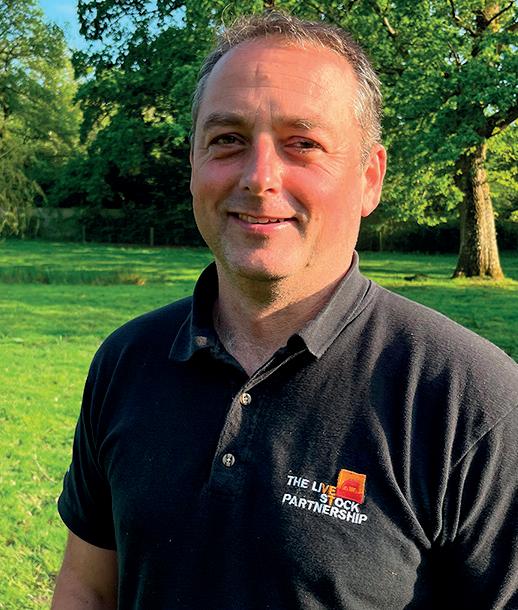
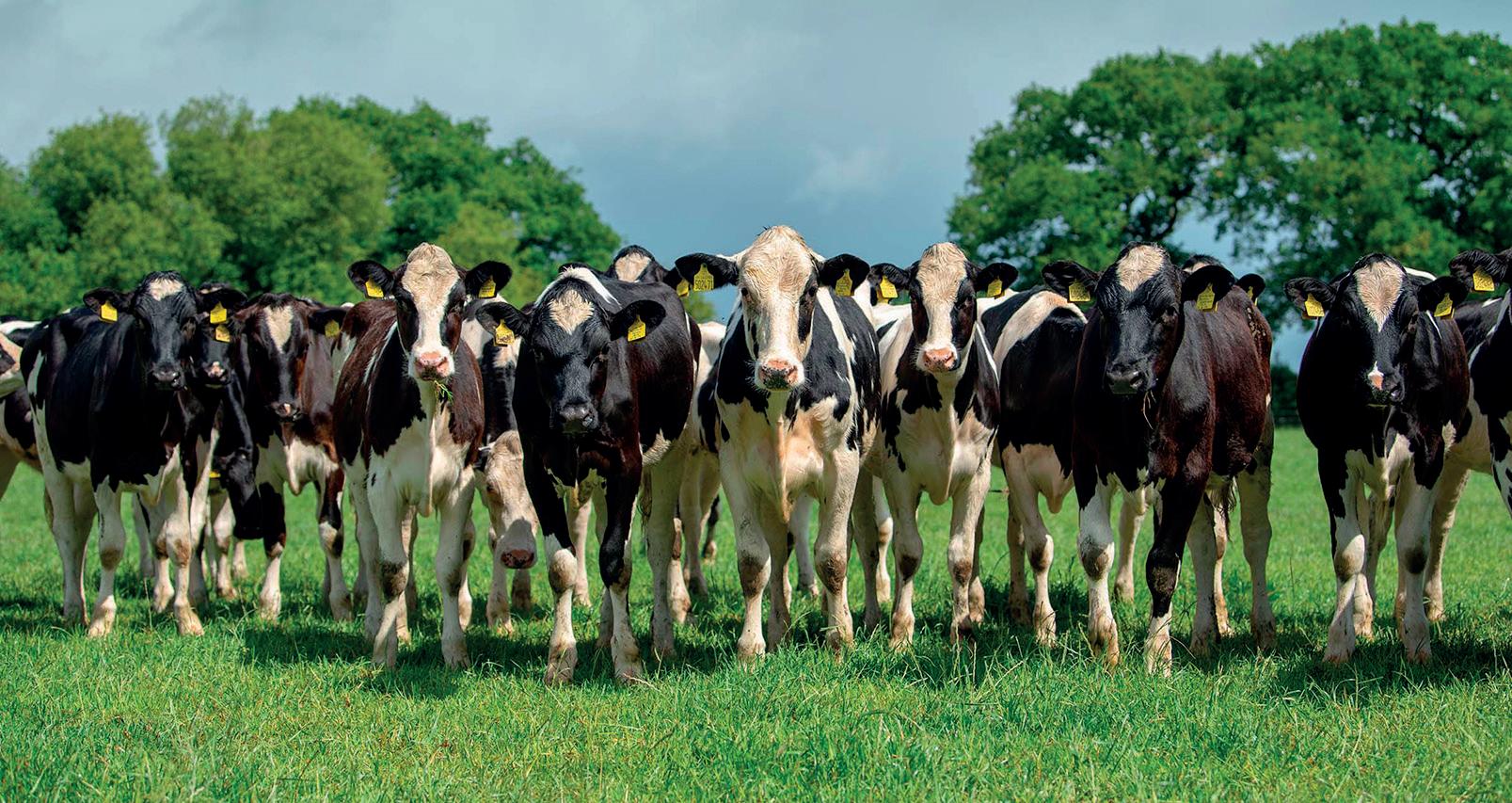
into the rectum and guided into position, where the levers are activated and the device is rotated to take measurements for pelvic height, as well as for internal width where the figure is taken from the widest point.
“The horizontal measurement will normally fall between 12-16cm, while the vertical measurement range is between 13 and 17cm.
“The numbers are then multiplied to produce a figure which determines the pelvic area in square centimetres, with a high score preferable for ease of calving.”
The number of heifers available for replacement selection will be increased, by hitting growth rate targets from birth says Mr Boers.
He says: “Calving heifers at 24 months will help maintain business profitability. To reach this goal, they must have reached 55-60% of their projected mature weight at 15 months, which is the point of insemination, or the time when they are put to the bull. Therefore, managers of herds with an average
mature cow weight of 650kg, for example, will aim to serve heifers at 360-390kg. Keeping growth rates on track will maximise numbers in the potential selection pool and make it easier to remove animals in the bottom group, in terms of pelvic measurement.
“Any heifer weighing less than 55% of the target mature bodyweight should be removed from the breeding group and either sold or kept on until she reaches the target.
Negative
“This can have a negative effect on the breeding pattern, especially in herds which operate a block calving system. It will also increase rearing costs and delay the start of the milking period.”
To ensure that the entire heifer group has reached the correct weight at the point of service, producers will need to follow strict rearing protocols and weigh young heifers on a regular basis – ideally once every four to six weeks says Mr
Failure to achieve the desired growth rates can often be traced as far back as issues with the timing, quantity and quality of colostrum within the initial period following birth, he adds.
Adopting a policy of breeding the lower end of heifers in the pelvic score ranking to an easy calving dairy bull will not solve the issue, he says.
“These sires will generally produce a smaller heifer calf, which will, in turn, be more prone to having a lower score for pelvic measurement. Therefore, the problem will gradually become worse down the generations.
“Nevertheless, rather than becoming fixated on the actual scores of individual heifers, a more practical approach is to simply exclude those with the lowest figures from the breeding group.
“Putting these animals to an easy-calving beef breed will keep the herd on course and reduce the risk of calving difficulties in the future.”
JULY 2024 38
Maarten Boers
Pelvic scoring should be carried out when heifers reach 13 months, after the onset of puberty.
Boers.




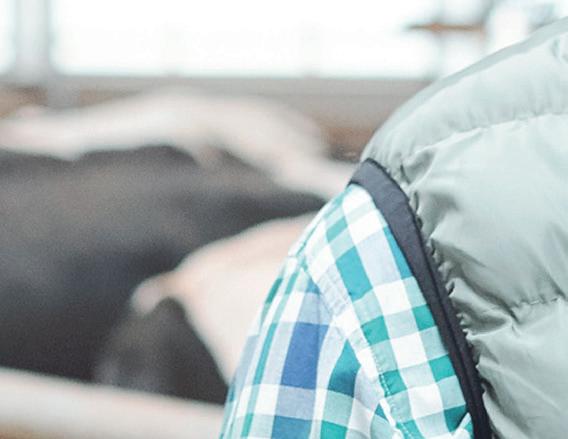
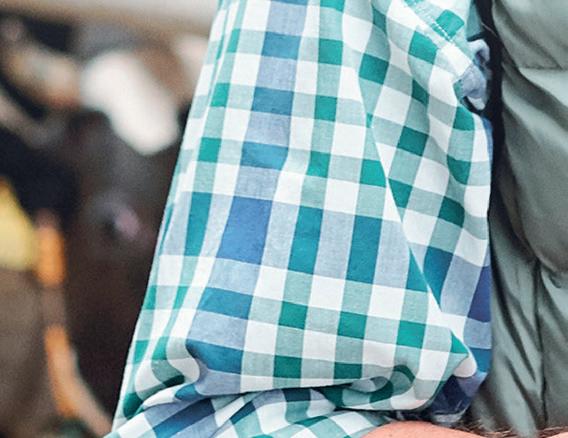
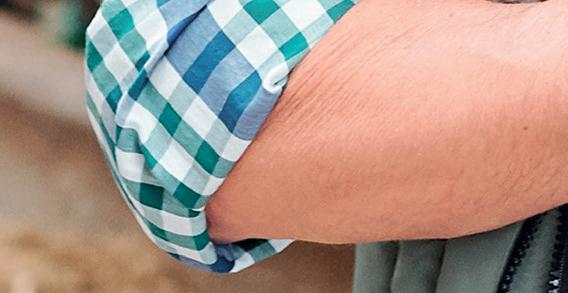






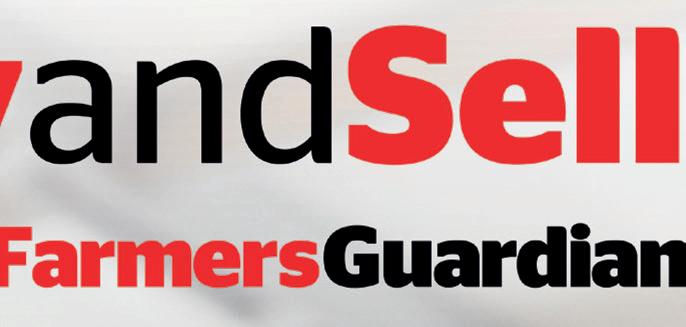



















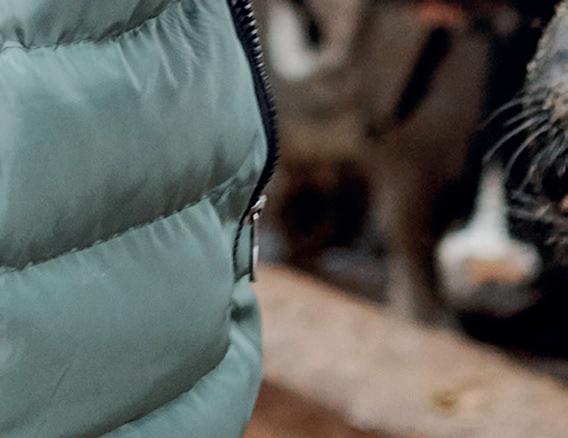






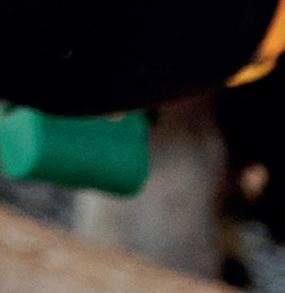



Browse. Sell. Buy at FGBuyandSell.com From dairy cattle, milking parlours, calving equipment and everything in between, you’re sure to find what you need on FGBuyandSell.com . Start listing your items FREE today! Brought to you by Farmers Guardian, FGBuyandSell is the platform for you to sell your items to a responsive farming community.
BREEDING & FERTILITY
A three-year collaborative research project on four commercial dairy farms has shown the valuable role of genetics in feed efficiency, profitability and sustainability. Dairy Farmer reports.
Improved genetic gain and performance
With feed being one of the biggest costs on-farm, both nancially and considering its contribution to the farm’s carbon footprint, selecting for higher feed e ciency as a secondary selection criteria to breeding objectives can have a positive impact on pro tability and sustainability, new trials have shown.
e research project, a collaboration between Cogent Breeding and Kite, took place over three years, starting in 2020, and was led by Kite Consulting’s head of genetics Rose Jackson.
Four family-run Derbyshire and Sta ordshire dairy farms, milking either twice or three times a day, took part in the trial. Herd sizes ranged from 180-500 cows, and were all predominantly housed.
Alongside demonstrating the role of genomics in improved genetic gain and performance, the project aimed to establish a baseline for Ecofeed scores across the four farms, and quantify the potential for increasing the Ecofeed scores during the three-year trial period.
Ecofeed is a feed conversion eciency index, introduced by Cogent

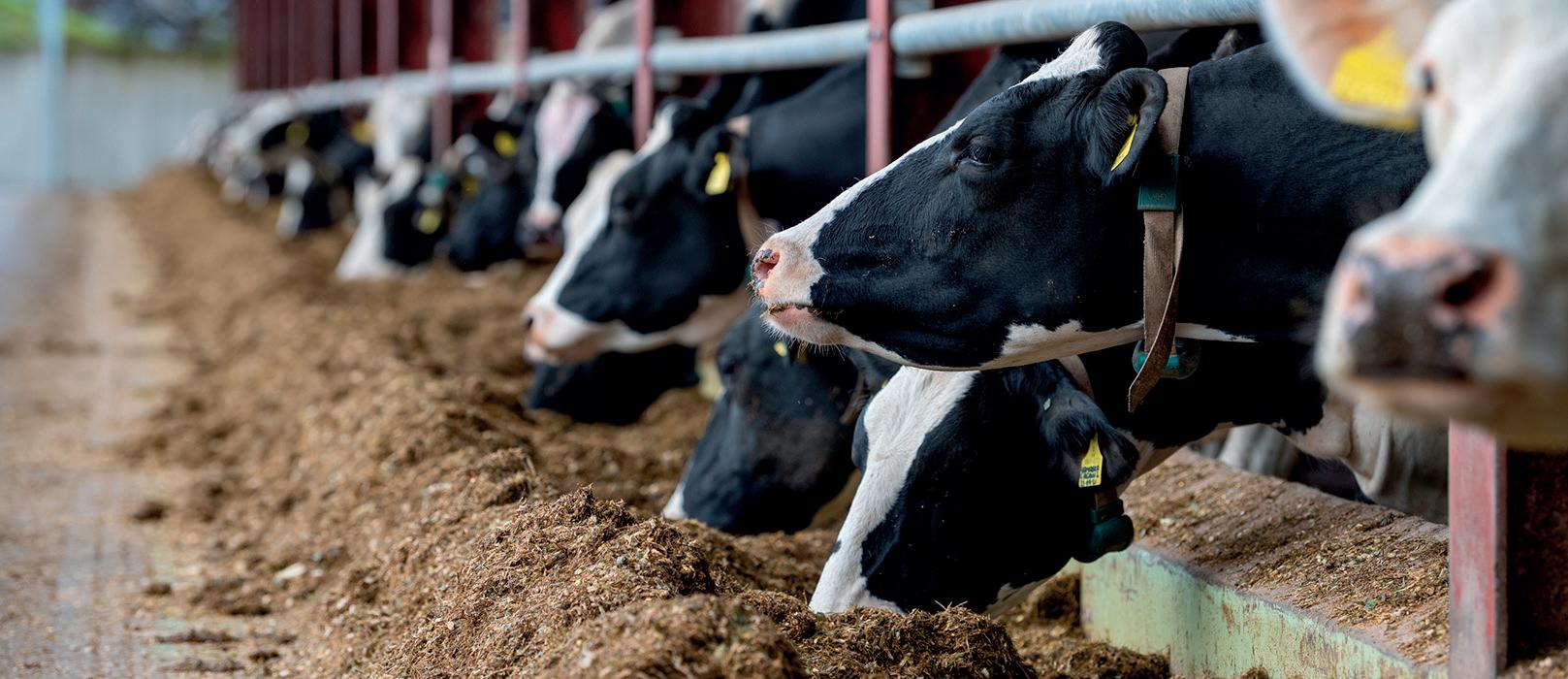

Breeding in 2017, which identi es animals with the genomic trait which do more with less, using fewer feed resources to produce milk.
Sion Parry, genetic data analyst at Cogent, says: “Ecofeed is a relatively new trait, and while lots of work has gone into its development, we were keen to study this over a period of time in a commercial se ing.”
Using a combination of genomic testing and a strategic sexed breeding strategy, the four trial farms all made signi cant gains in both genetic potential for milk solids and actual total solids production in analysis from 2020-2023.
Using Cogent’s PrecisionMAP breeding programme and reporting
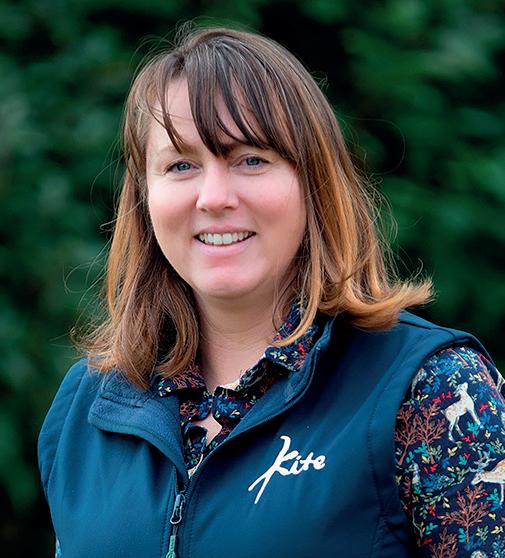
tool, genomic-tested females from each farm were analysed relative to the Ecofeed trait and each farm’s Cogent Customer Index, which is based on Pro table Lifetime Index (£PLI), but also weighted to each farm’s milk contract.
Milk solids
All farms in the project are Arla farmer members on components contracts, so milk solids were a key focus.
e breeding programme used female sexed dairy semen on all identi ed genetic elite females and Holstein bulls were selected on fat and protein, with all bulls scoring positive on the Ecofeed ranking.
Genetic progress was identi ed using two gures: £PLI and total milk solids.
On average, the rate of genetic gain from Ecofeed genetics quantied by £PLI was £69.50/year over a ve-year period, higher than the UK average of £60/year.
Milk recording data shows all four trial farms achieved or exceeded 1,000kg/cow/year in milk solids in 2023, demonstrating a 19% increase compared to 2020. It is estimated
that up to 50% of this improved output is down to genetics.
Comparing the whole herd to the heifer group showed an average 51% increase in genetic gain for total milk solids, meaning these heifers have 51% more potential to produce milk solids when they enter the herd compared to where the herd is currently.
Rose Jackson, of Kite Consulting, says: “ ese were very di erent farms genetically as a starting point, so we had to rst establish the baseline for Ecofeed.”
Ecofeed is expressed relative to a baseline of 100, with scores over 100 meaning be er feed e ciency.
On average, the farms have improved by 3.8 Ecofeed points, which equates to a predicted dry ma er intake saving of 0.2kg/cow/day.
“ is has been a great project to show how we can improve production e ciency through genetic gain,” says Ms Jackson.
Mr Parry says: “Feed e ciency, despite it being talked about for a while now, will become more and more important economically, and we have to use every tool we can to meet the industry target for carbon reduction.”
JULY 2024 40
Sion Parry
Rose Jackson
The project demonstrated how improvements can be made to production efficiency through genetic gain.

Get the Feedlync Feeling! Transform how you feed your herd with Feedlync’s innovative weigh system and feeding app Speak to our friendly team today to find out more! Call +44 20 3966 90 63 or visit www.feedlync.com Improved feeding accuracy Quicker ration changes Remote monitoring from anywhere Accurate daily costings Better stock control The average number of days it takes Feedlync to pay for itself on farm! 94 30 DAY MONEY BACK GUARANTEE
BREEDING & FERTILITY
With more than 50% of beef now coming from the dairy herd, according to AHDB figures from April 2024, the demand for a consistent product is greater than ever. Dairy Farmer reports.
Benchmarking key to beef cross dairy performance
By using data to improve performance and eating quality and lower the carbon footprint, the dedicated supply chain Pathway is producing Aberdeen-Angus cross beef ca le to a tight speci cation in terms of carcase weight and grade.
Cogent partnered with Pathway Farming, a farmer owned beef farming company in 2019 to provide AberdeenAngus genetics into the integrated supply chain.
With the aim of supplying
M&S with superior and consistent beef for consumers, Cogent genetics are selected across a variety of traits to meet the requirements for beef consumption as well as ease of management for the farmer.
Boomer Birch, beef programme manager at Cogent, says: “We work closely with dairy farms supplying calves into the programme to devise a beef breeding strategy that works for them.
“ roughout the year, we work with Pathway to ensure the end product tastes be er, is more consistent, and has a lower
carbon footprint, continuously assessing the Angus beef sires to ensure they deliver within the requirements of the programme.”
Collection
Once calves are collected direct from the dairy farms and predominantly reared on company owned and managed farms, they go out to partnership or company-owned grazing and nishing farms.
Data is collected and analysed at every stage of the animal’s life and Pathway has developed an
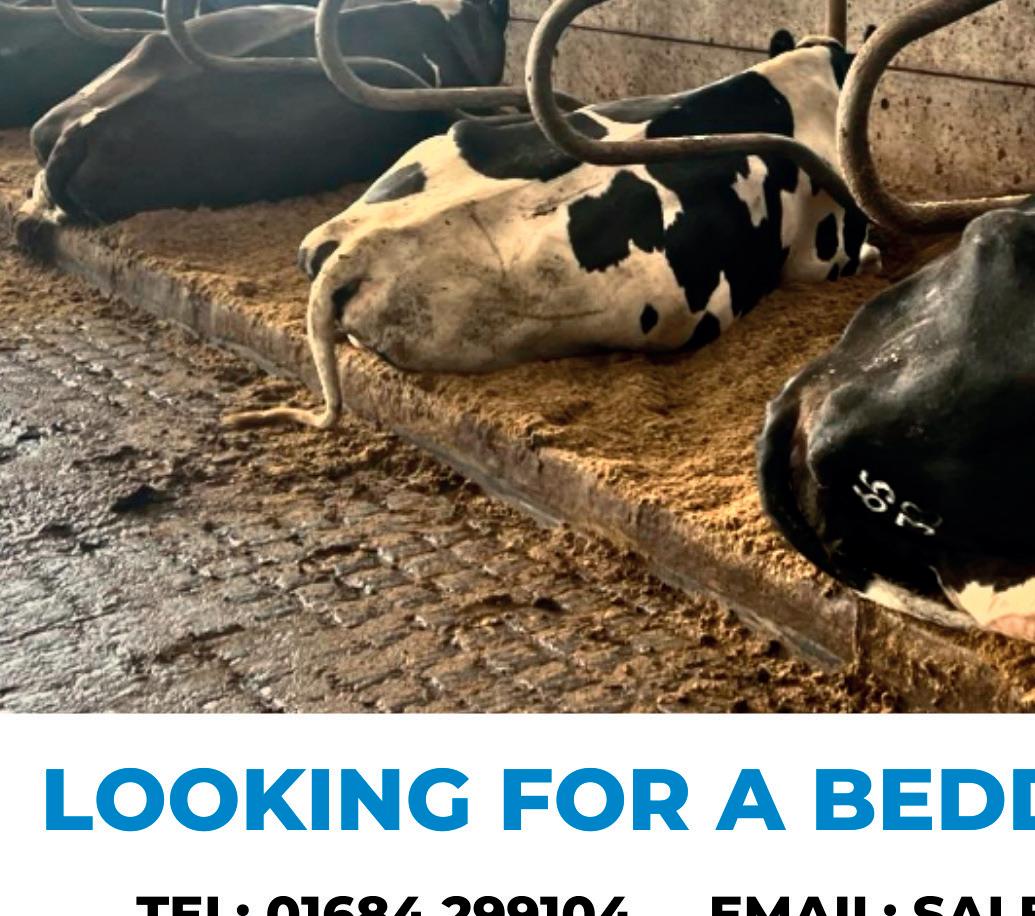

in-house database to collect data from all points, including dairy farm, rearing farm, health data, carcase grade and eating quality evaluation.
With a focus on excellence in calf health and performance through feeding, the data enables a detailed analysis of feed e ciency performance of all the Cogent Angus bulls in the programme, as well as grazing and nishing performance on a number of diets and feeding systems.
Mr Birch says: “Taking dairy cross beef calves all the way


JULY 2024 42

to the end consumer, with a continuous drive to develop the very best Angus sires, and providing feedback on calf data, provides pro tability for not only the dairy farmer, but throughout the supply chain.”
Pathway works with a number
of core dairy farmers, on the basis of clear expectations on calf quality and genetics, in return for a fair and stable pricing arrangement.
Contact

Farmers receive quarterly feedback on how their calves perform in terms of weight, daily liveweight gain, health traits and lifetime performance.
Quality Dair
Alongside this, regular contact between the dairy farmer and Pathway ensures major changes in calf quality are addressed
swi ly. is has led to positive feedback from dairy farmers who have made signi cant changes to their own protocols, to the bene t of their own calf rearing operations.
Continues over the page...
y L ivesto ck For Sale and Wante d!
alf & Fresh Calve d Heifers & cows
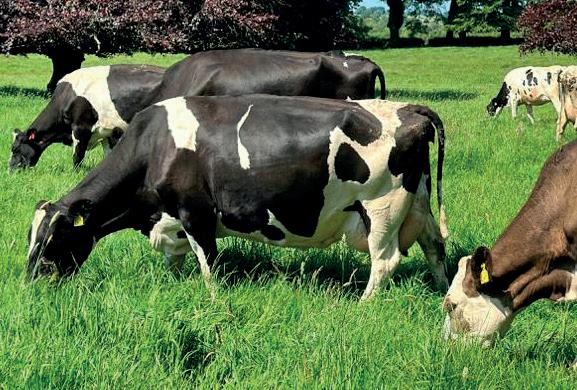
JULY 2024 43 C all: 00353 87 257 6434, 00353 44 935 6200 0044 7762 007371 or Email: info@cows.ie DiDelivered rect To Your Farm
Inc
Kat Henry is the calf manager of a herd which regularly tops the Pathway charts (turn the page for more details).
BREEDING & FERTILITY
In the field Peter Simpson, Simpson Farms, Galloway
JDairy farmer Peter Simpson, who has been supplying calves to the Pathway programme since 2022, has gone from being a typical calf supplier to regularly topping the Pathway performance charts.
Mr Simpson farms with his wife Sarah and the milk from their south-west Scotland-based dairy herd goes to Lactalis’ Galloway creamery.
Milking 1,040 cows twice a day on a solids contract, the fully-housed Holstein herd produces 11 million litres per year, achieving 4.3% butterfat and 3.45% protein.
With 16 full-time employees, many tasks are carried out in-house, including foottrimming, artificial insemination and property maintenance.
With a large focus on forage, they cut their own grass silage, spread their own slurry and grow wheat and maize on 445 hectares (1,100 acres) across two farms.
A further 202ha (500 acres)
is rented, with a view to grow more in-house for the grass silage-based total mixed ration.
Mr Simpson was an early adopter of sexed semen, having used it for the past seven-plus years, mainly on heifers initially, expanding on the whole herd in 2019.
With a dedicated fertility technician, heifers have been genomically tested for four years to accelerate genetic gain and achieve a more accurate picture of herd performance.
Developments
Mr Simpson says: “Due to industry developments, the quality of sexed semen has improved over the years, which has helped us drive up conception rates, which now average 45%.”
Female sexed semen is used on 90% of the heifers, with embryo transfers on the lower end.
Aiming for 350-400 replacements each year, 20% of cows are served with female

sexed dairy and the remainder are put to conventional Angus as part of the Pathway programme.
For the system, Mr Simpson works with Pathway and Cogent to select sires with traits, such as lower calving weights, shorter gestation lengths and greater growth rates.
Most importantly, the consistency of the end product is key, with Cogent’s Ecofeed feed conversion efficiency index being a part of the matrix to produce quality beef with a lower carbon footprint.
Calving all year round, Simpson Farms is producing 650-700 Angus-sired calves each year, with 24 calves going to Pathway every two weeks.
Kat Henry is the calf manager, taking care of stock on a daily basis, from the point of calving to when they are loaded onto the lorry. She weighs and monitors performance, organising eartag numbers and loads, and is responsible for ensuring high performance is achieved.


She says: “We rear the calves to two to three weeks of age, ensuring they exceed 45kg and that they are receiving all the required vaccinations to enter the Pathway supply chain. Then they are collected every second Tuesday morning.”
Mr Simpson was previously producing calves for a local supplier and liked to support his local market, but with no set collection day and a degree of unpredictability with every collection, he decided to join the Pathway programme in spring 2022.
This was at a time of rising feed costs, so Mr Simpson says he was looking for certainty, and made the decision to concentrate on expanding the dairy herd, rather than feeding calves on the farm for a longer period.
Mr Simpson says: “We know where the calves are at, as we have weighed them on-farm, and the precision in which the programme works, as well as the useful data, has helped us strive for better performance.
“We have embraced the feedback to better our own business, and if we can do things better, we share it with the team.
“Operationally, the routine of fortnightly calf collection and the clear responsibilities of us and Pathway are clear.”
JULY 2024 44
Peter Simpson
Simpson Farms produces 650-700 Angus-sired calves each year.













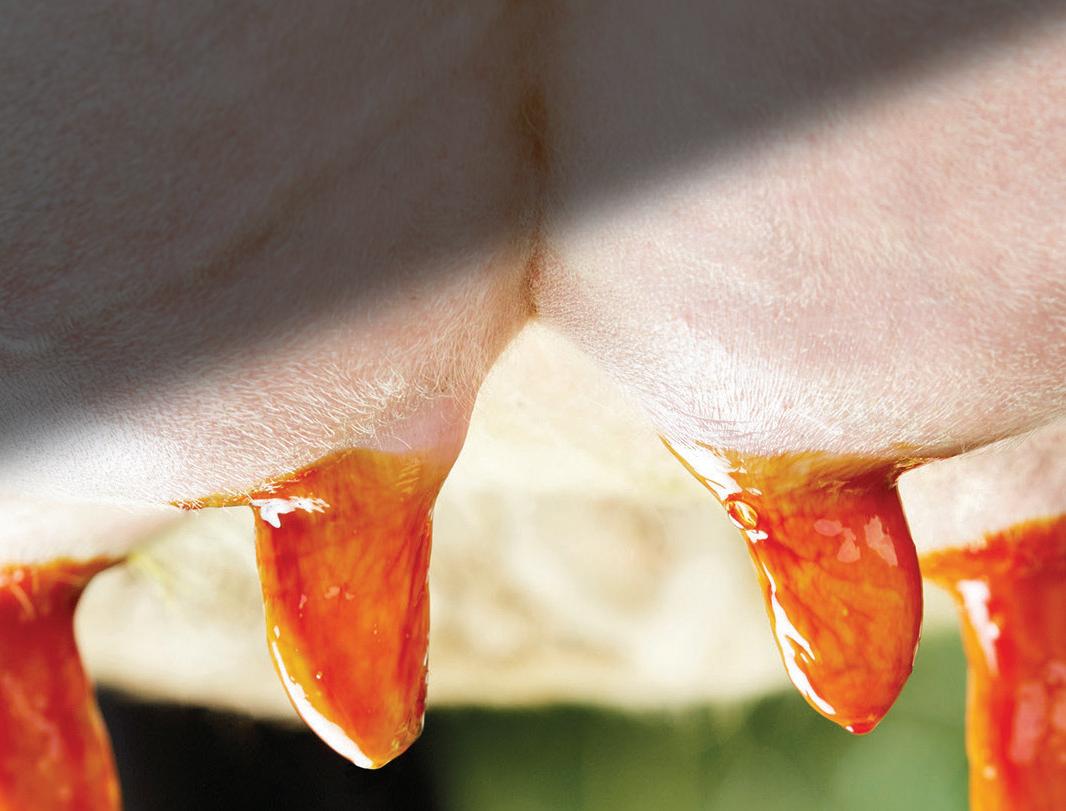
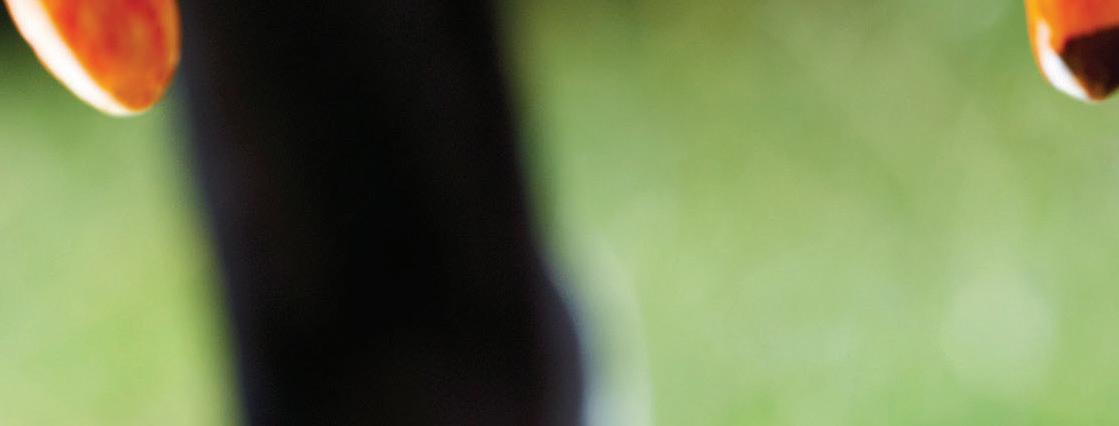

• Environmental Management; Clinically proven disinfectant products
• Post-Milking teat disinfection; Use a potent barrier dip which protects the teat canals between milkings
• Consider using a gold standard product routine for cows at most risk






How can Kersia help to reduce the risk of Mastitis?
post dipping properties
Premium quality combination of 5500ppm lodine available on the market
High emollient levels for superior teat conditioning ww w.kersia .uk Gold Glycodip Spray/Dip AVAILABLE AS: 25L , 200L & 1000L (IBC) T: 01576 205 480 E: enquiries.uk@kersia-group.com Scan the QR code to learn more from the Kersia team Disinfectants are regulatory biocides. Use biocides safely. Before use read the label and product information old Gly odip
•
•
A new state-of-the-art lameness detection device designed to visualise daily changes to hoof health aims to enable earlier detection and therefore earlier treatment. Katie Jones finds out more.
AI enables earlier lameness detection
The launch of Pedivue, by automatic footbath specialists Hoofcount, marks the completion of a two-year project with £250,000 funding from UK Research and Innovation, part of Defra’s Farming Innovation Programme. e system, designed utilising computer vision and machine learning, was developed by Hoofcount with the UK AgriTech Centre at the South West Dairy Development Centre in collaboration with farmers, and the Centre for Machine Vision (CMV) at the University of the West of England, Bristol.
Hoofcount’s Anthony Marsh says: “Digital dermatitis a ects well over 90% of dairy herds in
Digital dermatitis
lesions are difficult to spot, even with the trained eye
NICK BELL
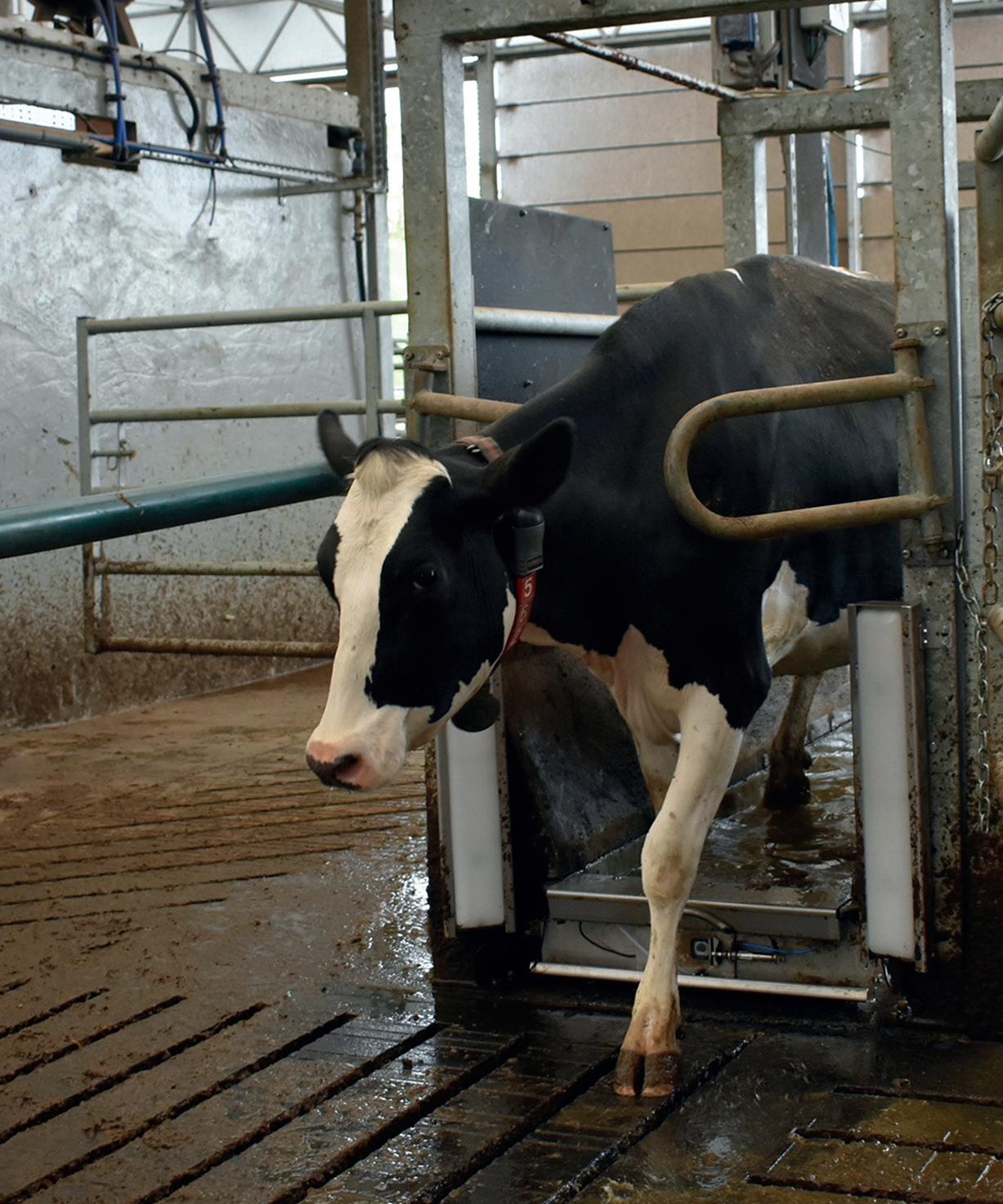

the UK contributing to lameness which continues to be one of the main, if not biggest, issue within the sector costing an estimated £300 per incident.
“While Hoofcount’s automatic footbath system is helping reduce and control lameness, particularly digital dermatitis, on numerous dairy units throughout the UK and overseas, we agreed we needed to develop a device to detect these issues as early as possible in order to enable prompt e ective treatment.”
Under-developed
He says farmers are good at many aspects of lameness prevention, including regular foot-trimming, correct nutrition, keeping environments clean and having e ective footbathing procedures in place, but where it can all fall down is when it comes to lameness detection. He says this has been an under-developed area.
And he says a er designing and trialling various options, the team involved in the process became aware that machine learning and AI was the way forward to gain best results.
He says: “We want to give farmers the tools to get on top of lameness in their herds. Pedivue
has the ability to identify digital dermatitis three to four weeks earlier than if it was done via inspection by the farmer or hoof trimmer.”
CMV’s Wenhao Zhang adds the computer vision and machine learning algorithm was developed by retro ing a single camera and an AI system to the exit of an existing Hoofcount footbath.
He says: “ e high-speed camera captured crucial moments of moving hooves, enabling an intelligent ltering algorithm to capture clear, square-on views of hoof soles for AI assessment.
“By ‘learning’ from extensive hoof data from four farms alongside veterinary expertise, the AI-powered system initially achieved over 80% accuracy in detecting active digital dermatitis lesions.”
Early detection combined with prompt e ective treatment is a critical part of managing digital dermatitis on-farm; it not only helps cows to quickly recover, but also reduces the risk of further spread, says vet Nick Bell, of Herd Health Consultancy, who has o ered advice and guidance to the project’s development.
He says: “Cows with visible
digital dermatitis lesions are the major source of new infections within a herd and the incubation period is very long. However, these lesions are di cult to spot, even with the trained eye.
“Regular footbathing is just preventative not a treatment, and occasional hosing of feet will help make lesions visible, however Pedivue is o ering a promising future, enabling farmers to easily identify lesions at the M2 active stage, before they reach the M4 chronic stage, and treat accordingly.”
Mr Marsh says the bene ts also extend to having data to establish trends and treating cows on an individual rather than herd basis.
Individuals
He says: “A lot of farmers are treating cows as herds but this system identi es those cows as individuals again.”
And he says he believes AI vision systems, like Pedivue, will have an important role to play in the future of the dairy industry.
“In 10 years’ time, cows will not have just wearables, cow monitoring will be done through AI vision systems, which will give us so much potential to manage
JULY 2024 46
ANIMAL HEALTH
Pedivue’s launch marks the completion of a two-year project.

cows in a healthy and more sustainable way.”
Pedivue is available on all Hoofcount’s footbaths, together with a retro t option.
A camera (inset) captures footage of moving hooves each time the cow steps away from the footbath.

How the device works
rA high-speed camera takes footage of the moving hooves each time the cow steps away from the footbath


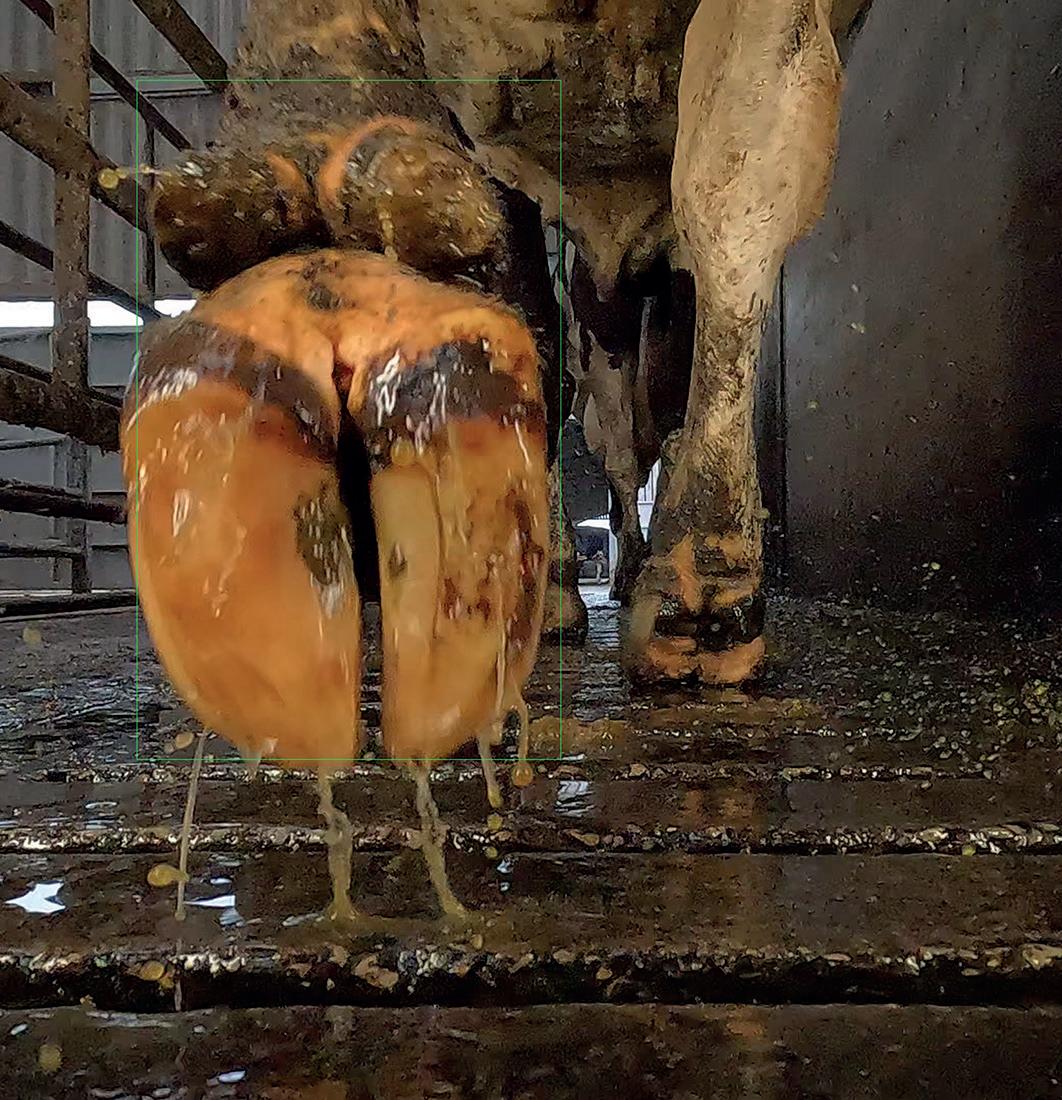
Mr Marsh says the cost of Pedivue will be about £1 per cow/ month, which will also include quarterly mobility scoring. is will initially be carried out by a trained

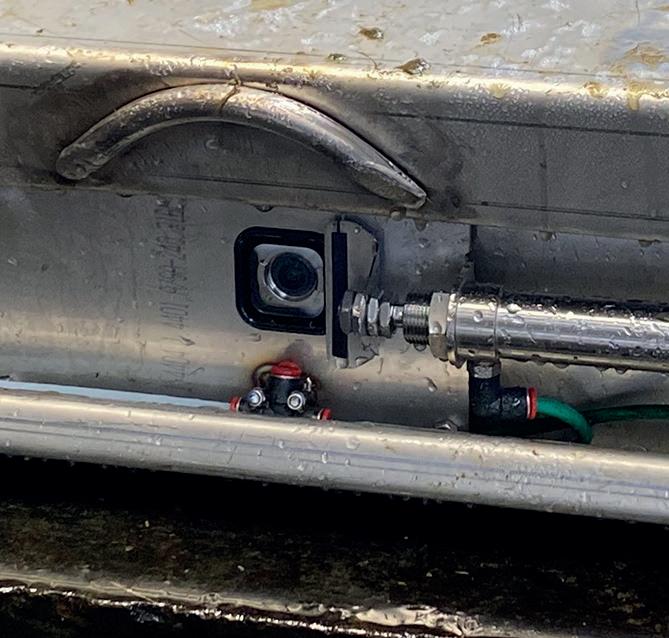

mobility scorer, but in the future the plan is to include this metric into the information the device can automatically monitor for along with other foot health issues.

rThe recordings featuring any images of digital dermatitis – either at the M2 active or M4 chronic stages – are collected in a centrally-located cloud-based database
rThe information is downloaded to a farmerfriendly dashboard for viewing on the farm’s PC web browser or phone app
rAn email alerts the farmer to the information and offers a treatment protocol
rA follow-up email is issued up to one week later reminding to retreat if necessary and with an accompanying protocol





Brand new to the market, CoolCalver™ has been developed as part of Cargill’s CoolCow® concept to mitigate the effects of heat stress on cows during the dry period and subsequent negative consequences on the unborn calf. T (01845)




www.provimi.eu/uk-coolcalver

ANIMAL HEALTH
@CargillAnimalUK
578125
Prepares the cow for a successful lactation Improves colostrum quality and absorption in the calf Reduces body temperature and dehydration risk Maintains nutrient availability for the cow and calf
A new Morrisons event aims to bring farmers in store to see where their produce ends up, and what consumers really want from their weekly shop. Dairy Farmer finds out more.
Retailer gathering puts producers in the spotlight
When doing your weekly shop, it is not very often that you see a cohort of farmers walking around the supermarket in their wellies – the very same farmers who work tirelessly to produce the food on the shelves. But this is exactly what happened at the Morrisons store in Skipton, Yorkshire, in a bid to bring together those who supply the supermarket chain.







The approach was a well-rounded one; at the heart of it was the idea of bringing farmers together, as taking time off the farm is not always easy and this provided a much-needed opportunity. A quick cup of tea, a slice of cake and a chat to a fellow farmer is, sometimes, all anyone needs. But it was also about insight and learning. Morrisons prides itself on putting its producers at the core of all it does, and the farmers who attended the meet-up heard about the supermarket’s various schemes, along with some consumer research data. Price, of course, came at the top of shoppers’ lists, but it also highlighted farmer stories resonate with customers – customers put supporting British farmers as their second most important reason to shop at Morrisons.
Morrisons is working to become even more customer-focused and hopes to get farmers in store to tell the British farm-toplate story – but that story must be simple and effective. An example of this is the supermarket’s ‘Chuckle Eggs’ range: a price-savvy product which heavily gives back to farmers who are doing their bit for the environment by planting trees and wildflowers for pollinators. There was also a focus on sustainability and the goals for net zero, with support present from the Sustainable School of Food and Farming and Carbon Toolkit (see ‘Sustainability’ panel for more information)
Emma Nelson, senior livestock manager for Morrisons, says: “This started from a farmer relationship activity and developed from there, but the idea to have it in the cafe is brilliant. We are moving to be more customer-focused and getting farmers in store to tell that British story.”
She also highlights that this is a way to ensure farmers feel appreciated for the work they do.





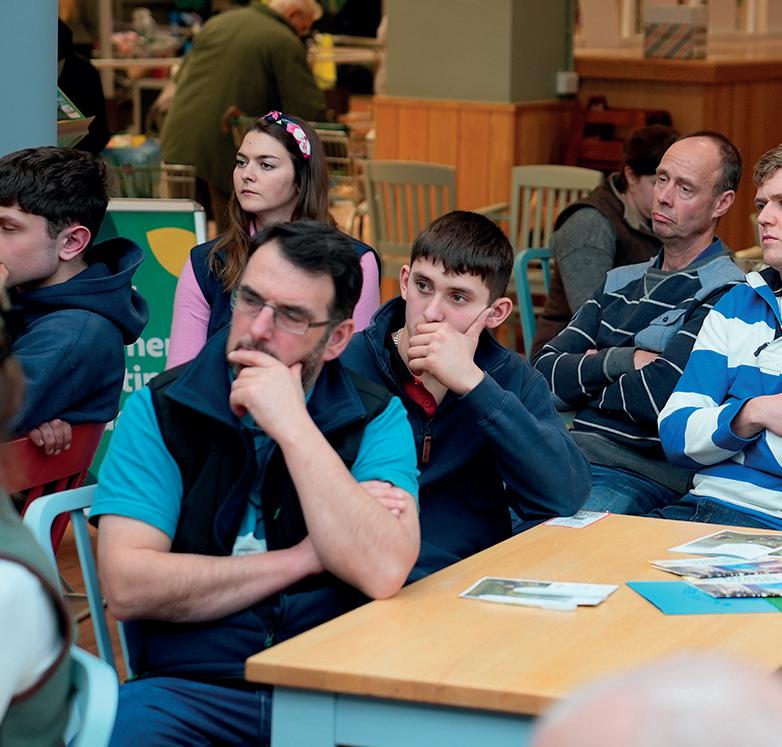







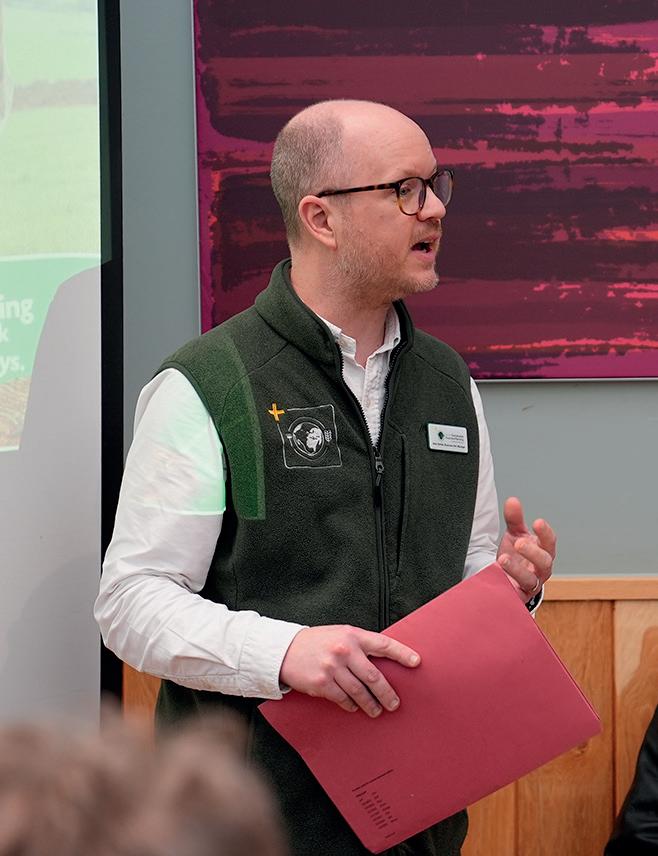









Visit farmersguardian.com/farm24
Search #farm24 on social media JULY 2024 48
Eating habits

AT the start of the meeting, farmers were presented with key statistics and insights into shopper habits. Many shoppers are driven by price and 99% of UK households buy meat, fish or poultry each year.
But the way people are eating is changing:
Consumers are switching to cheaper proteins
Young families account for 90% of the growth for meatless meals
58% say it is cheaper to eat meatless evening meals
35% exclude meat from evening meals
Red meat features less
More shoppers are choosing British rather than imported
58% are going to spend less on the weekly food shop
More customers are buying ‘loose’ food with less plastic packaging
Sustainability

THERE is a real drive to ensure farmers are armed with the tools they need to work more sustainably and to have carbon at the forefront of their minds. Working with the School of Sustainable Food and Farming (SSFF), Alex Hardie, business development manager at SSFF, says that sustainability is about having a robust, sustainable business – not just about the environment. If you have a sustainable business, you can produce food in a profitable, sustainable way.
The finishing presentation from Carbon Toolkit focused on discussing why farmers should think about reducing on-farm emissions and the impact it could have on their business.
Key points were:
Livestock management
Energy efficiency
Nutrient management
Grassland management
Soil management








Now in its ninth year, 24 Hours in Farming is back – bigger and better than ever. Taking place from 5am on August 8 to 5am on August 9, it is farming’s chance to really shout about what goes on in a 24-hour period. No matter your role or your background, head to social media on the day and share your unique farming story using #farm24 and tag Morrisons.

Farmers share their thoughts on the event.

Good to see the produce on the shelf




#farm24 is back
Farmers at the heart
Visit farmersguardian.com/farm24 for more information.
Visiting the store and [the] talk around the butcher’s department Visit farmersguardian.com/farm24 JULY 2024 49 Search #farm24 on social media Very informative about soil [and] carbon
The enthusiasm about farming going forward
Organised by the Royal Welsh Agricultural Society and held at Aberystwyth University’s Trawsgoed Farm, the one-day event provided the only opportunity in 2024 to see a range of grassland machinery working. Toby Whatley reports.
Mix of kit on show at Welsh Grassland
With a site covering nearly 250 hectares of heavy and wet first-cut grass, the 2024 Sustainable Grass and Muck event provided some
large demonstration plots with conditions similar to those experienced by visitors in their own first cut.
Visitors were shown a diverse mix of machinery, with options for large contractors and in-house farming operations.
SIP FSC Silvercut 300
J Grassland machineryfocused manufacturer SIP demonstrated machines across its range, including its mid-spec Silvercut 300 mounted mower conditioner. The three-metrewide machine uses a sequential lifting system to lift the inside of the machine before the outer section of the bed. Conditioning is provided using steel or nylon
tines, or with the option to fit a roller crimping conditioner. Driveline protection is provided by a brass pin shear system, which SIP says is unique to its design, and allows cheap and easy replacement following an impact on the bed. All machines are supplied with a three-year parts and labour warranty.
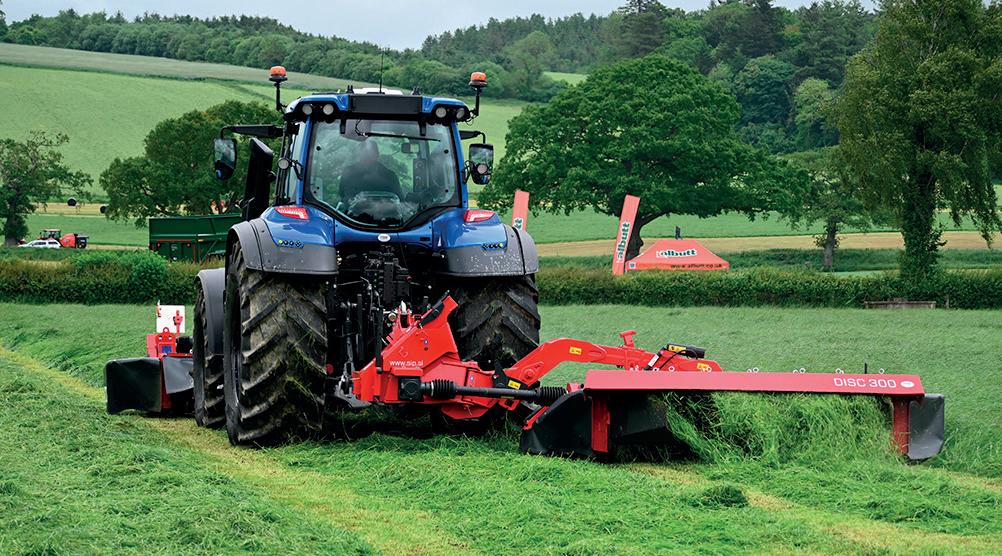
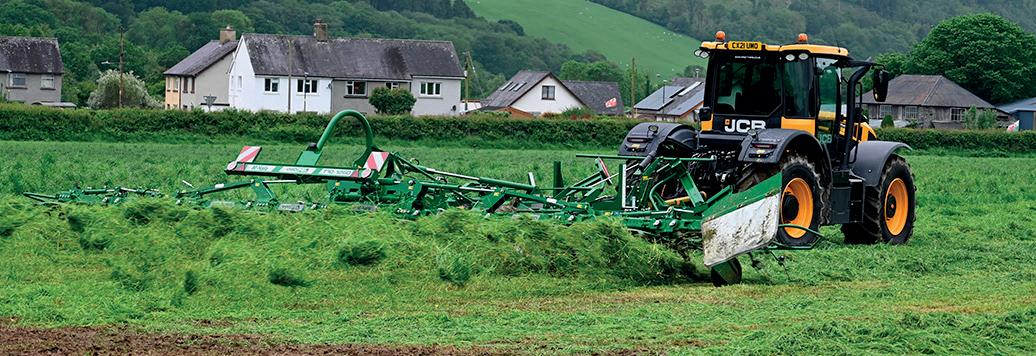
Kverneland 5387MT
JAdded to its butterfly mower range for 2024, the demonstrated 5387MT provides an 8.75-metre cutting width and was operated with a 3332FT front mower.
The 5387MT and the larger 5395MT have been added to the Kverneland range and sit below the existing wider models. Cutting widths of the machines are fixed, with the demonstrated unit running a pair of 3.2m, eight-disc beds. Suspension
for the unit is provided by the manufacturer’s pull-type multilink system, which provides a claimed 700mm of vertical movement and incorporates a break-back mechanism.
Control of the butterfly combination is non-Isobus and uses an in-cab controller to set up and adjust the machine. Both new models can be fitted with belt groupers, with prices for the 5387MT starting at £55,767.00.

McHale Propel T10 1260
JPresented as the largest tedder in the Irish manufacturer’s range, the Propel T10 uses 10 rotors to provide a 12.6-metre-wide working width.
McHale says the unit uses an identical chassis and driveline to the smaller T8, with a change to the folding of the outer two rotors, which roll 180-degrees into the two sections of the machine, before
being folded onto the trailing chassis.
McHale says it has seen consistent growth in demand for tedders, with customers requesting wider units for productivity increases and to maximise tighter weather windows. The T10 has a claimed an upfront power requirement of 110hp, with production machines available to order from the end of 2024.
JULY 2024 50 MACHINERY WELSH GRASSLAND
Krone KWT 1600
JDemonstrated for the first time in the UK, the KWT 1600 is the second-largest trailed tedder in the manufacturer’s range, with a working width of 15.3 metres. Operating with 14, 1.53m diameter rotors, Krone says the smaller diameter design with unequal tine length provides improved grass pick up and throw.
In operation, the ground following of the rotors is
independent of the running gear, with the working height adjusted manually.
Aligning with the market demand seen by other manufacturers, Krone has highlighted an increased interest in wider trailed tedders to allow for increased productivity, and the ability to work with a slower forward speed to improve crop turning without reducing output.
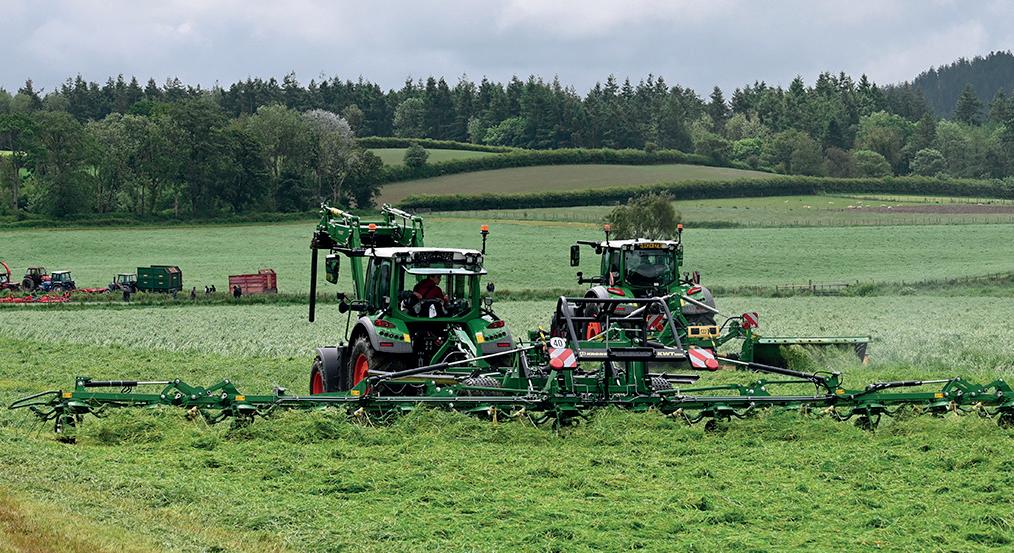

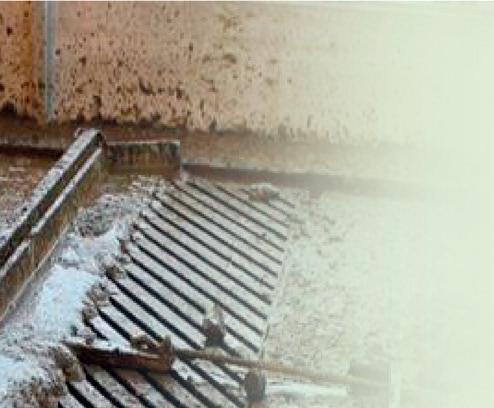




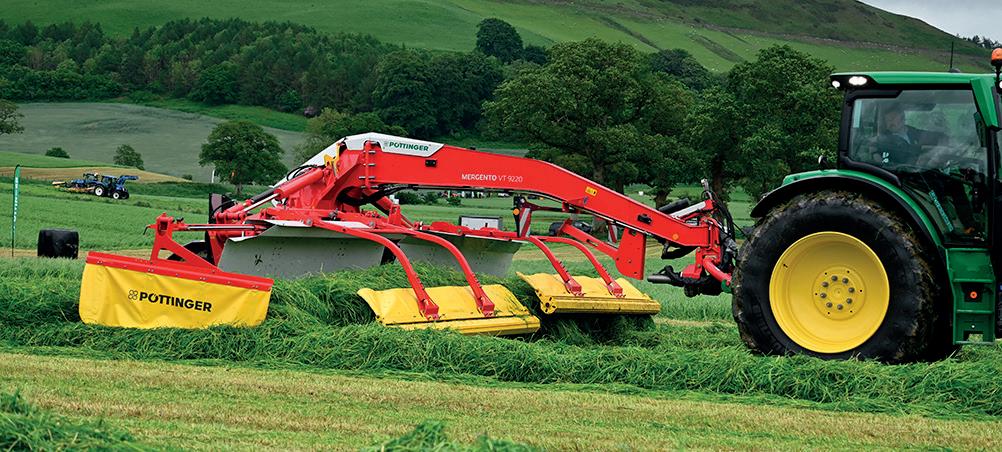
Pottinger Mergento VT 9220
JShown at a working event for the first time, the Mergento VT 9220 is the first merger to be offered by Pottinger, and added another option for buyers in the emerging belt merger market.
Providing a working width of up to 9.2 metres for a centrally grouped swath, and 8.7m for a side-delivered set-up, the machine uses a six-tine bar pickup, which Pottinger claims is positioned 120mm higher than the transfer belts to allow material to fall onto

the machine bed. Rollers under each bed provide ground following with a 475mm vertical movement possible and up to 30-degrees lateral float.
A headland control system is used to start and stop the belts, which includes an operational delay to allow the beds to clear before turning at the headland. Adjustments of the start and stop timings for specific crop conditions is performed through the machine controller.




JULY 2024 51 WELSH GRASSLAND MACHINERY
Scraper Key features of the Control System ✓ Future proof expandable up to 3 individual systems
winch) ✓ Individual me clock and switching for each winch system ✓ Selectable shunt program for robo c milking ✓ Inbuilt bedding cycle Benefits of the Rope System Ideal for sand laden slurry Lowest cost replacement parts Rope replacement cost £3 per metre Easy touch screen control 5 years extended warranty available Manufacturing and installing rope scrapers for over 20 years Feature rich control Time control Winch control Cow care SYSTEMS Innovators in Dairy Farming Wales/Midlands/S. England Fred - 07762800149 N. Ireland/ R.O.I John - 07732348225 Scotland/N. England 07591833853 Andrew - 07803124235 info@cowcaresystems.com
Rope
(6
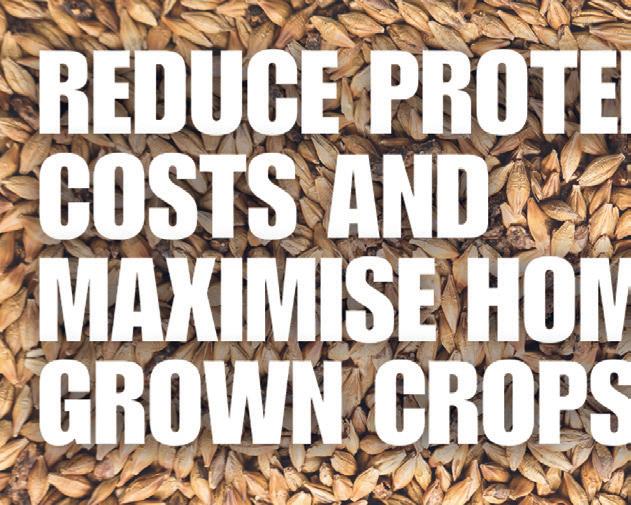


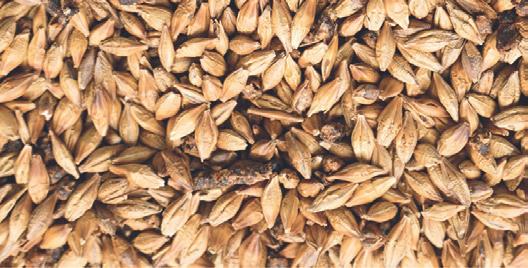

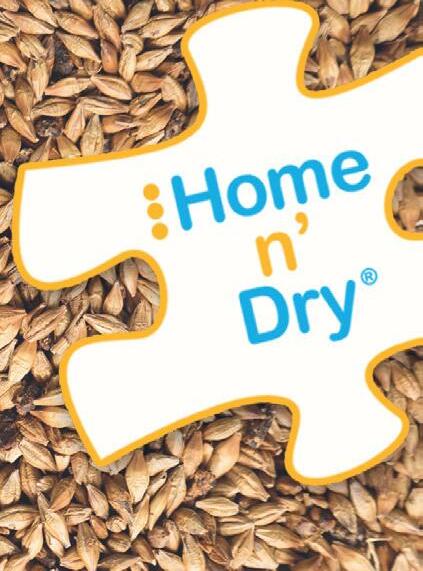

+44(0)1200 613118
Alkagrain® is produced by simply mixing the unique alkalising feed pellets (Home n’ Dry®) at a minimum application rate of 30kg/tonne, with ripe, fully mature cereal grain and sheeting. Typical Analysis (DM)
Rumen friendly, alkaline, protein
cereal grain
Can be produced at harvest or throughout the year
Alkalinity helps to buffer rumen pH
A cost effective starch and protein source
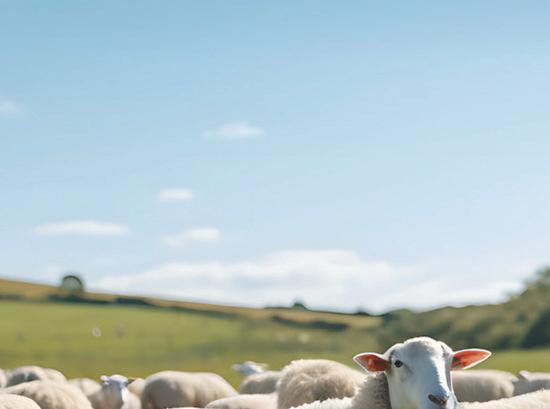




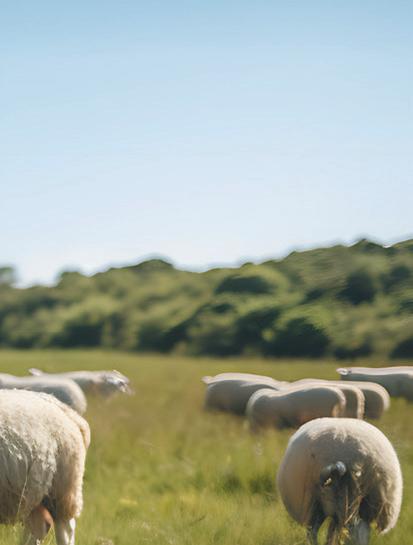



MILKprices
Positive markets start contributing
JWith the spring production peak, or what li le there was of it, now rmly in the rear-view mirror and with national milk supply seasonally starting to make its decline, the fears around supply outlined last month, are still very much in focus.
However, no longer is it just in the foreminds of milk producers and processors, but also market sentiment has started to show signs of sharing some of the concern. e result is that commodity prices across the board for cream, bu er, cheese and powders have all responded positively over the last six to eight weeks, which in turn is helping to underpin further producer milk price increases heading deeper into summer.
Rest assured, the market which will be just as disappointed as farmers with how the spring turned out but for di erent reasons, will be watching national production gures closely looking for any early signs of increasing milk production year on year.
Momentum
Further price increases by both Arla Foods, who increased by 0.43ppl to 39.23ppl for our liquid standard* for June and Muller increasing its Muller Direct price by 1ppl to 39ppl from July also added positive momentum, which in turn has led to the smaller liquid processors also increasing milk prices.
Cheesemakers not to be left behind
JJuly has also seen another flurry of milk price increases by the cheesemakers which, in the main, show no signs of leaving their milk price behind.
Saputo Dairy UK has increased its Davidstow milk price by 0.5ppl to take our manufacturing standard litre up to 40ppl, while the company also increased its Wensleydale price by 0.92ppl from June to 39.5ppl.
Parkham Farms also increased by 1ppl to take its Tesco price for our standard up to 40.75ppl, while Barber’s Cheesemakers continue to power on increasing by 1.03ppl to 41.28ppl. Keeping up the competitive spirit, First Milk has increased by 0.8ppl to 40.3ppl, while those members in the Haverfordwest Tesco cheese group received the same increase to 41.8ppl.
52
JULY 2024 Explore the new membership package and join today! Visit farmersguardian.com/membership or call 0330 333 0056 and quote H402 Become a member today! What’s included... Join Farmers Guardian with our new enhanced FG Digital + Print package which provides you with full access to our website, the print magazine plus exclusive future farming content. Receive the latest issue of Farmers Guardian a day before its official release with early access via our app Access exclusive Future Farming reports covering topics including Diversification, Climate Friendly Farming, and Grants Participate in live webinars and round tables with top industry experts, exploring the latest trends and innovations in farming. Join for £3.17 a week Anniversary offer 24/7 News at Farmers Guardian .com FG0001 Farmers Guardian qrt page 128x84.indd 1 13/06/2024 15:17 Starch 68% ME 13.5 Protein 17%
enhanced
Milk price analyst Stephen Bradley on the latest milk industry developments.
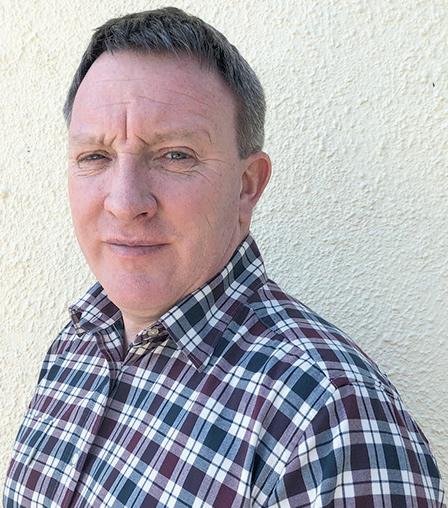
Freshways first to announce 40ppl outside the major retailers
JHaving moved its milk price by 2ppl from this June to 37ppl for our liquid standard, Freshways has increased its milk price by a further 3ppl from August to become the first liquid milk processor to announce 40ppl outside of the major retailers.
Reasons
The company cites reasons for the delay in increasing its milk price directly in line with others as firstly being due to contractual commitments with customers, flat milk sales through June/July, as well as the recent June increase already being implemented and finally, the continued competitive nature of
liquid milk through the flush period.
Building
Other milk buyers prior to the Freshways announcement are already building their price towards the 40ppl level via their increases for July.
Certainly after the Muller announcement, pricing freed up a little with Crediton Dairy, increasing by 0.75ppl to 39.5ppl, and Yew Tree Dairy increasing by 2ppl to 39ppl.
Pembrokeshire
Creamery also increased by 0.36ppl to 39.70ppl.
The First Milk BD
Dairy milk price increased by 1ppl to 39.75ppl, while Grahams has lifted by 1ppl to 37ppl.
Meadow increases by 1.5ppl
JHaving increased its price by 1.75ppl for June, Meadow has increased by a further 1.5ppl for
July, taking our liquid standard price up to 35.50ppl and 39.13ppl for manufacturing.
*Our Liquid standard litre is 4%b/f & 3.3% protein, for our Manufacturing 4.2%b/f & 3.4% protein and in both cases Bactoscans of 30,000/ml & SCCs of 200,000/ ml, with Thermodurics of 500/ml, 1mltrs/yr on EODC (max vehicle accessibility) based on level supply and therefore, before seasonality, (but includes the winter premiums paid in NI) as well as monthly profile adjustments, balancing charges, capital deductions or annual/part annual growth incentive schemes or supplements not directly linked to dairy market price movement.
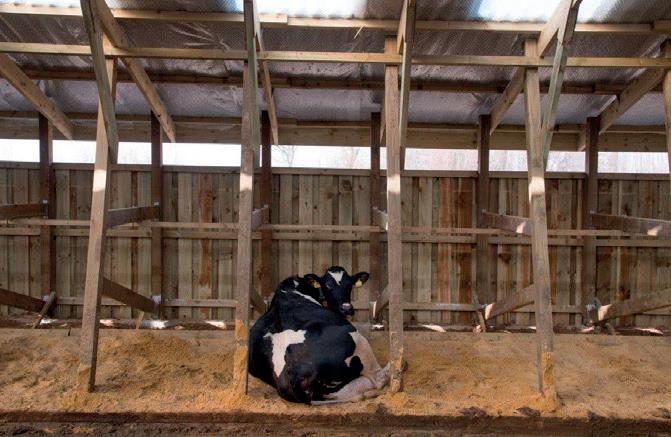
•
•
•
•
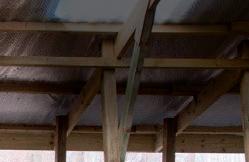


Telephone: 01772 785252 www.farmplus.co.uk


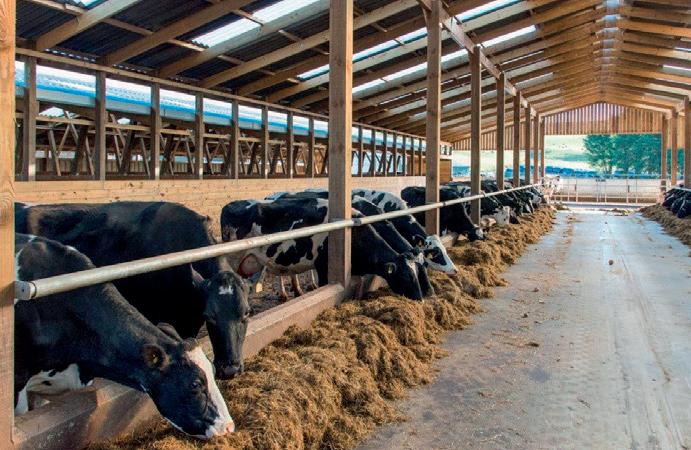
•
•
•
•
•

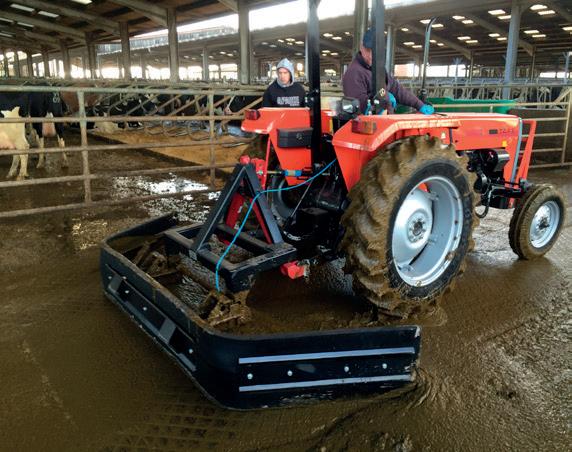


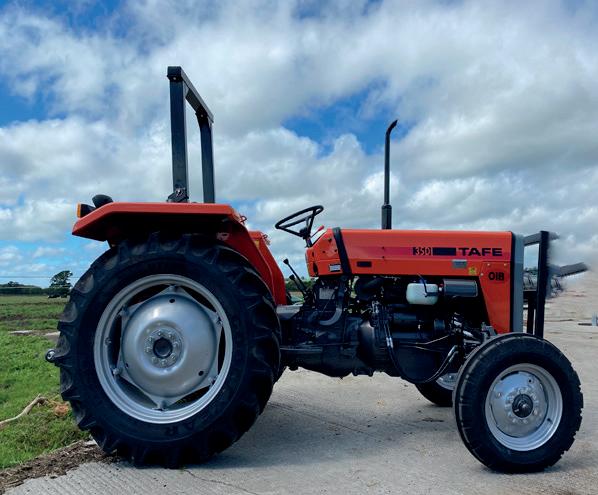
�
�
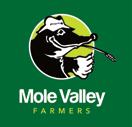

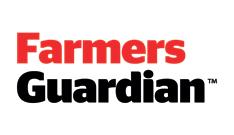

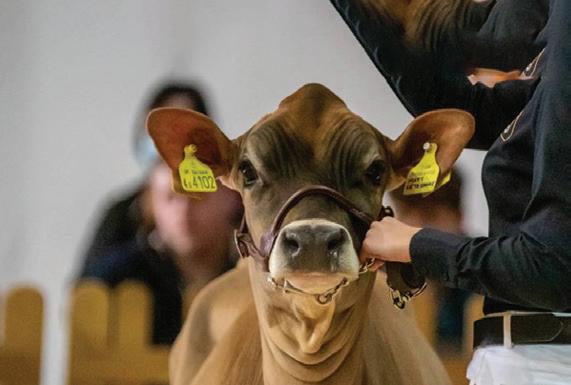
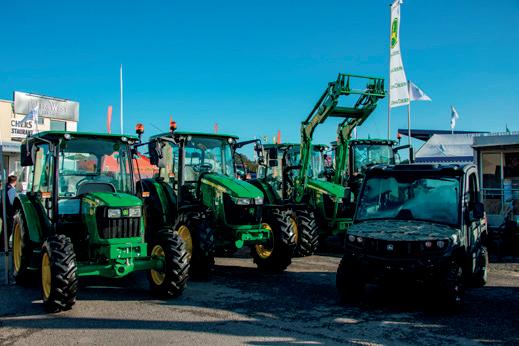
53
JULY 2024 2 October 2024 Supporting British Farmers For Over 40 Years HEADLINE SPONSORS MEDIA PARTNERS VISIT WWW.BATHANDWEST.COM FOR MORE INFORMATION & TO BOOK YOUR TICKETS Call us on 01258 817372 email: info@tractorsuk.co.uk TRACTORS UK SOLE UK IMPORTER OF TAFE TRACTORS FROM THE BEST PEDIGREE BASIC, SIMPLE & RELIABLE TRIED & TESTED FOR GENERATIONS 08R04B
Drum
oil immersed brakes
�
or
Roll bar
cab
2wd or 4wd
or
�
2 Years’ warranty
Comprehensive parts backup www.tractorsuk.co.uk ✆ 01258 817372 ✉ info@tractorsuk.co.uk BASIC, SIMPLE & RELIABLE www.tractorsuk.co.uk
• 2 Years’ warranty Comprehensive parts backup •
immersed brakes
WD
4WD
�
•
Oil
2
or
• Cow kennels
Perfect Shelter
Designed for Animal Health
Excellent Ventilation
Shelter from Wind & Rain
Shade from the Sun
Plenty of Fresh Air
Ample Space
Minimum Draught
options available
Many
RECRUITING REPS
website for details
See
MILK PRICES
‘B’ Price Indicators StoneXMilkprices.com UKMFE (gross)
*StoneXMilkprices.com UKMFE (net)
**Delivered spot milk (net to the producer)
Notes to table
54
Prices for both Liquid & Manufacturing tables paid for a producer sending 1mltrs/yr on EODC (max vehicle size accessibility) with Bactoscans of 30,000/ml and SCC’s of 200,000/ml with Thermodurics of 500/ml. Excludes capital retentions or AHDB levies, profile adjustments from level supply, seasonality, balancing and A&B price schemes (includes the winter premiums paid in NI). Excludes annual / part annual growth incentive schemes or supplements not directly linked to dairy market price movement. Liquid price for milk contains 4% b/f and 3.3% protein. Manufacturing price for milk containing 4.2%/b/f and 3.4% prot. All prices for non-aligned prices are before monthly retail supplements. (i) Feb’24 prices before seasonality or B pricing (ii) Mar’24 prices before seasonality or B pricing (iii) Table ranked on simple rolling 12mth average of monthly prices Apr’23 to Mar’24. (i) v (ii) The difference Mar’24 compared with Feb’24. UK Arla Farmers hold for Feb’24 includes 1.361ppkg (1.402ppl) Sustainability Incentive and Guaranteed minimum supplementary payment of 1.239ppkg (1.276ppl) based on our liquid std litre. UK Arla Farmers hold for Feb’24 includes 1.42ppkg (1.463ppl) Sustainability Incentive and Guaranteed minimum supplementary payment of 1.292ppkg (1.331ppl) based on our manufacturing std litre. UK Arla Farmers 0.85ppl increase for Mar’24 includes 1.361ppkg (1.402ppl) Sustainability Incentive and Guaranteed minimum supplementary payment of 1.239ppkg (1.276ppl) based on our liquid std litre. UK Arla Farmers 0.88ppl increase for Mar’24 includes 1.42ppkg (1.463ppl) Sustainability Incentive and Guaranteed minimum supplementary payment of 1.292ppkg (1.331ppl) based on our manufacturing std litre. First Milk price includes 0.5ppl Member Premium accrued as a 13th payment paid Apr’24. First Milk Haverfordwest Tesco Cheese Group includes 2ppl retailer premium averaged as 1.5ppl based on seasonal profile. Fresh Milk Company price before Morrisons monthly cheese supplement (payment made in Mar’24 of 0.024ppl for supplies Nov’23 to Feb’24). MMG Direct price includes 1ppl Premium paid quarterly in arrears to Direct/Organic farms meeting specific Müller Direct criteria (Quarterly payments started from Apr’22). Crediton Dairy price includes FarmMetrics Scheme Bonus of 0.5ppl paid monthly. South Caernarfon price includes flat 0.4ppl annual member bonus paid monthly. ‡ Price includes 12mth average rolling profile fixed at 0.57ppl. * UK Milk Futures Equivalent (UKMFE) net to producer includes 5% processor margin and allowing 2.58ppl ex-farm haulage for both Feb’24 and Mar’24. ** Ave delivered spot milk net to producer allows 3ppl covering haulage + milk testing and margin. (iv) Latest confirmed milk price at the time of going to press. UK Arla Farmers 0.03ppl decrease for Apr’24 includes 1.366ppkg (1.407ppl) Sustainability Incentive and Guaranteed minimum supplementary payment of 1.243ppkg (1.280ppl) based on our liquid std litre. UK Arla Farmers 0.04ppl decrease for Apr’24 includes 1.426ppkg (1.469ppl) Sustainability Incentive and Guaranteed minimum supplementary payment of 1.296ppkg (1.335ppl) based on our manufacturing std litre. UK Arla Farmers 0.4ppl increase for May’24 includes 1.366ppkg (1.407ppl) Sustainability Incentive and Guaranteed minimum supplementary payment of 1.243ppkg (1.280ppl) based on our liquid std litre. UK Arla Farmers 0.43ppl increase for May’24 includes 1.426ppkg (1.469ppl) Sustainability Incentive and Guaranteed minimum supplementary payment of 1.296ppkg (1.335ppl) based on our manufacturing std litre. UK Arla Farmers 0.43ppl increase for Jun’24 includes 1.366ppkg (1.407ppl) Sustainability Incentive and Guaranteed minimum supplementary payment of 1.243ppkg (1.280ppl) based on our liquid std litre. UK Arla Farmers 0.44ppl increase for Jun’24 includes 1.426ppkg (1.469ppl) Sustainability Incentive and Guaranteed minimum supplementary payment of 1.296ppkg (1.335ppl) based on our manufacturing std litre. Müller SDDG suppliers received 0.01ppl increase for May’24 which was also backdated to Apr’24 with the group average sustainability bonus increasing from 0.53ppl to 0.54ppl. Fresh Milk Company price before Morrisons monthly cheese supplement (latest payment made in Mar’24 of 0.024ppl for supplies Nov’23 to Feb’24). MMG Direct Premium for Direct/Organic farms meeting specific Müller Direct criteria confirmed as 1ppl for 2024 and paid quarterly, Apr’24, Jul’24, Oct’24 & Jan’25. South Caernarfon price from Apr’24 includes flat 0.25ppl annual member bonus. Dale Farm NI deduction for Apr’24 due to base level constituents increasing to 3.95% b/f and 3.24% prot along with constituent payments +/- the base increasing to 3.1p per % b/f and 4.8p per % prot. All prices are before any additional monthly retail supplements. Milkprices.com cannot take any responsibility for losses arising. Copyright: Milkprices.com Feb’24 Mar’24 12mth Diff Latest 4.0/3.3 4.0/3.3 Ave Mar’24 Confirmed Before Before Apr’23 v Milk Seas’lty Seas’lty Mar’24 Feb’24 Price LIQUID PRICES (4% b/f & 3.3% prot) (ii) (ii) (iii) (i) v (ii) (iv) Müller Milk Group – M&S E&W 44.80 44.80 47.12 N/C 44.10 Müller Milk Group – M&S Scotland & NI 44.54 44.54 46.97 N/C 43.84 Müller Milk Group – Waitrose 44.05 44.05 45.53 N/C 44.05 Müller Milk Group – Tesco 42.42 42.42 42.38 N/C 41.82 Arla Foods – Tesco 42.17 42.17 42.13 N/C 41.57 Müller Milk Group – Sainsbury’s 40.61 40.64 41.29 0.03 40.77 Müller Milk Group – The Co-op Dairy Group 39.84 39.84 40.50 N/C 39.96 Blackmore Vale Dairy 37.00 37.00 38.17 N/C 39.75 Müller Milk Group – Müller Direct 36.50 36.50 37.83 N/C 39.00 Crediton Dairy 37.00 37.00 37.71 N/C 39.50 Müller Milk Group – Müller Direct (Scotland) 36.29 36.29 37.62 N/C 38.79 Yew Tree Dairy 36.00 36.00 37.00 N/C 39.00 Dale Farm GB (Kendal) 36.46 37.08 37.00 0.62 38.49 UK Arla Farmers – Morrisons (Grazing) 39.20 40.05 37.00 0.85 40.85 UK Arla Farmers – Tesco 39.00 39.85 36.80 0.85 40.65 UK Arla Farmers – Morrisons 38.97 39.82 36.77 0.85 40.62 Freshways 35.00 35.00 36.58 N/C 40.00 Paynes Farms Dairies 35.00 35.50 36.29 0.50 36.50 Grahams Dairies 35.00 35.00 35.92 N/C 37.00 UK Arla Farmers 37.58 38.43 35.38 0.85 39.23 Meadow Foods Lakes 34.25 35.25 34.52 1.00 38.50 Meadow Foods 34.25 35.25 34.52 1.00 38.50 Dale Farm NI 36.73 36.73 34.28 N/C 36.57 Simple Average 38.38 38.66 38.67 0.28 Simple Average (excl. retail contracts) 35.93 36.23 36.37 0.31 MANUFACTURING PRICES (4.2% b/f & 3.4% prot) First Milk – Haverfordwest Tesco Cheese Group 38.50 39.50 39.02 1.00 41.80 Parkham Farms Tesco 38.25 38.25 38.01 N/C 40.75 Barber’s Cheesemakers 38.20 38.20 37.92 N/C 41.28 Wyke Farms 38.29 38.29 37.86 N/C 40.35 The Fresh Milk Company – Level Profile ‡ 37.77 38.29 37.82 0.52 40.10 Saputo Dairy UK – Davidstow 36.50 38.00 37.62 1.50 40.00 First Milk 37.00 38.00 37.52 1.00 40.30 Wensleydale Dairy Products 37.37 37.87 37.33 0.50 39.50 The Fresh Milk Company (Lactalis) 37.20 37.72 37.25 0.52 39.53 UK Arla Farmers 39.18 40.06 36.85 0.88 40.89 Belton Farm 36.30 36.30 36.84 N/C 39.30 South Caernarfon 35.25 35.25 36.40 N/C 39.50 Dale Farm NI 37.72 37.72 35.27 N/C 37.67 Leprino Foods 36.00 37.00 34.89 1.00 39.50 Arla Foods – Direct Manufacturing 36.13 36.13 34.67 N/C 37.90 Simple Average 37.31 37.77 37.02 0.46 Simple Average (excl. retail contracts) 37.15 37.60 36.79 0.46
38.22 38.23 35.49 0.01
33.70 33.71 31.20 0.01
35.69 32.74 -2.95 Latest milk prices from JULY 2024
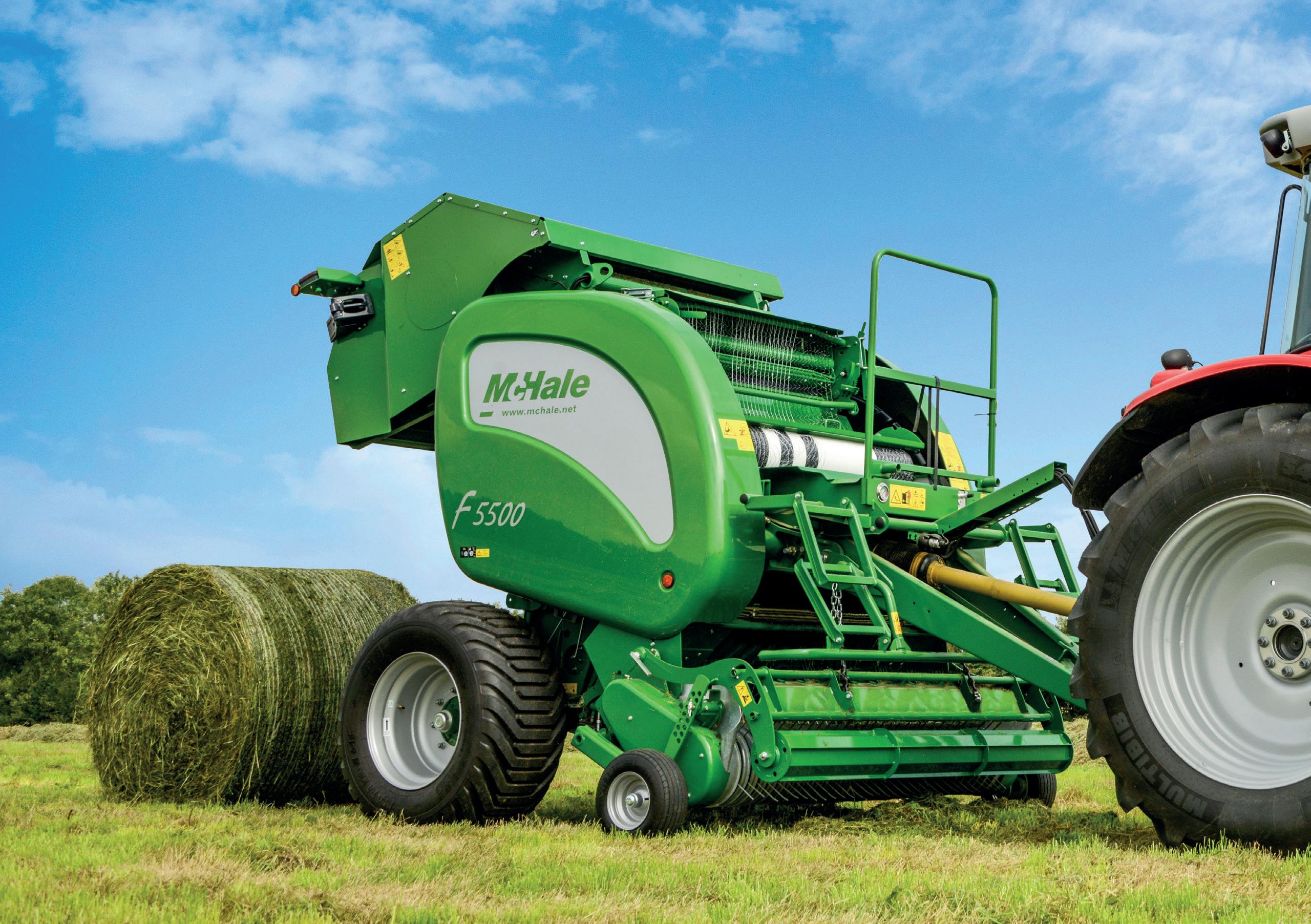

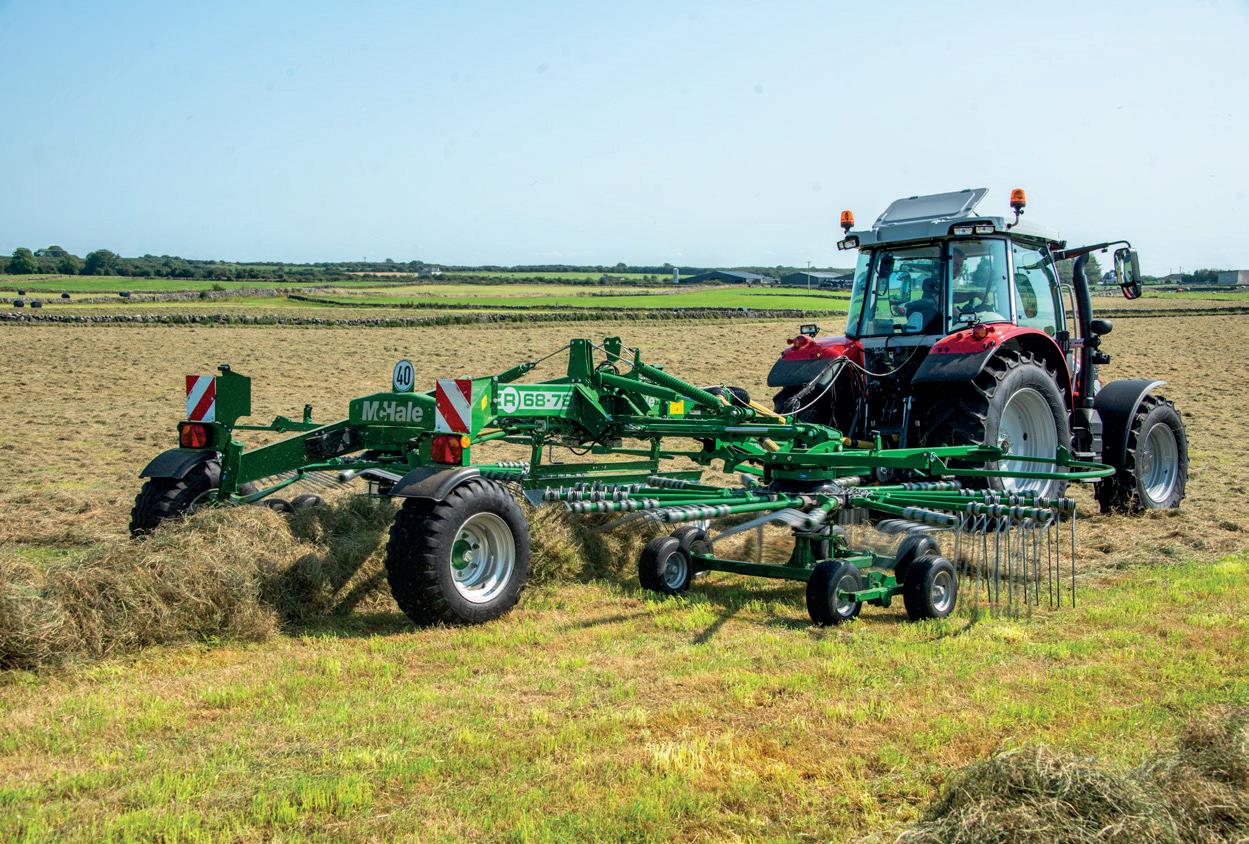




HIGH SPEED BALE WRAPPER CENTRE DELIVERY RAKE Wrap Bales from 1.1m - 1.45m (3’ 7” to 4’ 9”) GRASSLINE RANGE www.mchale.net Superior Forage Solutions 1 2 CALL TODAY 1 Scotland & Northern England Gary McConnell 07796 148 769 2 Midlands / Wales & Southern England Kieran Hughes 07850 373 145 RBITAL FIXED CHAMBER BALER SPECIAL IN SEASON DEALS AVAILABLE CALL TODAY FOR DETAILS CALL TODAY Finance* & Special Offers Available Working Width 6.8m - 7.8m (22’ 4” - 25’ 7”) * Offer Available in Mainland U.K. Only. Terms and Conditions Apply. For Full Details Contact McHale.
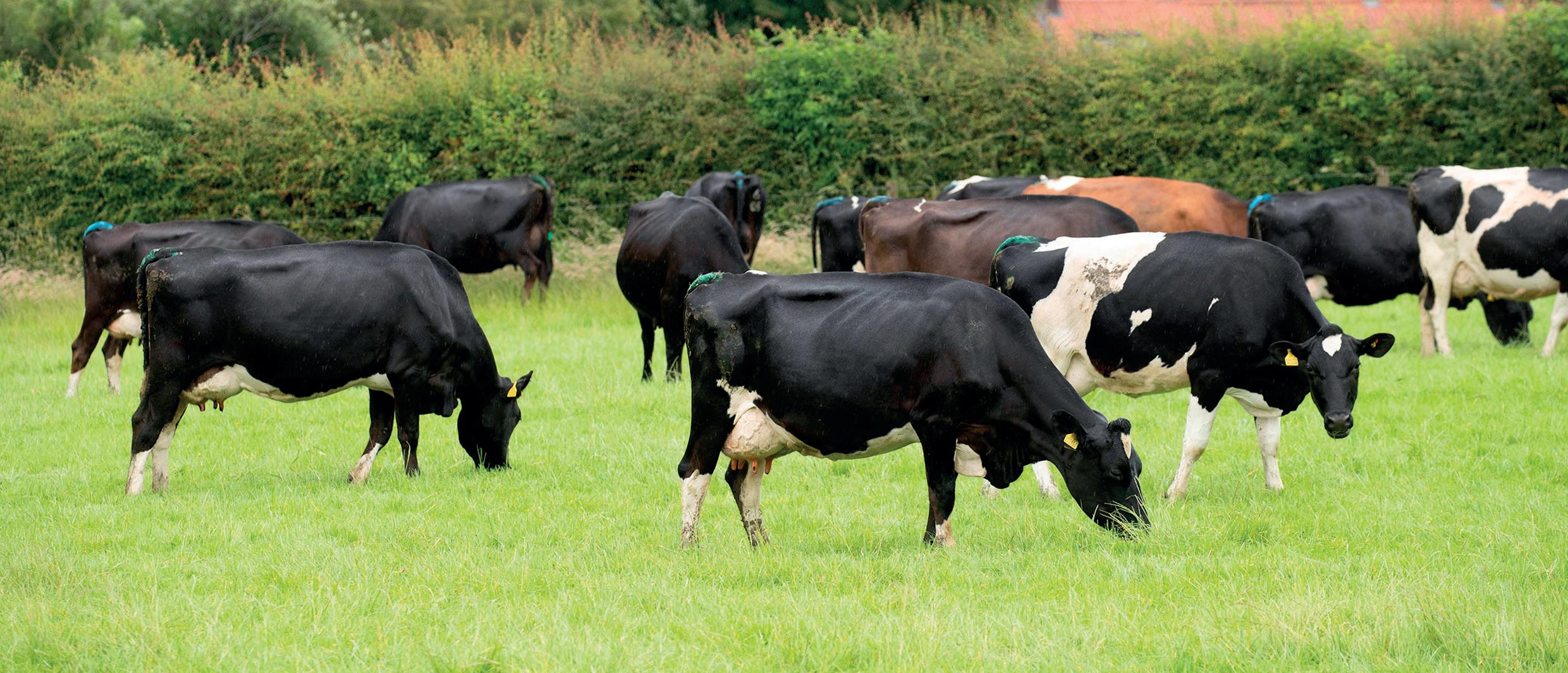
Over the last 100 days, UK milk volumes have been down 1% compared to last year.

Milk volumes from major exporters still down, but slowing
According to IFCN, the milk volumes of the major exporting nations for May will be down 0.18% compared to last year. Production for the European Union’s top 10 dairy nations is estimated to be down slightly less than 0.5%. is is much lower than it was, with September through to December all being 1% to 2% down. February was 3% lower.
In the UK, volumes continue to track lower than last year, but again not by as much. A few weeks ago, weekly volumes were
down 2%, but the latest data puts them down 1.3% on last year. Over the last 100 days, volumes are down 1% compared to last year, with GB slightly more than that.
Peak milk
Peak milk on a daily basis was at 45.7 million litres on May 12, compared to 45.8m in 2023.
On a weekly basis, peak week was the week of May 12-18, with a total of 314m litres. Last year and in 2022, the peak week volume was 317m litres, and in 2021 it was 321m litres.
Defra milk price drops again
JThe latest official Defra milk price for April is 37.21ppl at 4.26% fat and 3.40% protein, which is down nearly 1p on March.
It is the third consecutive fall since the February peak of 38.75p.
The price equates to about 36p on a standard 4% fat, 3.3% protein litre. NMR reported average fats for the month at 4.40% and proteins at 3.36%, which points to a milk price of about 37.50p.
The latest gross AMPE figure for May is 37p, which is up 0.9p on April.
After a processor margin and processing costs, the farmgate equivalent drops to 33p.
The gross MCVE value is 36.40p, before costs and a margin, which is up 0.8p and giving a farmgate equivalent of about 32.40p.
At current market rates, though, both the AMPE and MCVE figure will increase to about 35p to 36p for June.
Markets rally as sentiment changes from bearish to bullish
JDutch butter increased in the first week of June by
€100 (£84.38) to €6,780 (£5,720.64) – its highest level since October 2022.
Spot prices are not quite as high because there is some buying resistance
and purchases are being postponed. There is real concern about killing demand at such high prices.
Butter and cream
The price values UK butter at £5,700, with UK cream at
about £2.35/kg. These are also the highest prices since October 2022.
Cheese is following butter, as stocks are tight on the UK market thanks to lower milk volumes. Also, buyers cannot get supplies from Ireland as
their milk volumes are even lower than the UK’s.
Prices for mild Cheddar have rocketed from £3,400 to as high as £3,750 in a matter of weeks, with mozzarella also posting gains from £3,100 to £3,450.

JULY 2024 56
: Tim
PICTURE
Scrivener
GDT increases for fifth consecutive time but not for SMP
JSMP is the commodity many UK farmers need to increase proportionally more than others, as it is the limiting factor in price increases for ingredientsbased contracts. The GDT is not helping.
Despite the auction increasing for the fifth consecutive time in June, and New Zealand SMP increasing 6.5%, Arla’s did not increase at all and actually fell by US$5 (£3.92).
Overall, the index was up 1.7% compared to 3.3%
previously, with the average price at US$3,825 (£2,999).
The GDT commodities convert into an approximate UK milk price equivalent of 37.6p.
Meanwhile, Fonterra has issued its opening price for the new milk year – from July – of NZ$8.00/kg (£3.86/kg) solids, which is only slightly up from the current season forecast of NZ$7.80 (£3.77). It is equivalent to just over 30p, and has been described (politely) as ‘very conservative’ by New Zealand observers.
Futures point to 38p
JThe futures have increased significantly in recent weeks to an average over the next six months of €6,735 (£5,680.53). SMP averages €2,600 (£2,192.93) again. In milk price terms, butter and SMP convert to between 35.5p and 38p for November contracts. However, most processors pay a

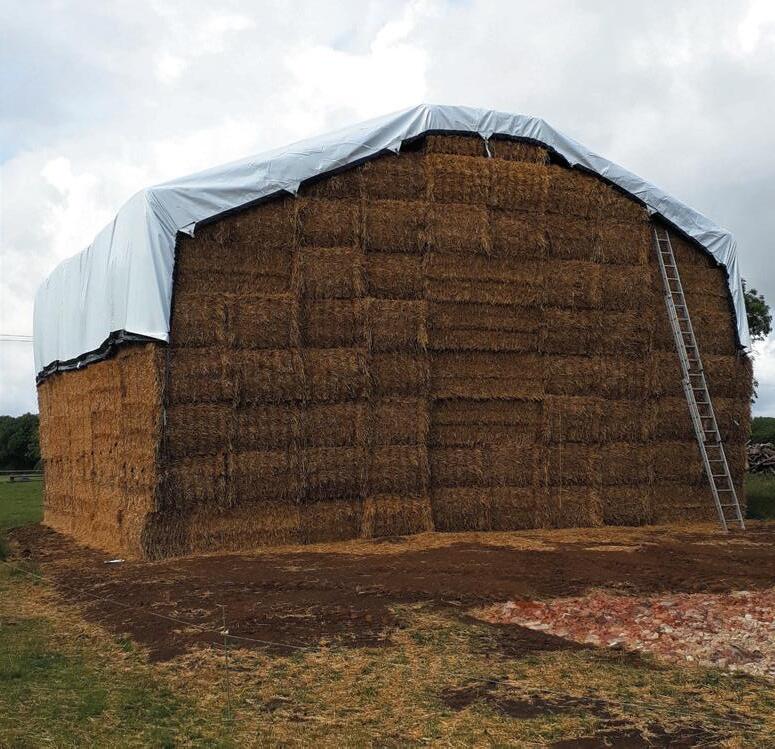
price Slurry bags
- Withstand winds in excess of 100 mph
- Super cinche quick release for easy tightening and removal
- Average losses of 15%, at 36 bale, £150 per ton, that is £2,700 for every 240 bales. Make losses a thing of the past



*with three-month lag
premium of 3-4p over the futures, which points to milk prices being over the 40p threshold for most farmers.
Freshways has become the first
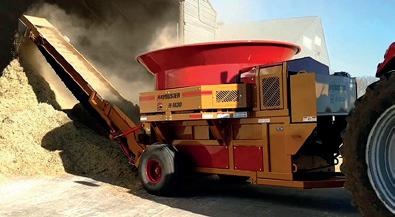
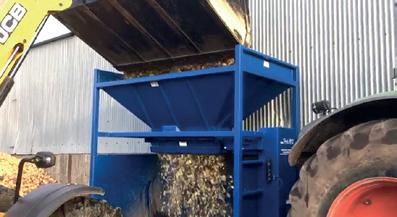
processor to hit the threshold on a standard litre basis, with a 3p rise for August, although several cheesemakers are over that on a manufacturing litre basis.

Tub Grinders
- Exclusive UK Distributor of Haybuster & Rotogrind Grinders.
- Range of models from 5t - 25t / hour output.
- New, used & refurbished machines available.
- Ideal for straw, hay, green waste, roots, biogas feeds etc. Root Choppers & Cleaners
- Loader, 3 point linkage, free standing PTO and electric drive available
- UK Distributor of VDW range of choppers, cleaners & feed dispensing equipment
- Output from 10t/hour to over 120t/hour available
Diet Feeders

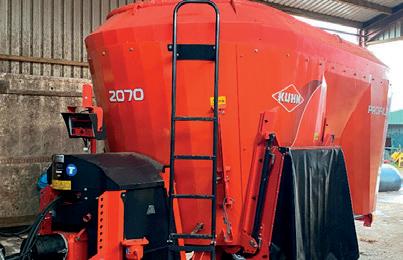
- Largest stock of mixers in the UKover 50 machines in current stock
- Refurbished, used & nearly new units available
- New Mini Mixer available
- Diet feeder parts available- Blades, Conveyor belts, gearboxes, weigh cells.
- All feeders undergo 30 point service
- Finance available subject to terms
- Nationwide delivery available
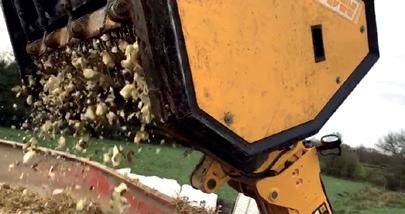

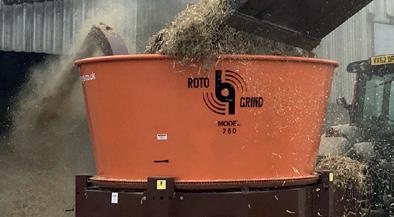
Current Used Stock:
- Trioliet 18, 20, 24
- Strautmann 10, 14 Duo
- BvL 12, 17, 20, 24
- Kongskilde 12, 16, 22 x 3
- Kuhn 12, 14, 27
- Keenan 320, 340
- Siloking 10, 14 x 4, 16, 18, 22
- Shelbourne 13 x 2
- Abbey 30
- Hi Spec 12
- Redrock 16, 20
- Keenan 320, 340
- VdW Mini mixer 2022
- Rotogrind 760 2018
- Haybuster H1000
Used Diet Feeders always wanted
- Teagle C12 tub grinder with grain processor, 2021
JULY 2024 57 MILK ANALYSIS
visit www.enegis.co.uk for more photos or call 01789 205132 or 07721 442979
Feed Processing Specialists Please
Scan
info@pfc-eu.com Sales: 0752
0710 Office: 01805 603 363
me!!
327
PRICES START AT : £650 Unbeaten on quality and Price Tarpaulins and bale covers Low
GDT predicted price v UK non-aligned price ppl* June 22 July Aug Sept Oct Nov Dec Jul Feb Mar Apr May Jun July Aug Sept Oct Nov Dec July Feb Mar Apr May June 60 40 20 0
GDT Non-aligned
NEWProducts
This month’s section features a new automated manure cleaning robot from BouMatic, a tank monitoring system suitable for slurry tanks and a mastitis diagnostic tool.
New ATMS
JA new agricultural tank monitoring system (ATMS) which uses radar sensors and requires no mains electrical connections has been launched by J.F. Hudson. The system, which is suitable for slurry stores, water lagoons, digestate tanks or liquid fertiliser stores, continuously checks liquid levels and sends an alarm in the event of changes.
The ATMS can be fitted in remote locations, with information transmitted to any nominated user by either email, text or phone call. The system is designed to send an alarm should the liquid reach an unexpected level during filling, or from a leak.
The battery-powered version costs £2,897.73 while the solar powered option sells at £3,753.49.
rMore information from 07803 765 440, or james@jfhudson.co.uk

Got a new product?
JNew products are featured in each issue of Dairy Farmer. Please send details and pictures to Katie Fallon at katie.fallon@ agriconnect.com, or call 07815 003 227.
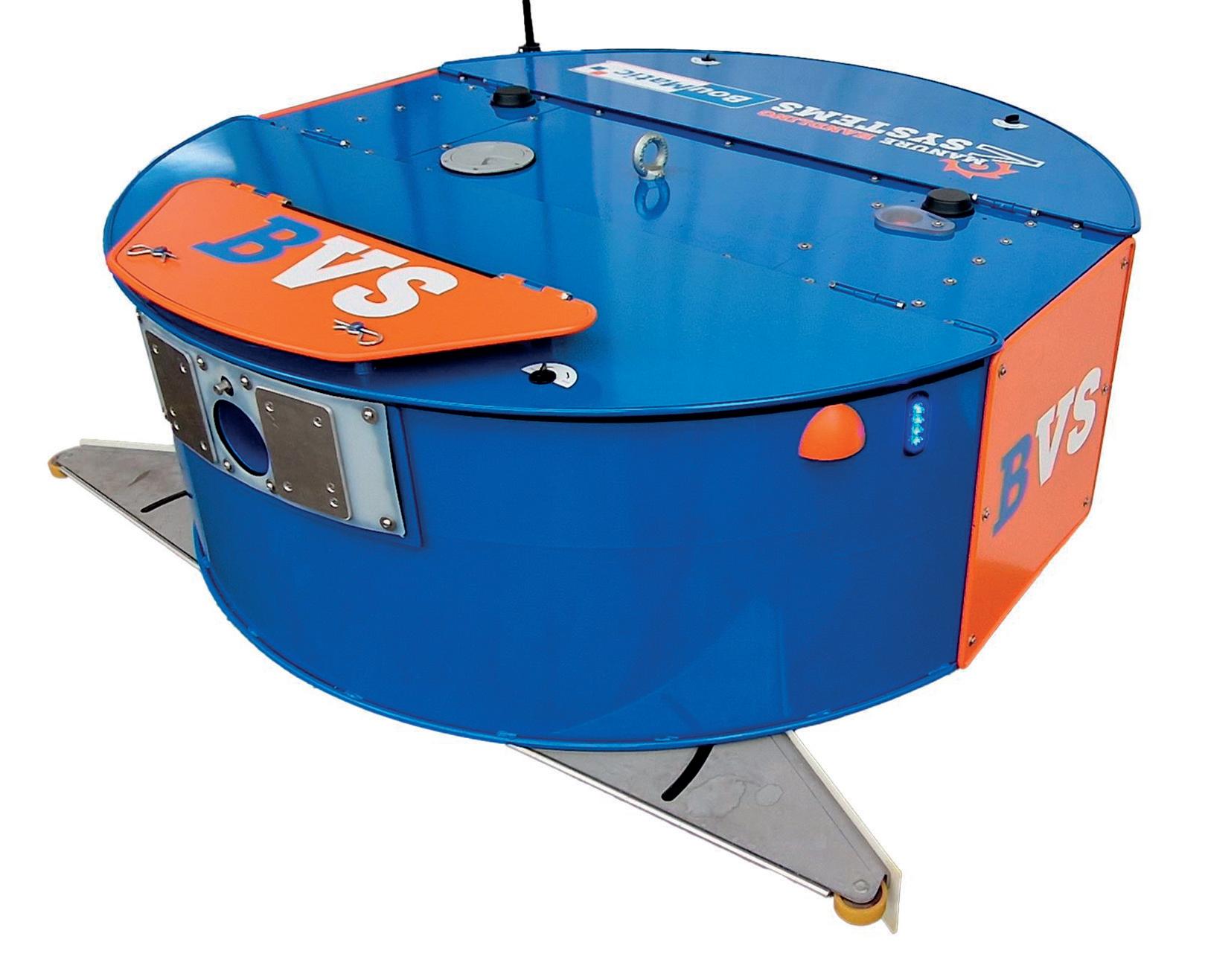
Automated manure cleaning robot
The BouMatic Vacuum Scraper (BVS) Robot is a fully automatic robot which excels in vacuum cleaning manure. The rounded design facilitates 360-degree rotation, reducing the need for complex manoeuvres at building ends, and is equipped with a high-capacity lithium battery, delivering up to 15 hours of daily operation. It contains an integrated irrigation system which provides moisture to
the manure and breaks down hard deposits, as well as a flushing system which simplifies reservoir cleaning, resulting in substantial time savings for maintenance.
A comprehensive Wi-Fi coverage throughout the building is required for installation and the BVS relies on a laser guidance system for autonomous navigation.
Remote control
A remote control is included for manual mode movements, and
alarms are relayed via email and, or SMS for convenient remote resolution. A dedicated 24/7 customer service is available for remote interventions.
The BVS is an add on to the BouMatic slurry management range and is available on the market immediately through the UK and Ireland BouMatic dealer network.
rMore information from ssene@boumatic.com, or mroosen@boumatic.com
58
JULY 2024
NEW PRODUCTS

New mastitis diagnostic tool
JVetoquinol UK Farm Animal, a veterinary pharmaceutical company which provides a platform for udder health care solutions, has launched Mastatest, a modern diagnostic tool for mastitis, to provide greater insight.
Mastatest is a simple diagnostic tool that helps identify the pathogen causing mastitis, along with its relative sensitivity to specific antimicrobials, cloxacillin, benzylpenicillin and cefalexin.
It will confirm if mastitiscausing bacteria are present and guide treatment options
for the greatest chance of a successful outcome.
The Mastatest report indicates the relative susceptibility of the mastitis causative organism so it can be treated correctly with the most appropriate antimicrobial.
When used in conjunction with vet-generated data, vets can better assess the incidence of mastitis on-farm and where management should be reviewed and possibly revised.
rMore information from 077961 737 819
Yeast reduces carbon footprint
JFollowing rigorous testing, Actisaf Sc 47 live yeast, a Phileo by Lesaffre product, has been proven to result in a 5% reduction in CO2e per kilo milk, subject to supplementation.
The probiotic achieves this reduction primarily by altering the rumen environment to support the growth of lactic acid-utilising bacteria and microbial species that aid fibre digestibility.

and improves feed conversion efficiency of cows by 4.5%, resulting in an extra 2.8kg energy corrected milk per cow per day, with no increase in feed intakes or negative impacts on health parameters.
Actisafalso brings a return on investment of 8:1, at an approximate cost as low as £15 a cow per year.



This stabilises rumen pH
rMore information from kendra@reverberate-pr.co.uk


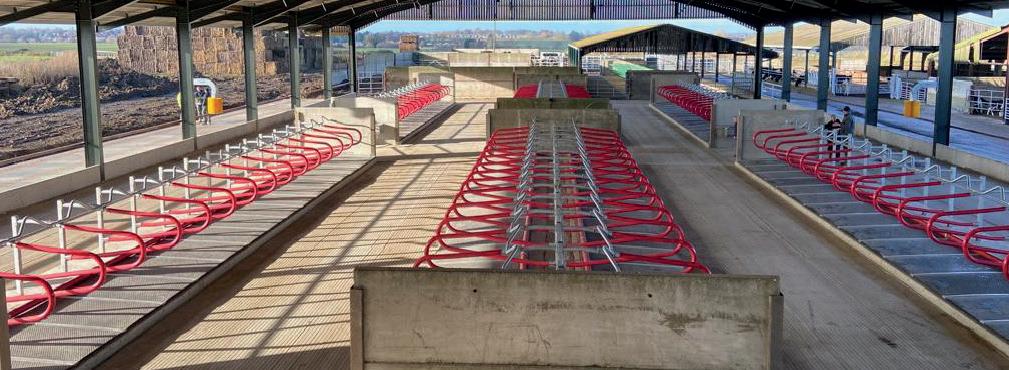




Comprehensive



59
JULY 2024 YOUR DEPENDABLE PARTNER FOR SLURRY STORAGE SOLUTIONS enquiries@enviroseal.co.uk t: 01695 228626 www.enviroseal.co.uk SLURRY LAGOON FLOATING COVERS Keeps rainwater out of slurry Reduces odour from lagoons
comply with EA
SSAFO legislation SLURRY LAGOON LINERS
Covers
and
25 year warranty
Enviroseal
a
Quality Kit Supported by REAL Customer Service Market-Leading Hygiene & Longevity No Layer Reinvestment Will Never Go Hard HYBRID FLEX FETF 2024 Approved Scan Here All the Comfort Without Losing the Guide Full 10 Year Warranty Post & Rail or Individual Post Mount & Can Retro-Fit to Existing Rails
Materials meet EA and SEPA requirements Installed and tested by certified technicians
provide
complete range of products for slurry storage

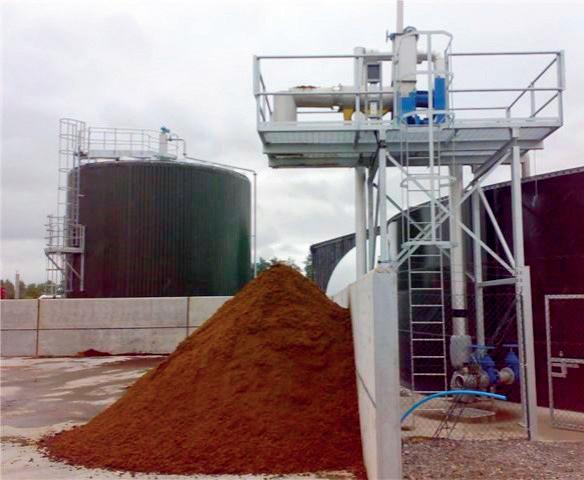
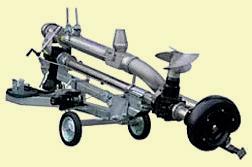
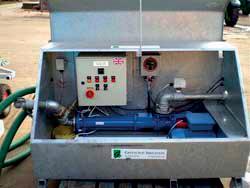



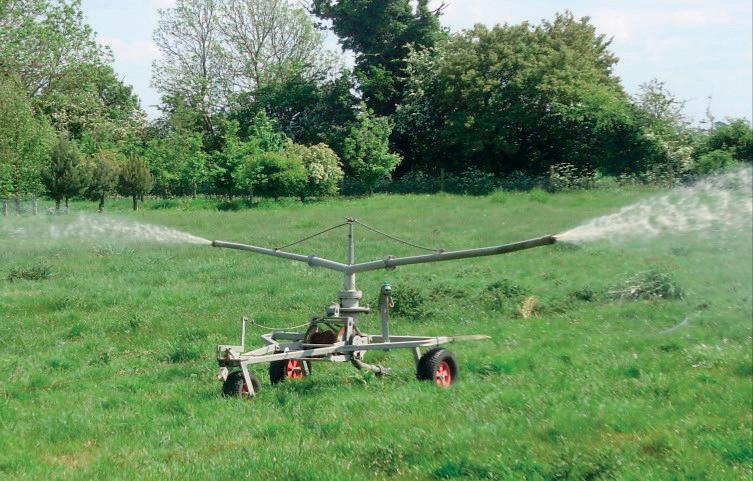



and display diet feeders for immediate
V Mix 33 3S Steering axle, 2 front doors, 600 mm elevator, rear door, app based weighing, stainless liner, mudguards, work & rear lights
V Mix 22 2S Tandem Steering, non DHF, 435/50R19.5 tyres, front RHS door, 1000 mm elevator, LHS door with chute, RGB, App based weighing, HD lighting, 18 mm augers
V Mix 20 2S, non HDF, RGB, 435/50R19.5 tyres, 18 mm augers, HD lights, 2 front doors, 600 mm elevator, chute, mudguards, work light
Services Over 40 years of V-MIX development
V Mix 15 2S, front R H S door, hydraulic down to up chute, 435/50R19.5 tyres, App based weighing, 18 mm augers, RGB
V Mix 12 1S, RHS door, chute, 400/60R15.5 tyres, app based weighing, manual parking jack
V Mix 10H 1 S, 400/60x15.5, RHS door & chute, weighing, front window, 18 mm auger
For more information, please contact either: North: Paul McUrich - 07810 040100 paulmcurich@gmail.com South: John Molton - 07947 719985 john.molton@bvl-group.de www.bvl-farmtechnology.com


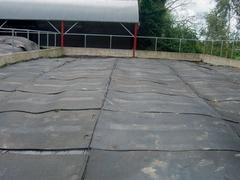

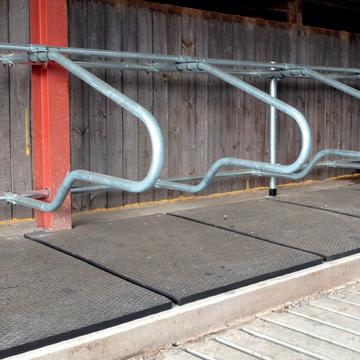
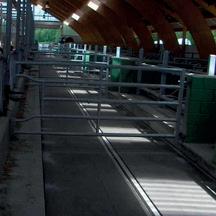
Equipment & Accessories Equipment & Accessories SEPCOM The unique separator Slurry pumps & lagoon mixers 01328 701992 | enquiries@greencrop.co.uk | www.greencrop.co.uk Multicam dirty water irrigator Slurry pump Pump in a box CLASSIFIED TELEPHONE: 01772 799400 JULY 2024 60 FARM HEALTH SOLUTIONS Ask about Herd Health Analysis T 01756 749444 W www.crossgateshealth.co.uk PROBLEMS WITH HIGH SCC /MASTITIS? - WANT TO REDUCE USE OF ANTIBIOTICS? - COST EFFECTIVE PRODUCTS WITH EASY WATER TROUGH ADMINISTRATION - DISCOUNTS - WE CAN HELP WITH SHEEP PROBLEMS TOO - CALL FOR A FREE SAMPLE KIT APPLE CIDER VINEGAR (ACV) Livestock Services Nationwide (01948) 662910/663143 george@greenfieldsrise.f9.co.uk SPRAY FOAM INSULATION To Crop & Livestock Stores, Poultry Sheds, Cattle & Pig Buildings, Workshops & Barns. Frost & Condensation Protection. Temperature Control Energy Saving Tel: 01405 812682 www.webstersinsulation.com info@webstersinsulation.com 1.8m x 1.2m / 6ft x 4ft Each 30kg Per Mat Easy Grip Handles Animal Proof Weather Resistant 100% Rubber Construction R U B B E R S Y S T E M S F O R A G R I C U L T U R E DAIRY MAT ARK www arkmat co uk C a l l o r E m a i l F o r P r i c i n g A n d F u r t h e r D e t a i l s 01392 209 394 info@ark-rubberandresin.co.uk PARLOUR MATTING HEAVY DUTY SILAGE PIT MATS SUPERSOFT CUBICLE MATS ALLEY MATS 5 YEAR GUARANTEE Delaval mobile milking bale for hire/sale. Delaval Blue Diamond 32/32 fast exit MM25s. Save energy, Ice Builders : Bulk Milk Tanks. Heavy duty replacement troughs for most parlours. Delaval VMS Robots : Milk meters, keypads, feeders etc. Everything for the Dairy Farmer Call Vic/Tracey Brown Tel: 01260 226261 www.milkingequipment.com Milking Equipment
Building
Ex-demo
delivery
Dairy Farmer 9x1 Spring 22.qxp_Layout











and display diet feeders for immediate
V Mix 33 3S Steering axle, 2 front doors, 600 mm elevator, rear door, app based weighing, stainless liner, mudguards, work & rear lights
V Mix 22 2S Tandem Steering, non DHF, 435/50R19.5 tyres, front RHS door, 1000 mm elevator, LHS door with chute, RGB, App based weighing, HD lighting, 18 mm augers
V Mix 20 2S, non HDF, RGB, 435/50R19.5 tyres, 18 mm augers, HD lights, 2 front doors, 600 mm elevator, chute, mudguards, work light
Services Over 40 years of V-MIX development
V Mix 15 2S, front R H S door, hydraulic down to up chute, 435/50R19.5 tyres, App based weighing, 18 mm augers, RGB
V Mix 12 1S, RHS door, chute, 400/60R15.5 tyres, app based weighing, manual parking jack
V Mix 10H 1 S, 400/60x15.5, RHS door & chute, weighing, front window, 18 mm auger
For more information, please contact either: North: Paul McUrich - 07810 040100 paulmcurich@gmail.com South: John Molton - 07947 719985 john.molton@bvl-group.de www.bvl-farmtechnology.com






Equipment & Accessories Equipment & Accessories SEPCOM The unique separator Slurry pumps & lagoon mixers 01328 701992 | enquiries@greencrop.co.uk | www.greencrop.co.uk Multicam dirty water irrigator Slurry pump Pump in a box CLASSIFIED TELEPHONE: 01772 799400 JULY 2024 60 FARM HEALTH SOLUTIONS Ask about Herd Health Analysis T 01756 749444 W www.crossgateshealth.co.uk PROBLEMS WITH HIGH SCC /MASTITIS? - WANT TO REDUCE USE OF ANTIBIOTICS? - COST EFFECTIVE PRODUCTS WITH EASY WATER TROUGH ADMINISTRATION - DISCOUNTS - WE CAN HELP WITH SHEEP PROBLEMS TOO - CALL FOR A FREE SAMPLE KIT APPLE CIDER VINEGAR (ACV) Livestock Services Nationwide (01948) 662910/663143 george@greenfieldsrise.f9.co.uk SPRAY FOAM INSULATION To Crop & Livestock Stores, Poultry Sheds, Cattle & Pig Buildings, Workshops & Barns. Frost & Condensation Protection. Temperature Control Energy Saving Tel: 01405 812682 www.webstersinsulation.com info@webstersinsulation.com 1.8m x 1.2m / 6ft x 4ft Each 30kg Per Mat Easy Grip Handles Animal Proof Weather Resistant 100% Rubber Construction R U B B E R S Y S T E M S F O R A G R I C U L T U R E DAIRY MAT ARK www arkmat co uk C a l l o r E m a i l F o r P r i c i n g A n d F u r t h e r D e t a i l s 01392 209 394 info@ark-rubberandresin.co.uk PARLOUR MATTING HEAVY DUTY SILAGE PIT MATS SUPERSOFT CUBICLE MATS ALLEY MATS 5 YEAR GUARANTEE Delaval mobile milking bale for hire/sale. Delaval Blue Diamond 32/32 fast exit MM25s. Save energy, Ice Builders : Bulk Milk Tanks. Heavy duty replacement troughs for most parlours. Delaval VMS Robots : Milk meters, keypads, feeders etc. Everything for the Dairy Farmer Call Vic/Tracey Brown Tel: 01260 226261 www.milkingequipment.com Milking Equipment
Building
Ex-demo
delivery
Dairy Farmer 9x1 Spring 22.qxp_Layout
BUFFER-GRAIN
(LIQUID GRAIN TREATMENTS)
For WHOLE AND ROLLED CEREALS
(Moisture Level Between 16% - 22%)
*Applied in one operation* (No Additional Mixing)
*Alkaline Treatment* (Ph 7.5-8.5)
*Protein Incresed*(by 30% - 40%)
*Excellent Stability*

Tel: 01387 750459 www.britmilk.co.uk


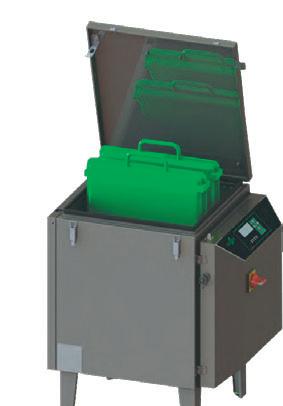
FOR HEALTHY CALVES
* Freeze only Quality Colostrum *
* Thaw 4litre pack within 20mins *
* Feed immediately after birth *
For more details contact
BRITMILK tel : 01387 750459 info@britmilk.co.uk www.britmilk.co.uk

COMPLETE 3,000 LITRES / HR PROCESSING AND BOTTLING DAIRY FOR SALE NEW 2022/23 ALSO
Butter Makers 50/100/1000 litres
Cheese and Yogurt Making Complete Systems
Glass Bottle Washers Single, twin and rotary in stock
6 Head Glass Pint Bottle Filler with Ford automatic capper 1,000 litre and 500 litre Automatic Electric Flow Pasteurisers
Single Phase and Three Phase Batch Pasteurisers 35 to 120 litres
Single Phase and Three Phase Ice Cream Freezers 20 to 100 litres hour
Dawson 9 head +12 and 26 head poly/glass filling lines
Seital & Westfalia Cream Separators 1,000 to 12,000 litres per hour Charles Wait 07788 233608
Forthcoming Events



6 & 7 NOVEMBER NEC, BIRMINGHAM
SHOW TIMES: 10AM - 5PM
THE DIVERSIFICATION & INNOVATION EVENT FOR FARMERS & LANDOWNERS



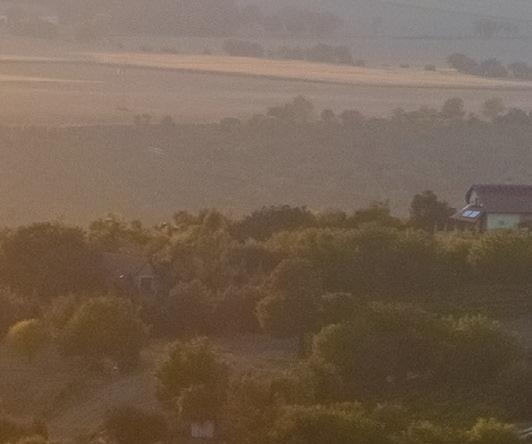








WEDDING VENUE | BEER BREWING FORESTRY | KART RACING | PETTING ZOOS RENEWABLE ENERGY | FARM FINE DINING SEGWAY RACING GLAMPSITES UNUSUAL LIVESTOCK | FESTIVALS For stand enquiries please contact chris.knowles@agriconnect.com or call 01772 799500




61 JULY 2024
Livestock
RUNNING
ALONGSIDE
GOODEvans
‘He
ranked the breed aside the black death –no good to man at all’
This month, Roger Evans explores the benefits of no-cereal feeding, discusses the eating quality of Holstein beef and looks at what constitutes a day off for farmers.
There’s this lad I know that I’ve got a lot of time for, mostly because he always has time for me. He keeps sheep and beef cattle, but he has a full-time job as well, so he tends his livestock in the evenings and at the weekend.
We have known him since he was born. He was a naughty little boy and one day he achieved infamy because he bit one of our corgi’s ears and made it bleed.
He has to buy his cattle and as they have been a dear trade I ask him how he’s getting on. He tells me he has bought some cattle in Devon, they were the year’s rear from a suckler herd, I don’t know if they were South Devon’s or those Red Devon cattle.
He had bought them via video. That might be the modern way of doing things, but where’s the fun in that?
When I was his age, we would have gone to Devon by car, we would have farmed one side of the motorway on the way down and the other side on the way back. When we got closer to home, we would probably have stopped for steak and chips and a few pints. Made a proper agricultural adventure of it.
I would have liked to see these cattle, but I wouldn’t go poking about his buildings unless he was there.
I saw him recently, so I ask him how he’s getting on with these cattle from Devon. “Okay, there are only three left,” he says. He goes on to tell me that they have all fattened on silage and he hasn’t had to buy any rolled barley.
This sets me thinking, when I first came around here, the majority of farms were beef,
sheep and corn. The beef was invariably a herd of Hereford cows, bred pure to a Hereford bull. The Hereford bulls of the day were tiny compared with those of today. It was something to do with how many carcases they could hang in a ship from South America. It was a very real problem in those days because the heifers used to get fat at 4-5cwt and never come to much money. It wasn’t anything but size that brought the Charolais and Limousin to our shores.
I can remember a farmer who ran a British Friesian bull with his Hereford cows. His neighbours were quite scornful but in fact, he was ahead of his time.
But there might be a bigger issue here, if our native breeds will feed on grass and silage, might they not make a comeback? Could feeding no cereals be the answer to all sorts of things? Perhaps there will be a reduction in methane emissions? Perhaps farming and global warming will sit more comfortably together? The advantages of no-cereal feeding certainly needs exploring.
Keeping the lawns ‘tidy’
I’ve always taken great pride in cutting the lawns. My wife has often said that I cut them ‘tidy’, praise indeed.
I’m not good at collecting the cuttings though and avoid this by keeping well on top. I thought I was well on top this year, I managed to cut them twice in February and then all that rain came. Then the lawn mower wouldn’t start. I managed to cut them eventually, but now the lawns are covered with dead grass and are not tidy at all. Years ago I had a mower that would put the grass into two bins that were carried on the back.
62 JULY 2024
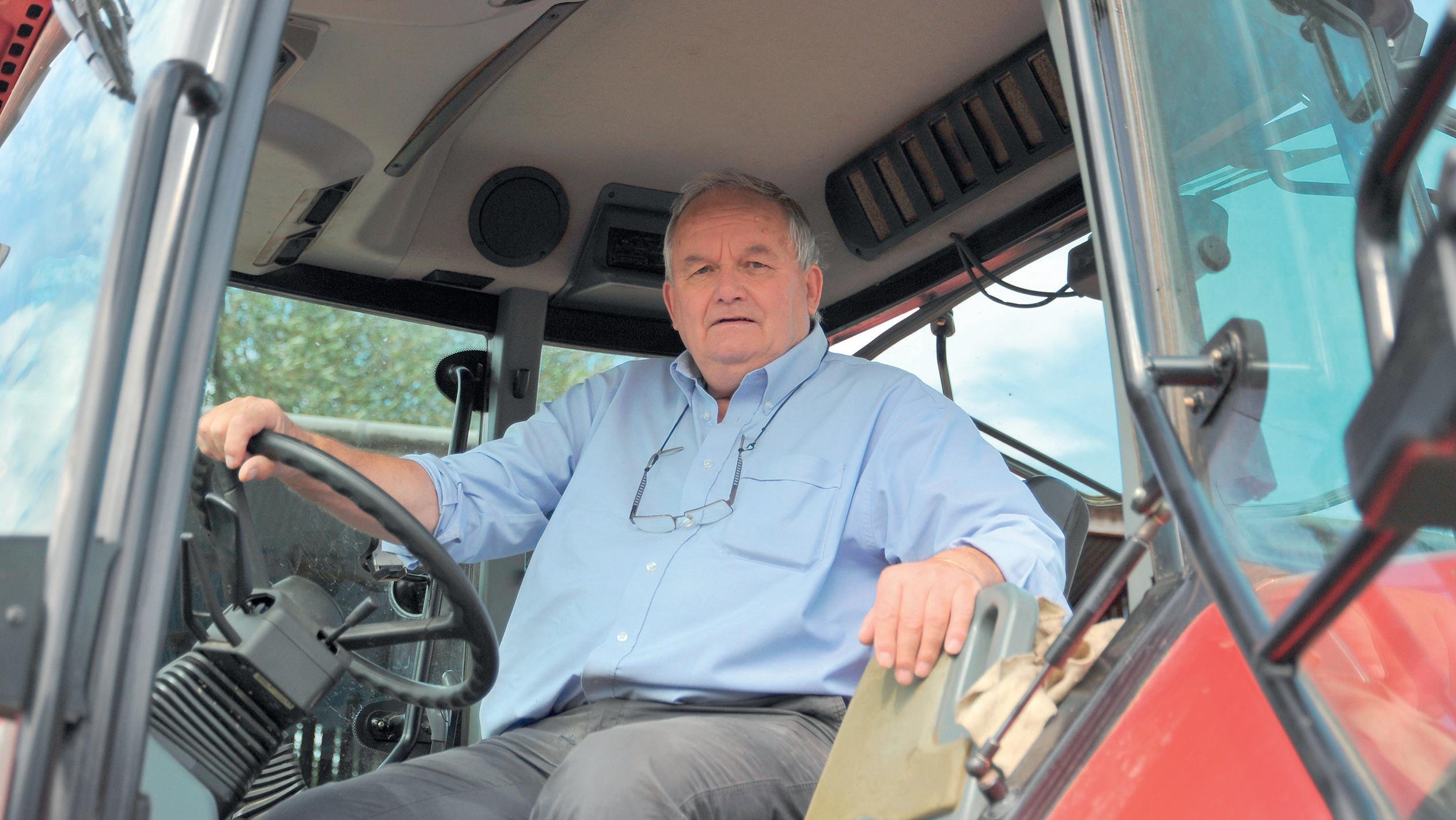
“ A beef farmer of the old school, he thought it the worst thing that had happened to the beef industry
At about the same time we had a pair of Holstein twins, freemartins.
e heifer wasn’t very valuable, I think she was worth about £3, so I thought I would rear her and put her in the freezer. So we reared this heifer and she ate all of the household scraps, silage and all the lawn cu ings.
When she was in the freezer we had some friends for Sunday lunch and we got a big piece of beef out. e male of our guests, also a farmer, ate his beef with relish. “ is beef is good, what breed is it?” he asked. I said: “Charolais cross Hereford,” and he replied: “ ought so, it’s good.”
I don’t know why I said that particular cross, I was a dairy farmer, where would I get a Charolais cross Hereford? But I hadn’t nished teasing him yet, so I asked if he wanted some more, and when he had cleared his plate I thought I would tell him that the beef he had just eaten was pure Holstien.
He was a beef farmer of the old school and he thought that the Holstein was just about


the worst thing that had ever happened to the beef industry. He ranked the breed alongside cholera and the black death, as no good to man at all. He shook his head in disbelief. Trouble was, I don’t think he believed me.
What is a ‘day off’?
Ever since he was a li le boy, my son has been a Manchester City supporter. In the good times and the bad he has never wavered.
Out of the blue and completely unexpectedly, he gets o ered a ticket and a bus ride to the recent cup nal. e only trouble is that he has to milk 200 cows before he goes. e bus goes at seven o’clock and he has to milk the same 200 cows on Sunday morning. at is o en the lot of dairy farmers on a ‘day o ’.
We seem to live in a society where people want more and more for doing less and less. O and I can’t think of any other sector of society that shows such commitment as dairy farmers.

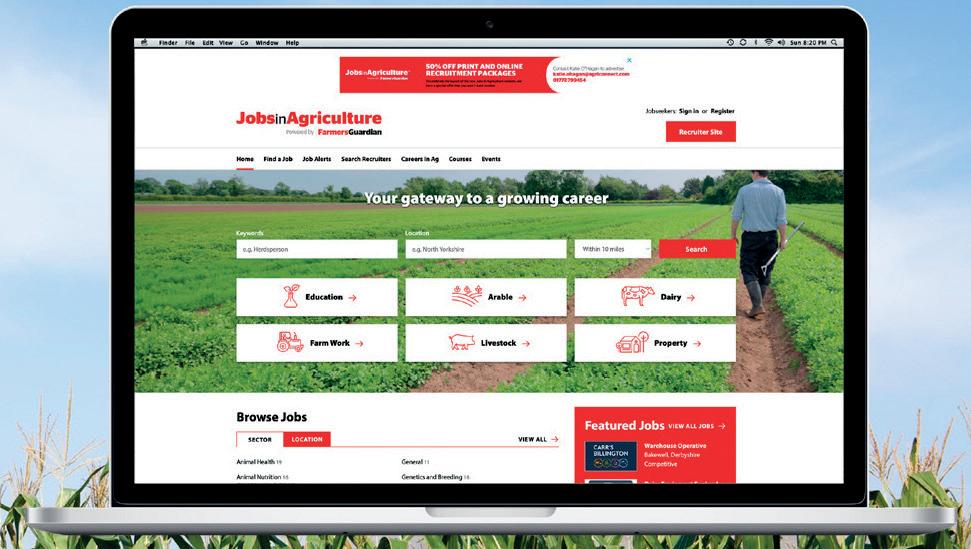
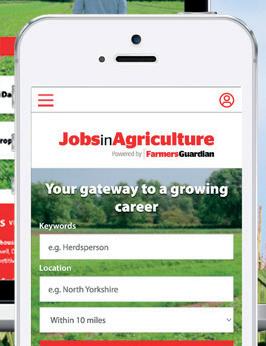

Find your next career move Get the latest jobs in your inbox with our free email alert service and never miss a great job! Scan the QR code or visit: JobsInAgriculture.com 63 JULY 2024
Post-Brexit farm payment schemes continue to evolve as direct supports in England dwindle and new systems are proposed in Scotland and Wales. Cedric Porter reports.
Untangling the new farm support system
It is now more than three years since the UK le the European Union (EU), and with it the Common Agricultural Policy (CAP). English farmers have seen the biggest change to support. In 2024, farmers who received payments of £30,000 or less under CAP will see that support cut in half.
ere is a 55% reduction for payments of between £30,000 and £50,000, a 65% drop for payments of £50,000 to £60,000, and a 70% reduction for payments above £150,000.
erefore, a farm that used to receive payments of £40,000 will see a reduction of £20,500 to £19,500. A farmer who used to receive £100,000 will now get a payment of £41,500.
Defra is yet to calculate reductions in 2025, 2026 and 2027, but a er then direct payments will have disappeared.
Michael Haverty, of farm business consultants Andersons, says: “ e decline in the Basic Payment Scheme [BPS] can clearly be seen now and is impacting on farm incomes. We calculate that a dairy producer who was ge ing the equivalent of 1.8ppl in BPS in 2021/22 will only see 1ppl in 2024/25.
“By 2027/28 there will be no support by right, so all income will need to come from operations or from new schemes. If a producer opted for the Sustainable Farming Incentive, it could add an extra 1.5ppl in income.”
During Brexit, the Conservative Government commi ed to continuing to devote the £3.5 billion a year the UK contributed to CAP to rural and farming support, in order to promote production and increase environmental protection. ere have been complaints that



too li le of the money clawed back from direct payments has been spent on new schemes, which have also been criticised for not encouraging food production.
SFI scheme
e main plank of the English farm support system is the Sustainable Farming Incentive (SFI). It has three main aims: recognise the importance of food production, protect and enhance the natural environment, and support farm productivity and resilience.
Defra has recently modi ed the scheme in response to criticism.
Announcing the change, faming minister Mark Spencer said: “I recognise that farmers have had to deal with di cult circumstances this year, which is why we have delivered on our commitment to provide further detail on the expanded SFI o er ahead of applications opening in July.
rPollen and nectar ower mix
rWinter bird food on arable and horticultural land
rGrassy eld corners and blocks
rFlower-rich grass margins, blocks, or in- eld strips
r In- eld grass strips
rUnharvested cereal headlands
rBumblebird mixes
Enhanced actions and payments under the Countryside Stewardship scheme are also due this summer, although that announcement might be in uenced by the General Election and formation of a new Government.
ere are now 102 SFI actions, with 20 new options to support more sustainable food production, plus payments for precision farming, agroforestry, an expanded o er for upland farmers and more short-term actions applicable to tenants.

The decline in the Basic Payment Scheme is impacting on farm incomes, says Michael Haverty of Andersons.
PICTURE : Getty
“ e new expanded SFI o er gives farmers more choice, makes things easier, and pays out more, so they can get on with the important job of producing high-quality food in a sustainable way.”
As well as increasing payments by 10%, Defra has now limited the amount of land that can be entered into 10 key SFI actions. ere was criticism that unlimited use of the schemes would be a disincentive to produce food.
From July 22, only a quarter of land can be entered into one or a combination of the following actions:
rTaking improved grassland eld corners or blocks out of management
rWinter bird food growing on improved grassland

Most SFI actions do not need approval, but farmers will need to register those actions. ere are a limited number of actions that will need approval by either Natural England or Historic England.
Financial gap
Jonathan Armitage, head of farming at Stru and Parker, says: “In general, it is unrealistic to expect entry into one of the schemes to ll the nancial gap le by the phasing out of BPS.
“Under the old EU regime, farmers were paid BPS in addition to any pro t they made from environmental schemes and from farming. e new environmental schemes require farmers to stop or to change agricultural production on some land and to carry out positive environmental management
JULY 2024 64 BUSINESS CLINIC
Scotland
JThe reforms to farm policy in Scotland have been a lot less radical, with payments largely mirroring those under the Common Agricultural Policy since Brexit.
The situation is mainly unchanged for 2024, although there will be more funding for slurry storage, hedgerow and pond management, and organic producers.
The plan is for the old system to rollover into a base support system from 2025. Greening and cross compliance requirements will be retained, but an additional Whole Farm Plan element is being proposed
activities to receive payments. is means the ‘pro ts’ from the environmental payments are o en small compared with BPS.
that will require soil testing, animal health and welfare, and carbon and biodiversity audits in return for payment.
Four-tiered system
From 2026, a four-tiered support system is proposed. At least 70% of payments will be base payments introduced in 2025, and the remainder will be based on measures to improve soil, habitat, and environmental management, with elective payments such as supply chain support and complimentary support including training and management advice.
“However, this does not mean that farmers should not engage with these schemes. In many cases, incomes and environmental outcomes will be improved through a wellthought-out environmental scheme.”
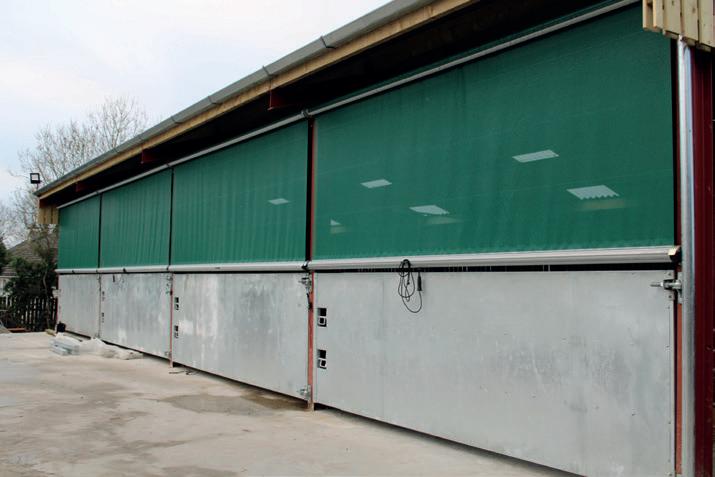
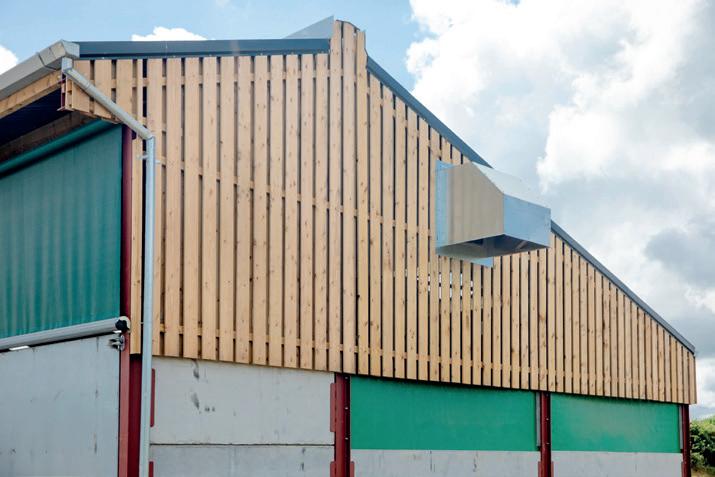
Wales
J Original plans for the Welsh Sustainable Farming Scheme (SFS) were heavily criticised and led to farmer protests. They included requirements to put 10% of land into seminatural habitats and 10% into woodland.
The Welsh Government concluded a consultation on its proposals in March and is yet to fully respond to that consultation.
In May, Huw Irranca-Davies, Cabinet Secretary for Climate Change and Rural Affairs, said: “The SFS must provide farmers with the right level of support to help with business resilience.
He also urges farmers to consider applying for grants under the Farming Investment Fund.
is includes funding under the Farming Equipment and
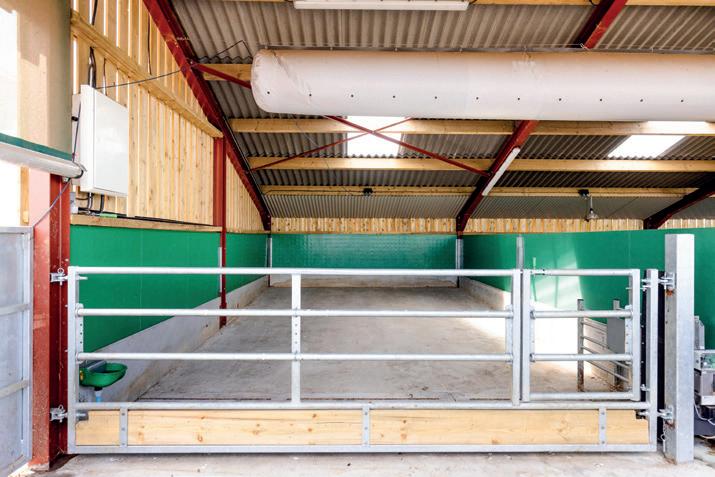
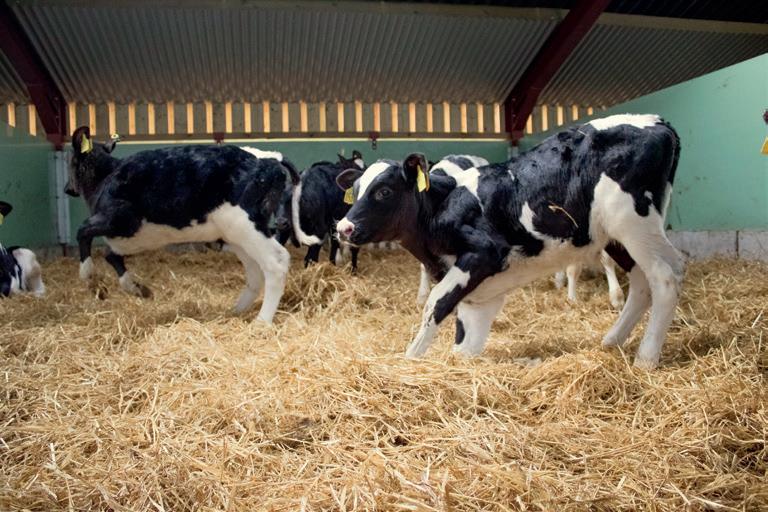


This is why we have always said we will include payment for the wider benefits farming provides, going beyond income forgone and costs incurred, to recognise social value.”
BPS payments
He announced that the existing Basic Payment Scheme (BPS) will be retained in 2025, with the SFS now starting in 2026 – a year later than originally proposed.
Under that scheme, direct BPS payments will be eliminated incrementally over five years, with a 20% reduction each year.
Technology Fund, water management investment, slurry infrastructure, calf housing, improved farm productivity and adding value to milk products.
JULY 2024 65 BUSINESS CLINIC Derrylin, Enniskillen, Co. Fermanagh, N. Ireland, BT92 9BL Tel: 028 6774 8377 (NI/UK) / 048 6774 8377 (IRE) Email: info@teemoreengineering.com www.teemoreengineering.com Prime Location Fresh Air Exceptional Airflow Easy to Clean Surfaces Thermal Dynamics Drainage for Reducing Moisture and Ammonia Measures to Prevent Disease Transmission
CALF BUILDING Professionally design by Jamie Robertson (Ventilation Expert)
MONO
STAFFING
Finding the right employee for a farm can be as crucial as selecting the right crop to plant or cow to buy.
Paul Harris, chief executive at sta specialist REAL Success, says: “ e people you bring into your farm can signi cantly impact productivity, e ciency, and workplace morale.
“From their initial conversation to the presentation of their CV and their demeanour during an interview, several indicators can help you identify candidates worth investing in.”
Passion
for agriculture
rMr Harris says during initial conversations, employers should listen for genuine enthusiasm and interest in agriculture.
“Candidates who express a real passion for the sector are likely to be more dedicated, motivated, and willing to go the extra mile.”
Relevant experience and skills
rA well-cra ed CV should highlight not only relevant work experience but also speci c skills relating to farming, says Mr Harris.
“Look for candidates with relevant farming experience, for example animal husbandry, machinery operation, or other related elds.”
But he adds it is also worth considering people outside the industry who may have transferable skills.
“Look for signs they are making steps to learn and have the right behaviours to be trained.
“Additionally, certi cations or completed training courses can be indicators of commitment to their professional development.”
Adaptability and problemsolving abilities
rFarm work is unpredictable, and employees must be able to adapt to changing conditions and solve problems as they arise.
Mr Harris says: “During the interview, ask candidates about times they had to adjust to unexpected situations or solve complex problems. eir responses can provide
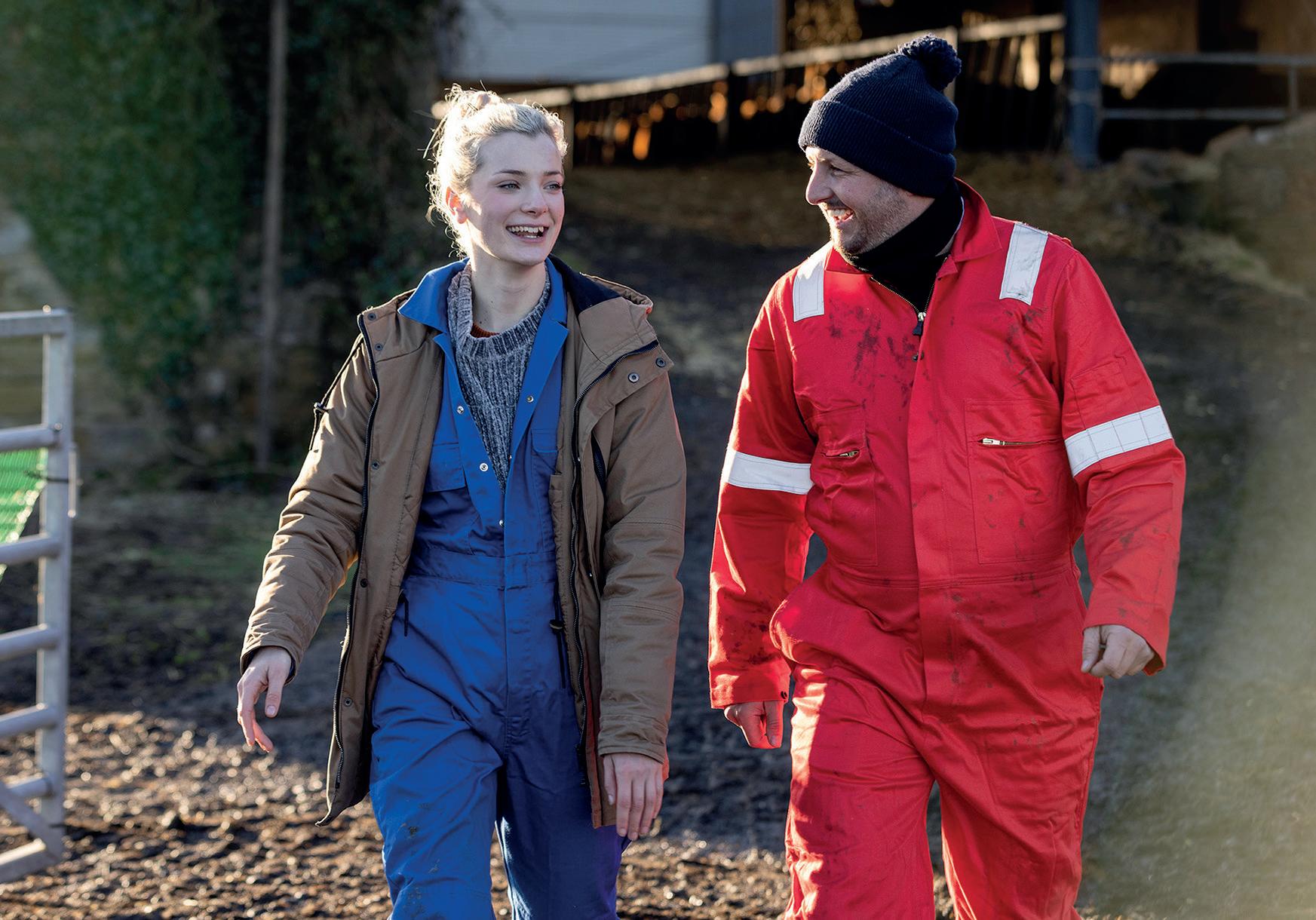

Paul Harris says it is worth considering candidates from outside the industry who may have transferable skills.
The right employee can propel a farm team to success, while the wrong person can have negative impacts across the business. So what qualities should employers look for? Dairy Farmer reports.
Key qualities for farm employees
insight into their adaptability and problem-solving skills.”
Physical stamina and health
rFarming is physically demanding, so Mr Harris says it is important to discuss and assess, within legal boundaries, a candidate’s physical ability to handle the tasks required.
While speci c capabilities can vary by role, general stamina and good health are important for most farm work.
Teamwork and communication skills
rE ective communication and the ability to work as part of a team are crucial in a farm se ing.
Mr Harris advises paying a ention to how candidates communicate during their interviews and how they describe past teamwork experiences.
“ eir interaction with sta during on-site trial days can also be telling,” he adds.
Reliability and work ethic
rA strong work ethic and reliability are essential and Mr Harris says candidates should be able to provide references that can a est to their punctuality, dependability, and dedication to previous jobs.
Eagerness to learn
r e agricultural sector is constantly evolving, so Mr Harris says it is important to look for candidates who show an eagerness to expand their knowledge and skills.
“ is can be demonstrated by their career progression, ongoing education, or speci c examples of how they have adopted new techniques or technologies.”
Observation of professionalism
rMr Harris says: “Professionalism in the ways candidates present themselves in their CV, during communication, and in the interview can indicate their seriousness about the
job. A ention to detail, punctuality, and respectful interaction are all positive signs.”
Vision and long-term interest
rMr Harris advises discussing career goals with candidates and looking for those with a vision that aligns with the long-term goals of the farm.
“ ose who see a future in agriculture and have speci c goals in the industry are more likely to be invested in their roles and contribute to the farm’s success over time.”
Understanding their personality
rIt is important to truly understand the candidates you are considering and whether they have the right values, behaviours and desires to match your farm says Mr Harris.
“Consider where their personality could bene t parts of your farm or team where there are gaps.”
JULY 2024 66











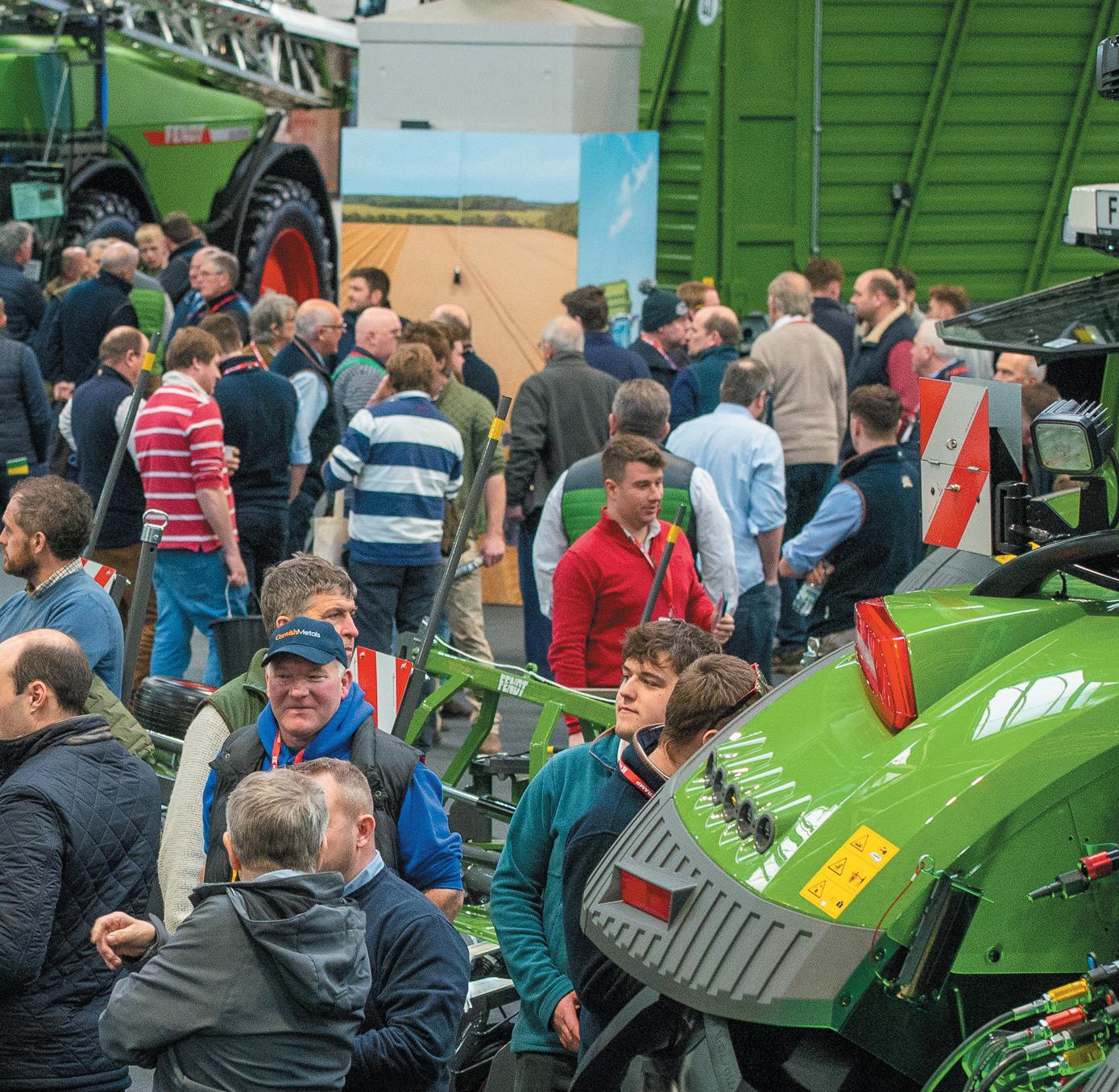




Benefits of exhibiting at LAMMA 25


The UK’s Premier Agricultural Machinery and Technology Show 15 - 16 January 2025, NEC, Birmingham






40,000+ 650+
87% 88% of exhibitors were satisfied with the event of exhibition space is booked exhibited at LAMMA 24 attended LAMMA 24






15-16 January 2025 Maximise your business potential at LAMMA 25
✔ Engage with key decision makers ✔ Promote your products and services ✔ Increase brand awareness ✔ Increase brand credibility ✔ Launch new brand, product or service
✔ Meet current customers
To apply for a stand please scan the QR code or visit LAMMAshow.com





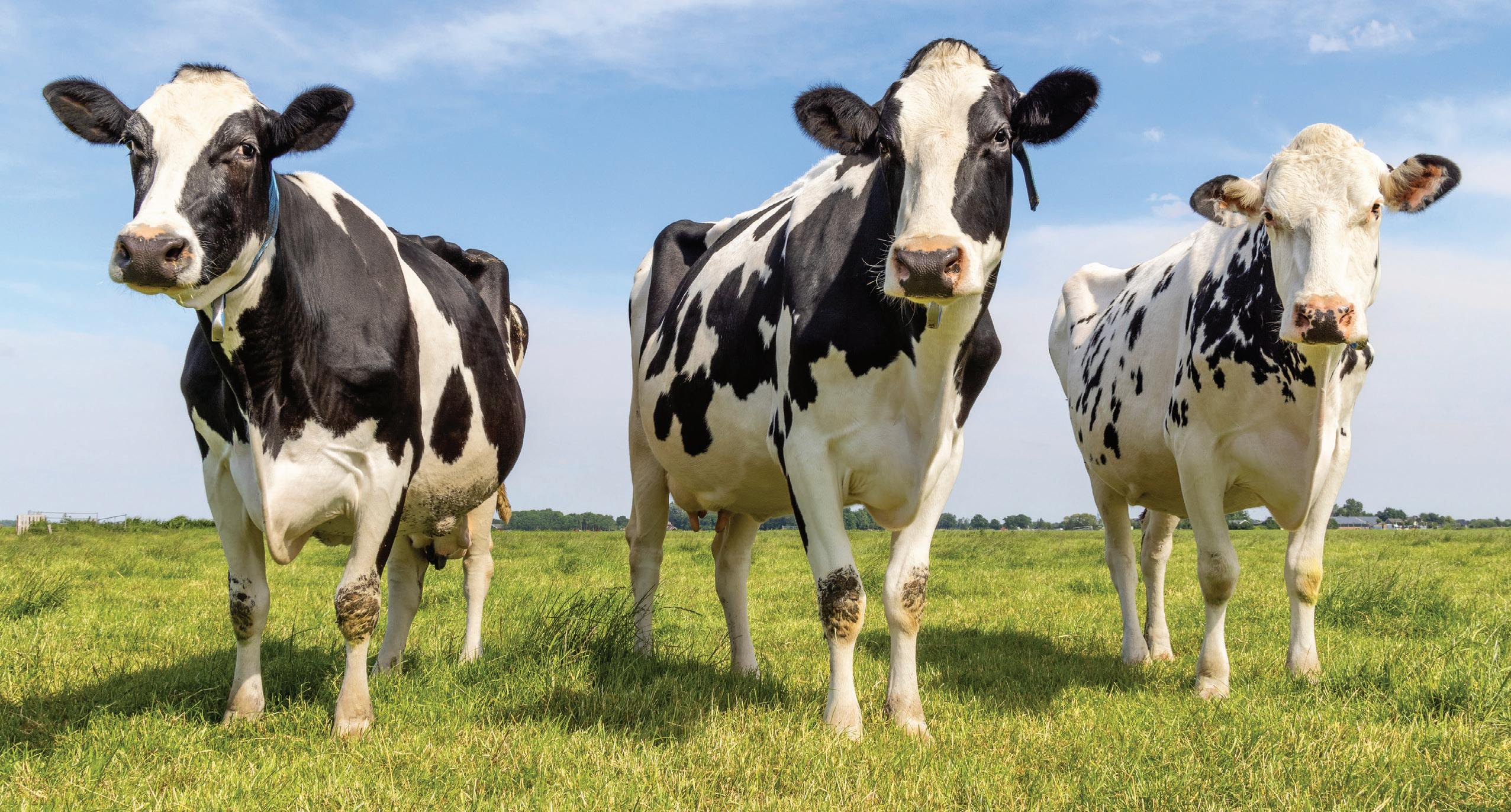
Finance for Farms provide a wide range of agricultural finance solutions to support business growth, including Business Loans, Hire Purchase and flexible Seasonal Leases. With simple applications and same day decisions, we help farmers invest in a wide range of assets whilst spreading costs for up to 5 years.
Livestock Vehicles Machinery Energy projects business-related Buildings Almost anything What type of assets can be financed? Finance for business use customers only. All finance is subject to eligibility, credit status, approval, terms and conditions. Finance for Farms is a trading name of Shire Leasing PLC who is authorised and regulated by the Financial Conduct Authority for certain types of consumer credit lending and credit related activities that are regulated under the Consumer Credit Act 1974 and by the Financial Services and Markets Act 2000. Get in touch to discuss the finance options available for your farm today: Call: 01827 300 333 Visit: www.financeforfarms.co.uk



























































































































 Jonathan Wilkinson
Jonathan Wilkinson








































































































































































































































































































































































































































































































































